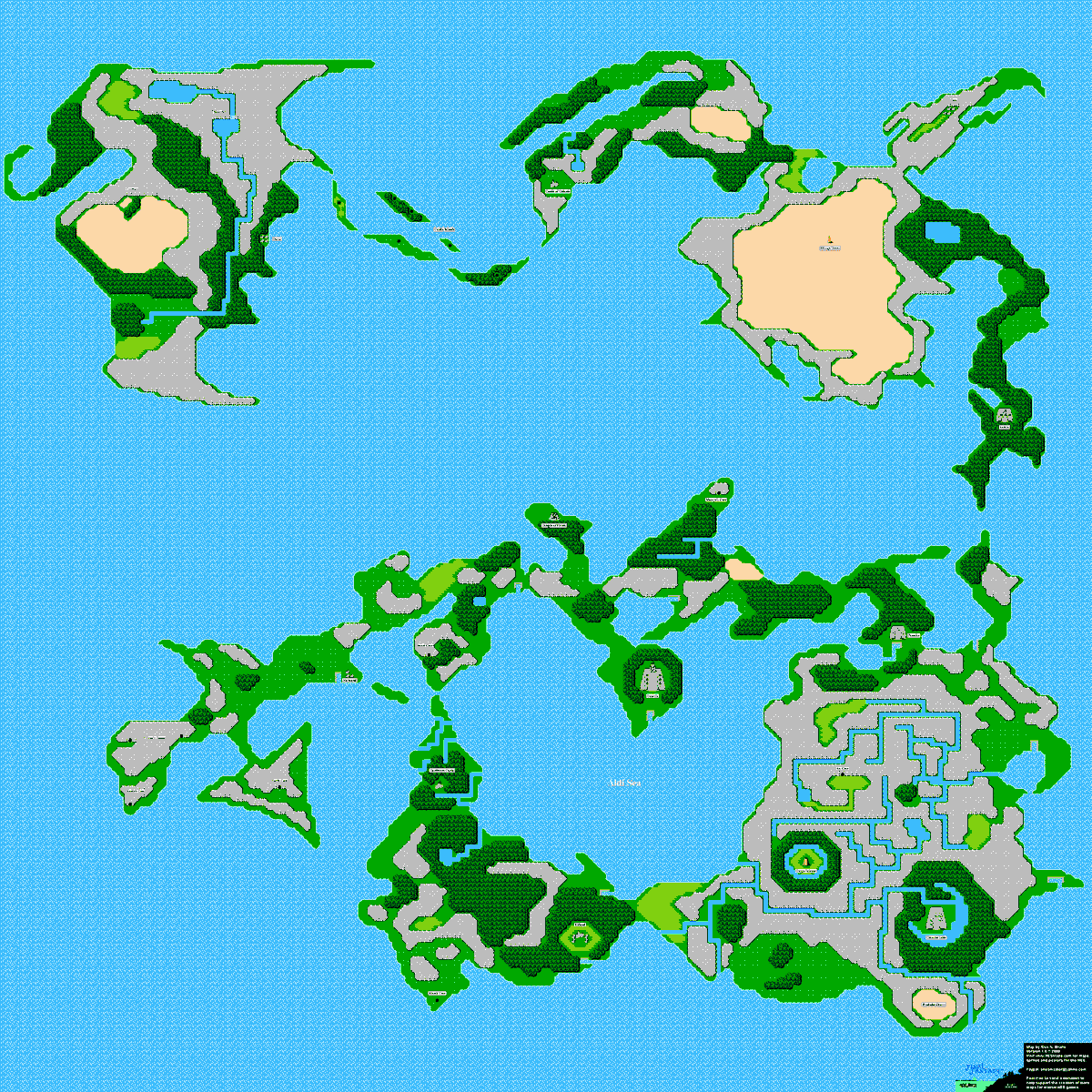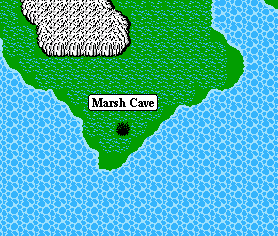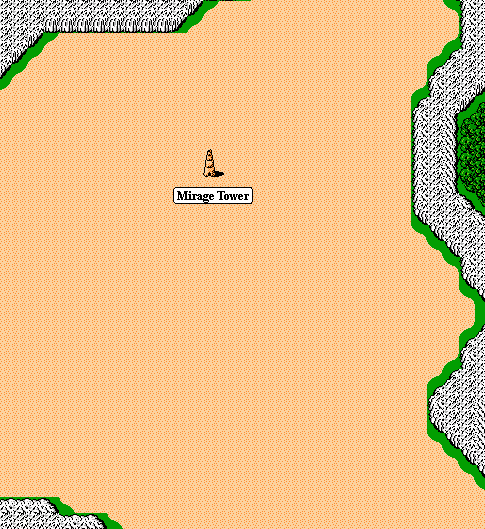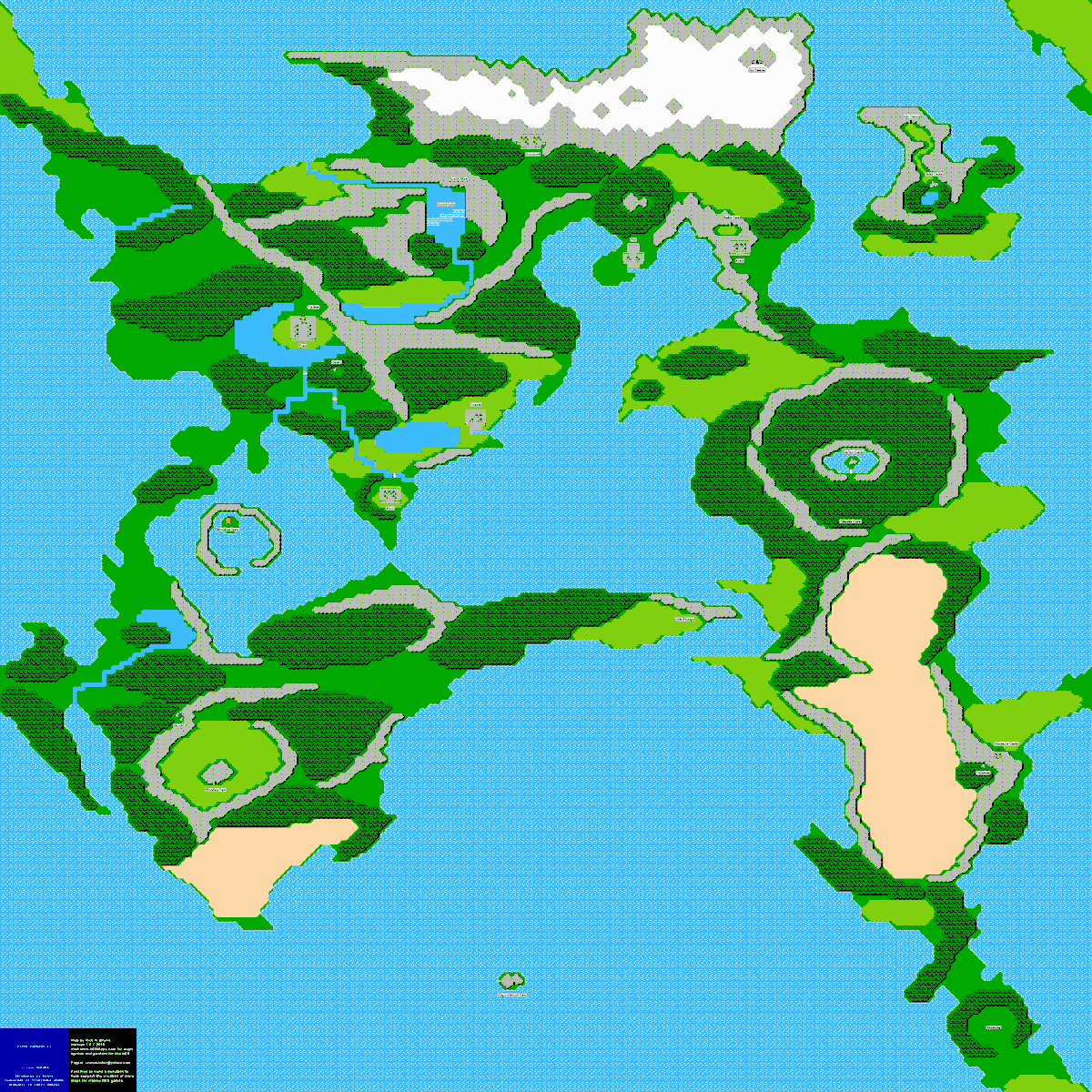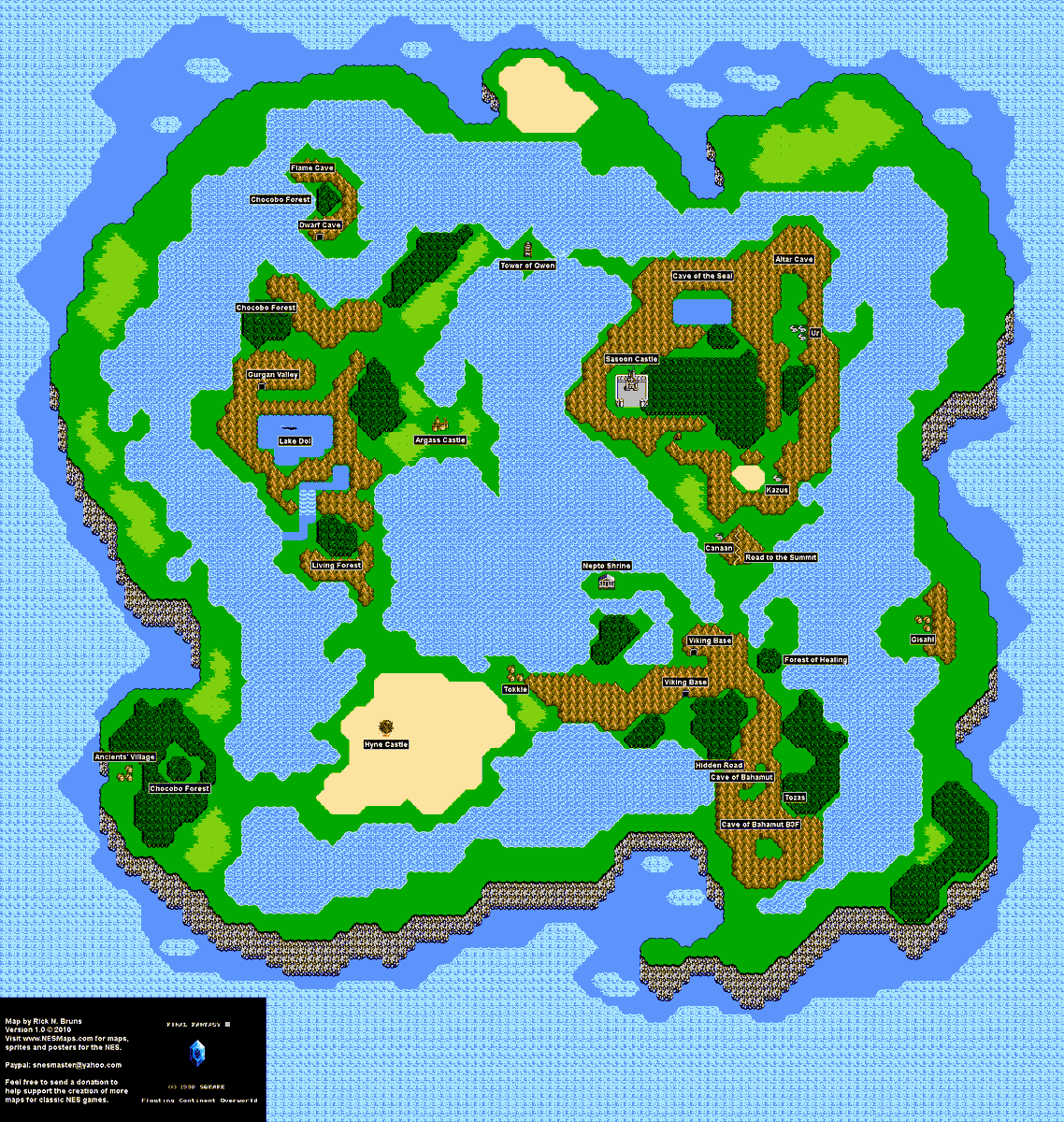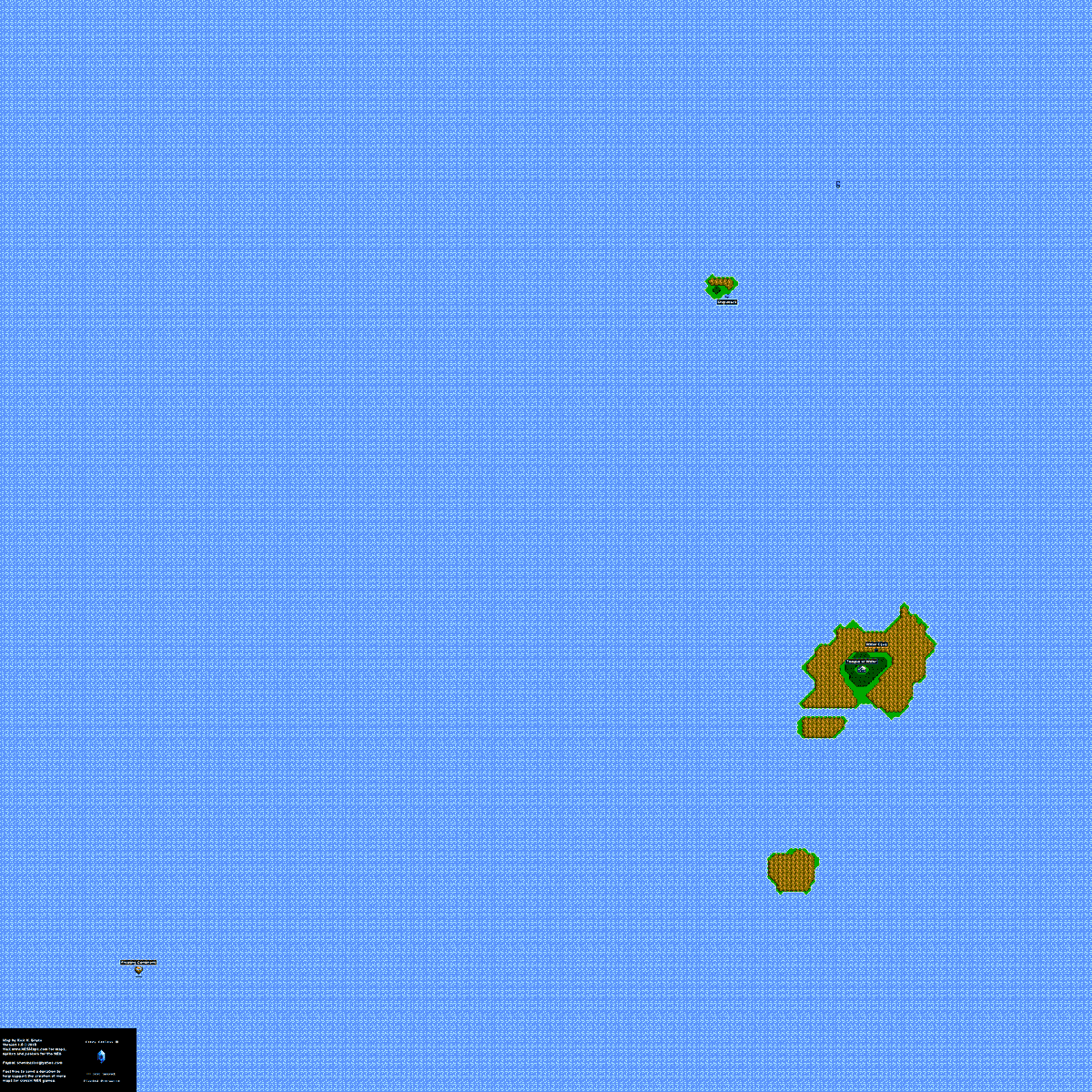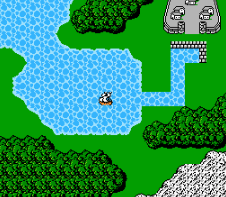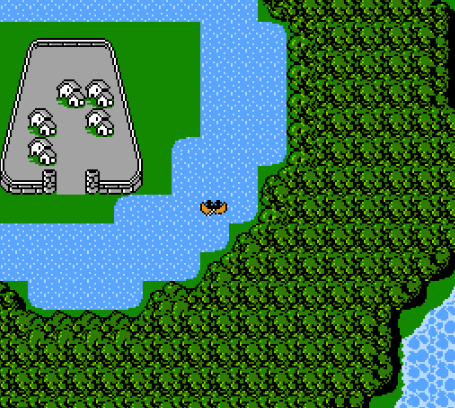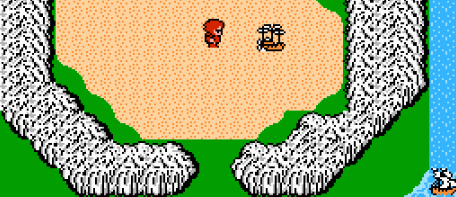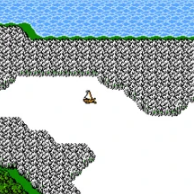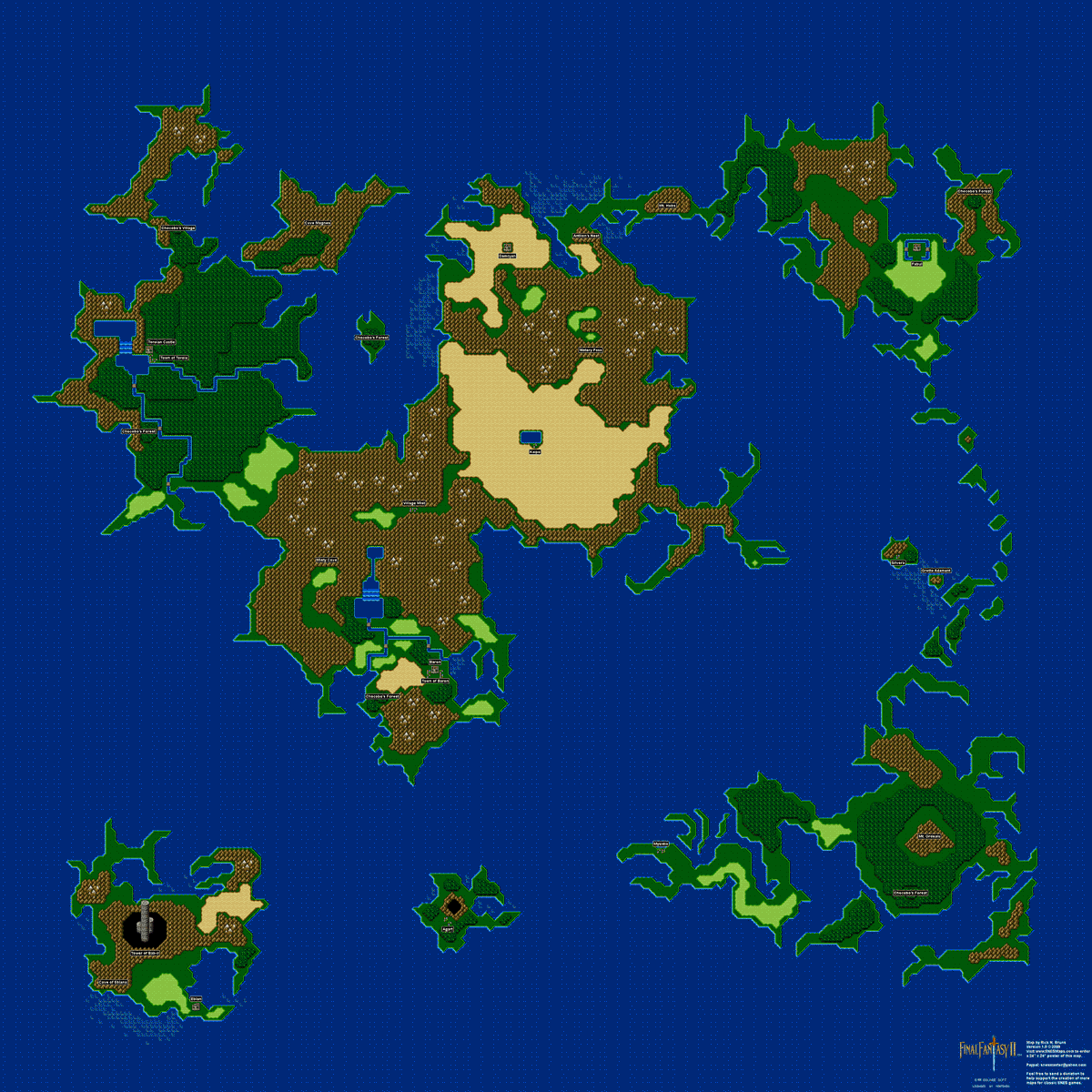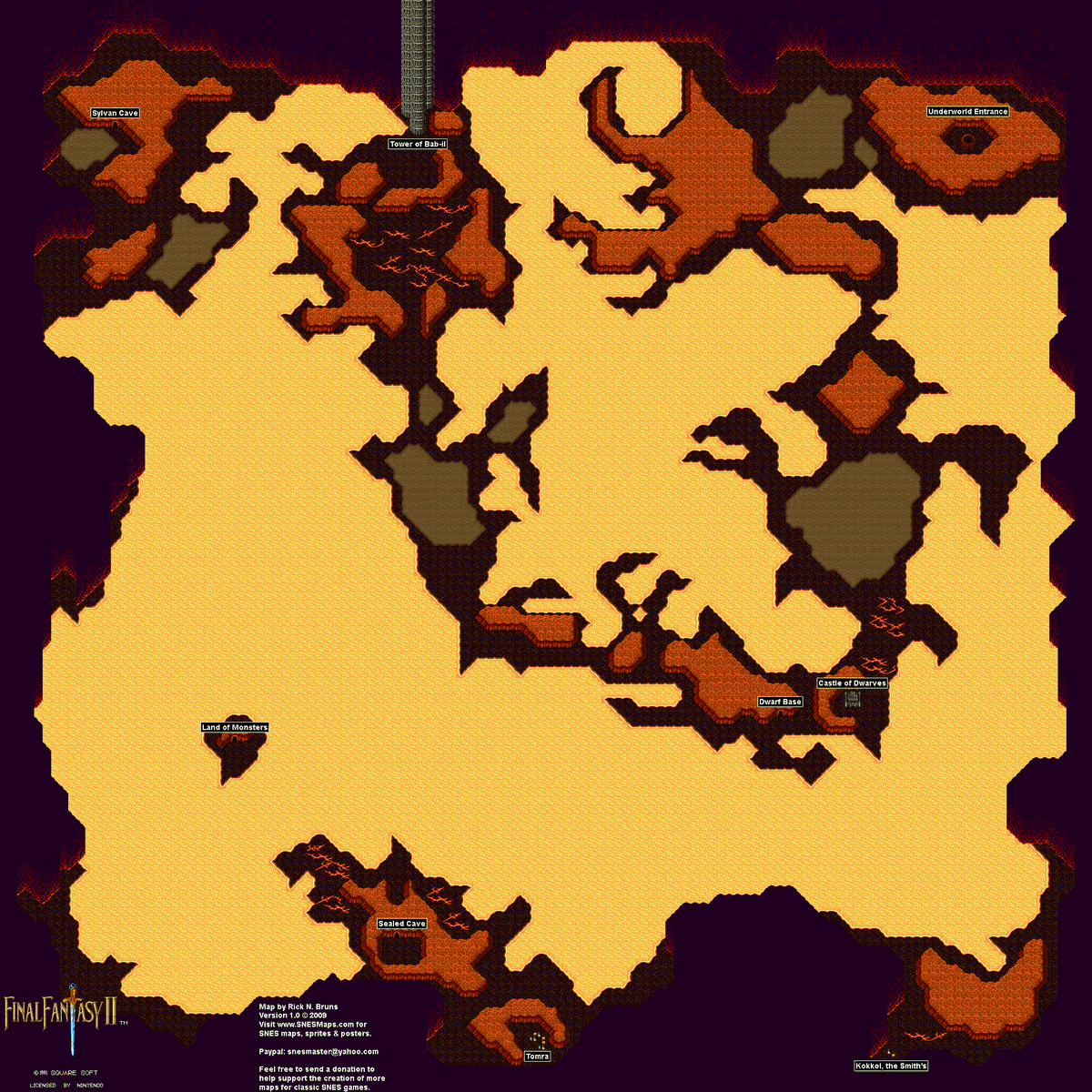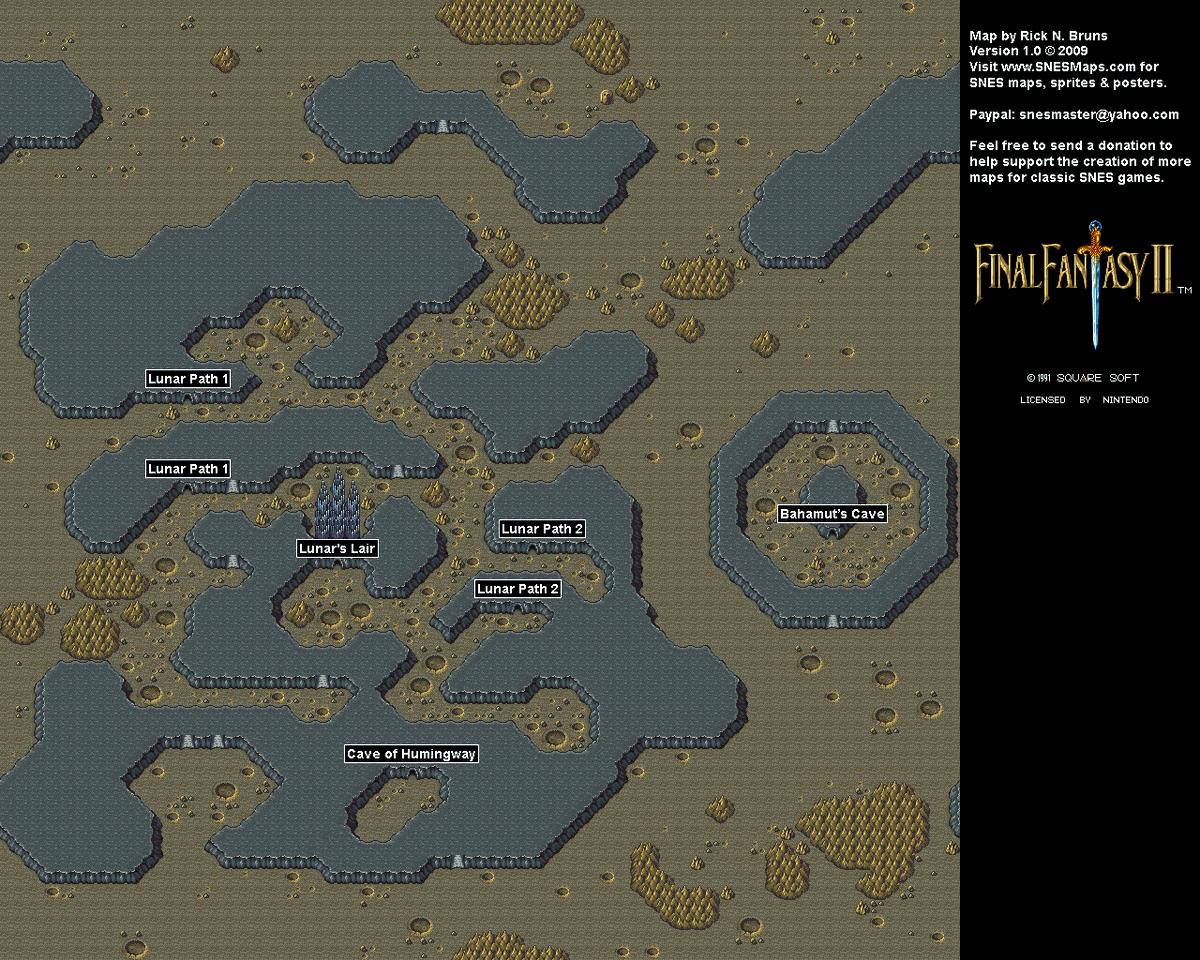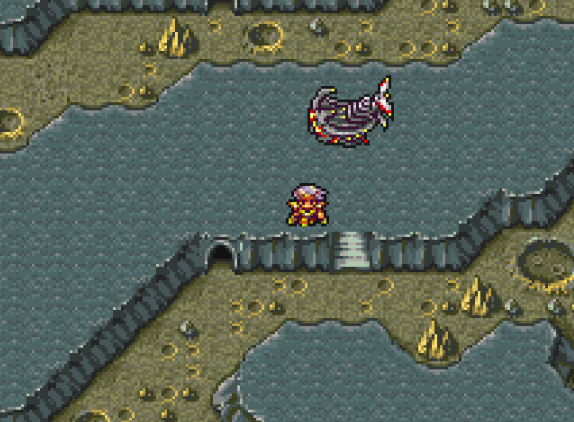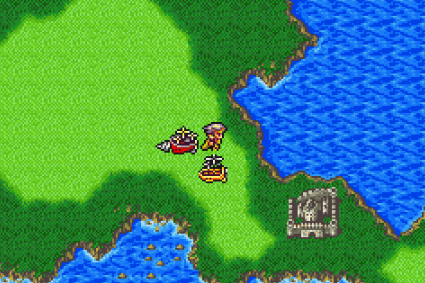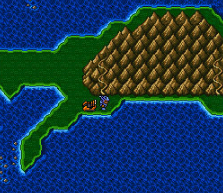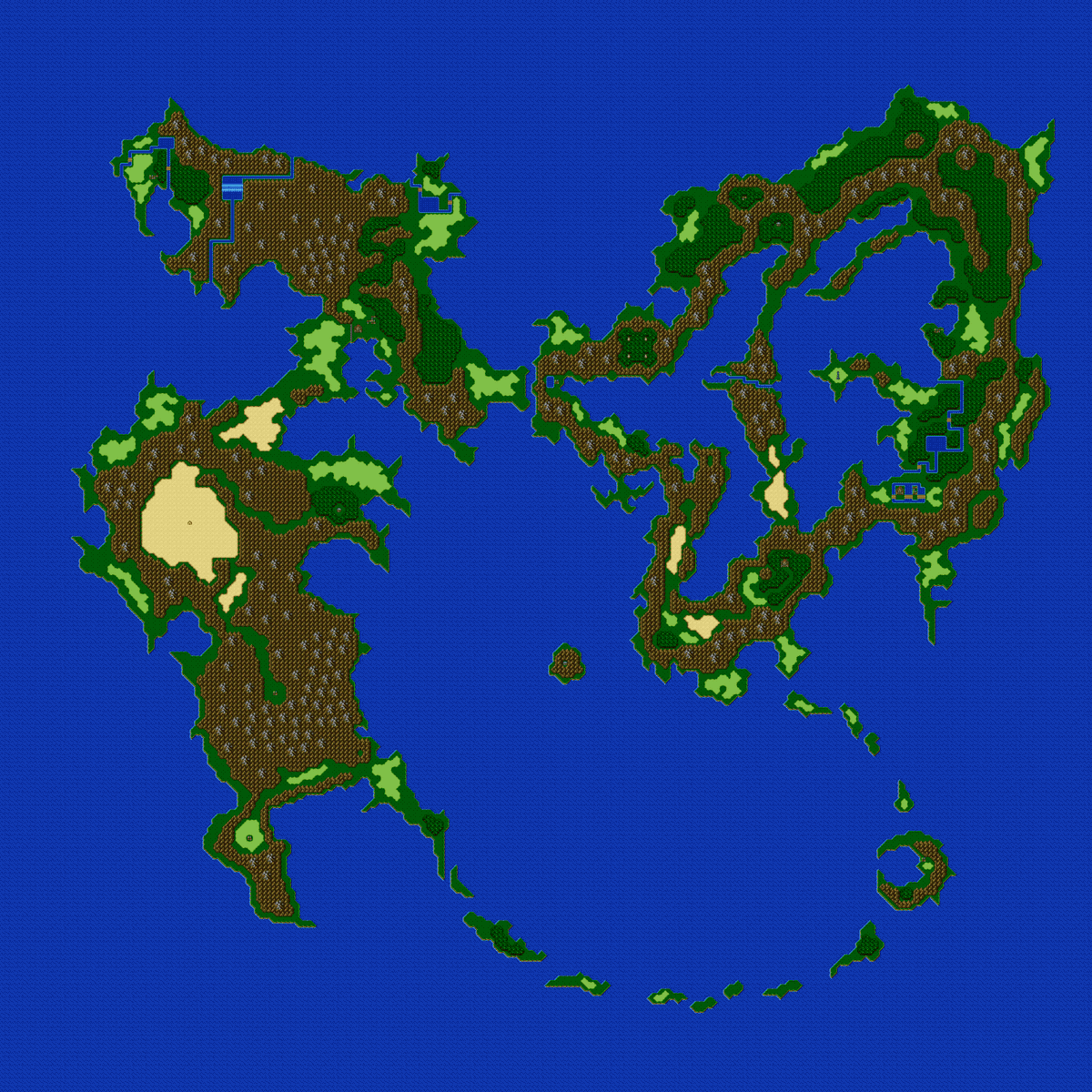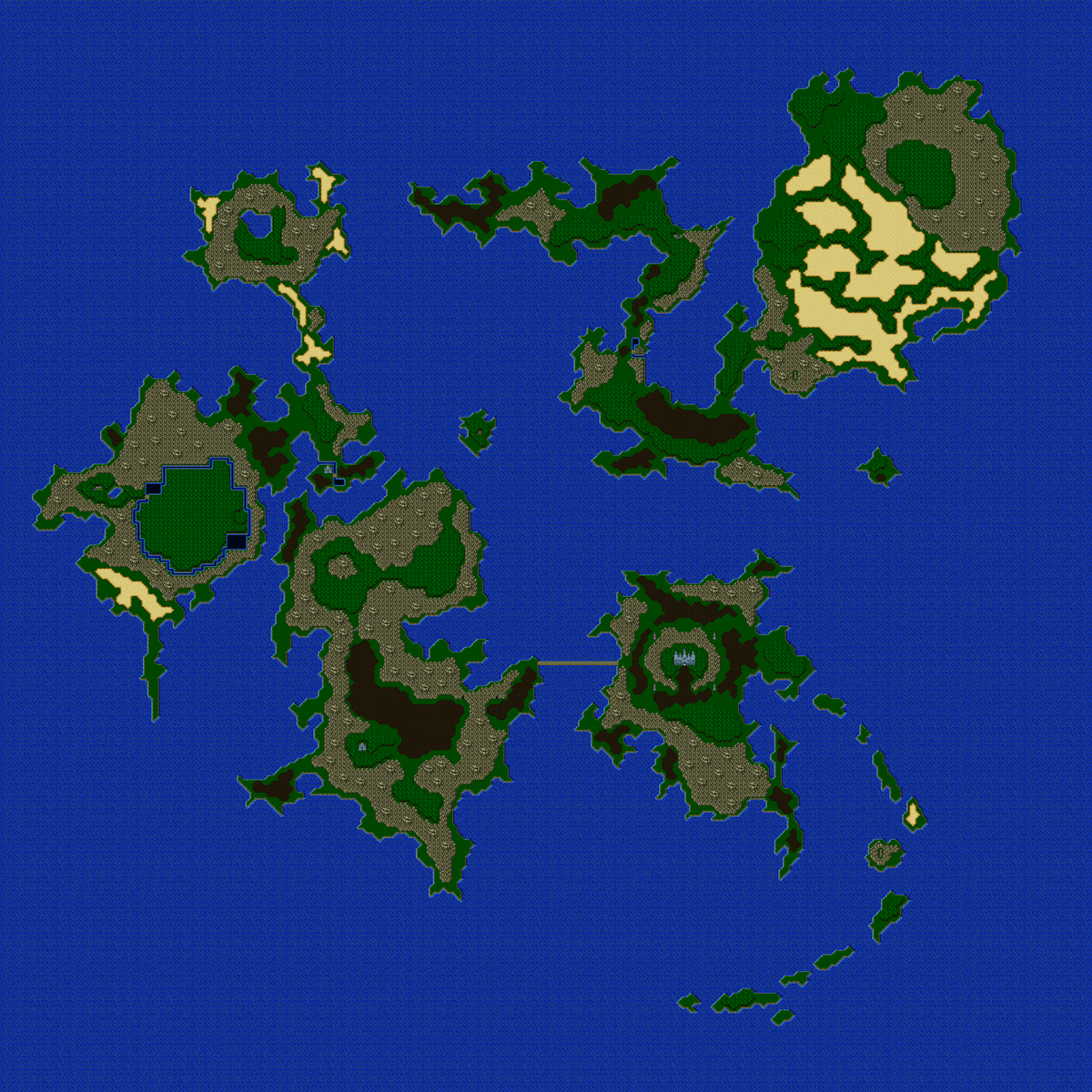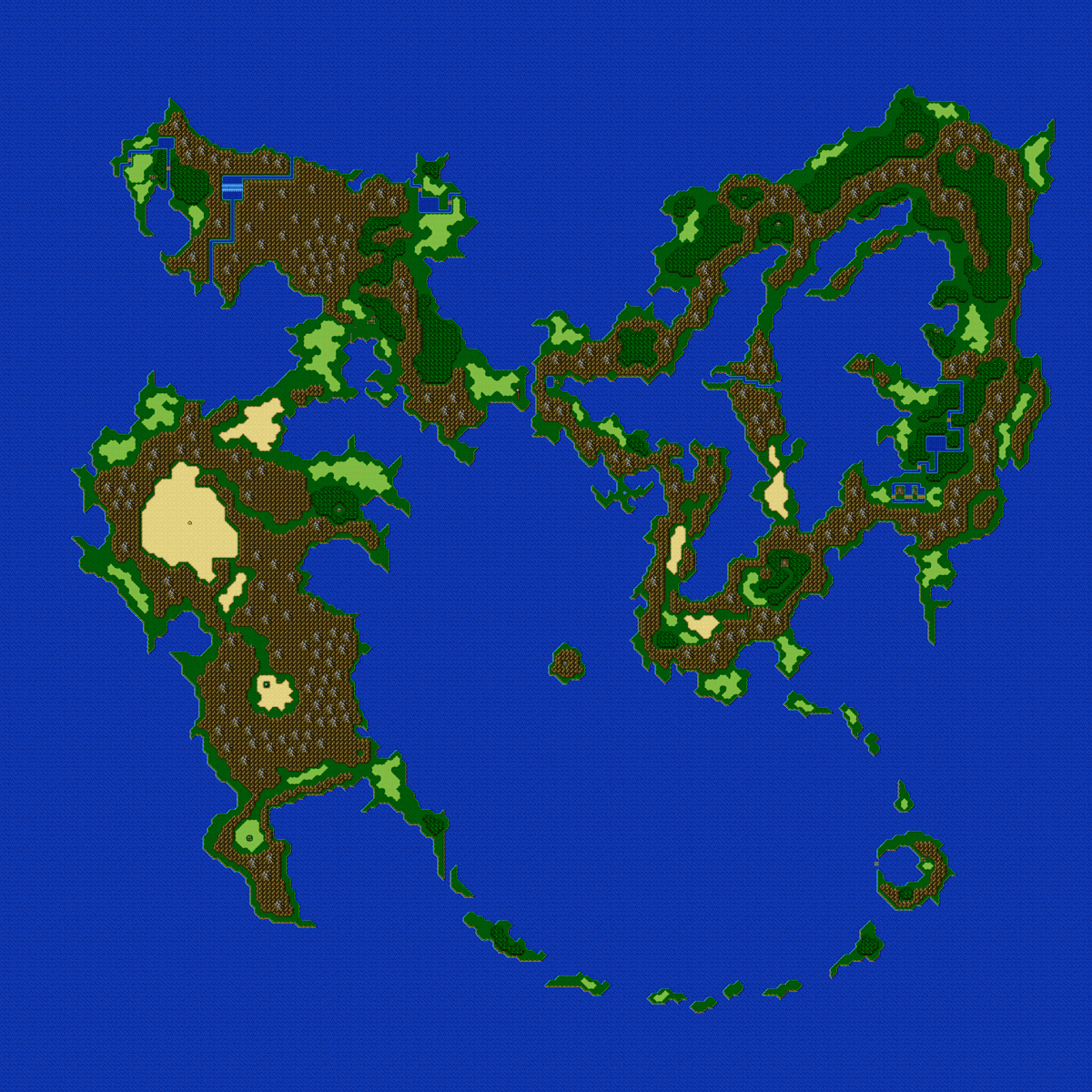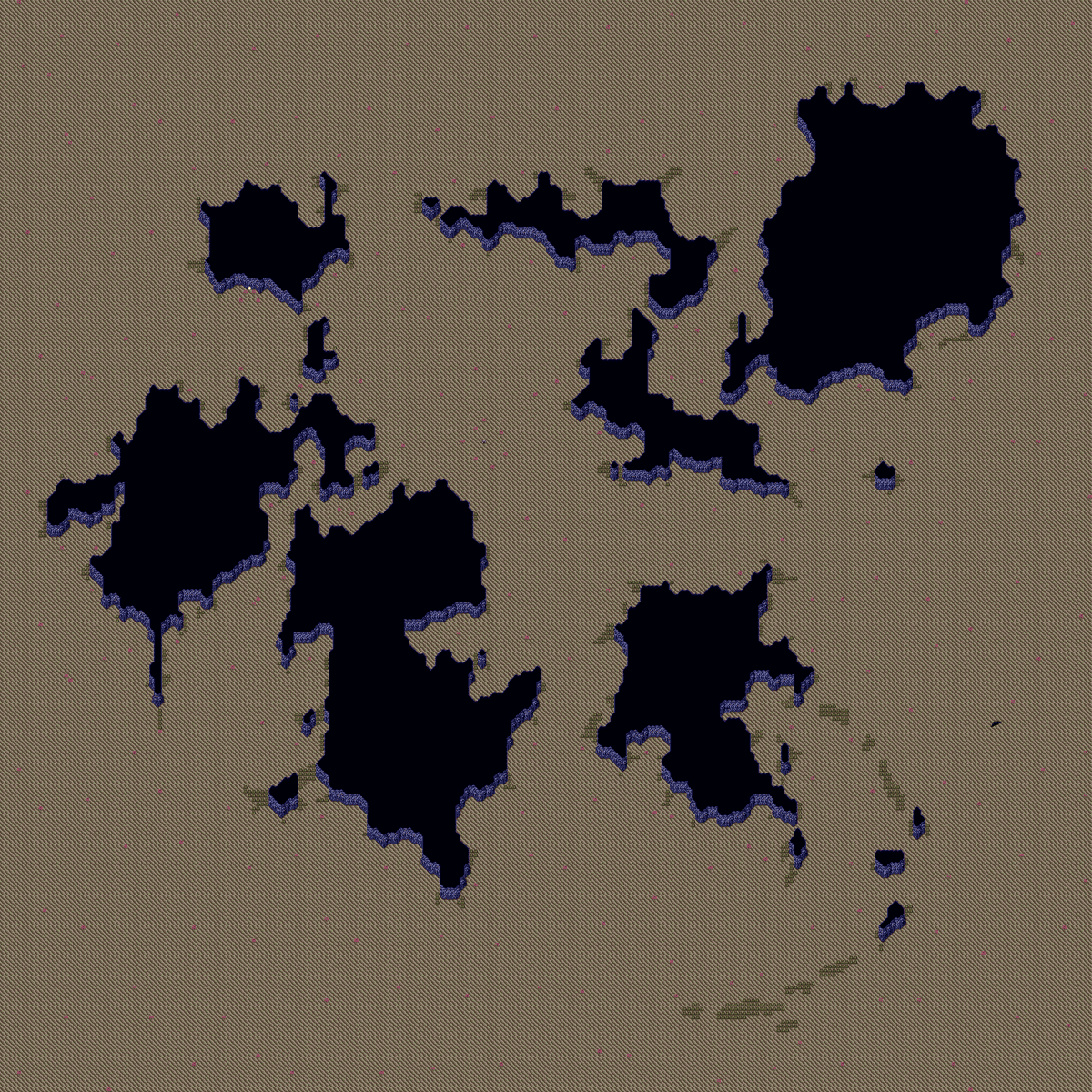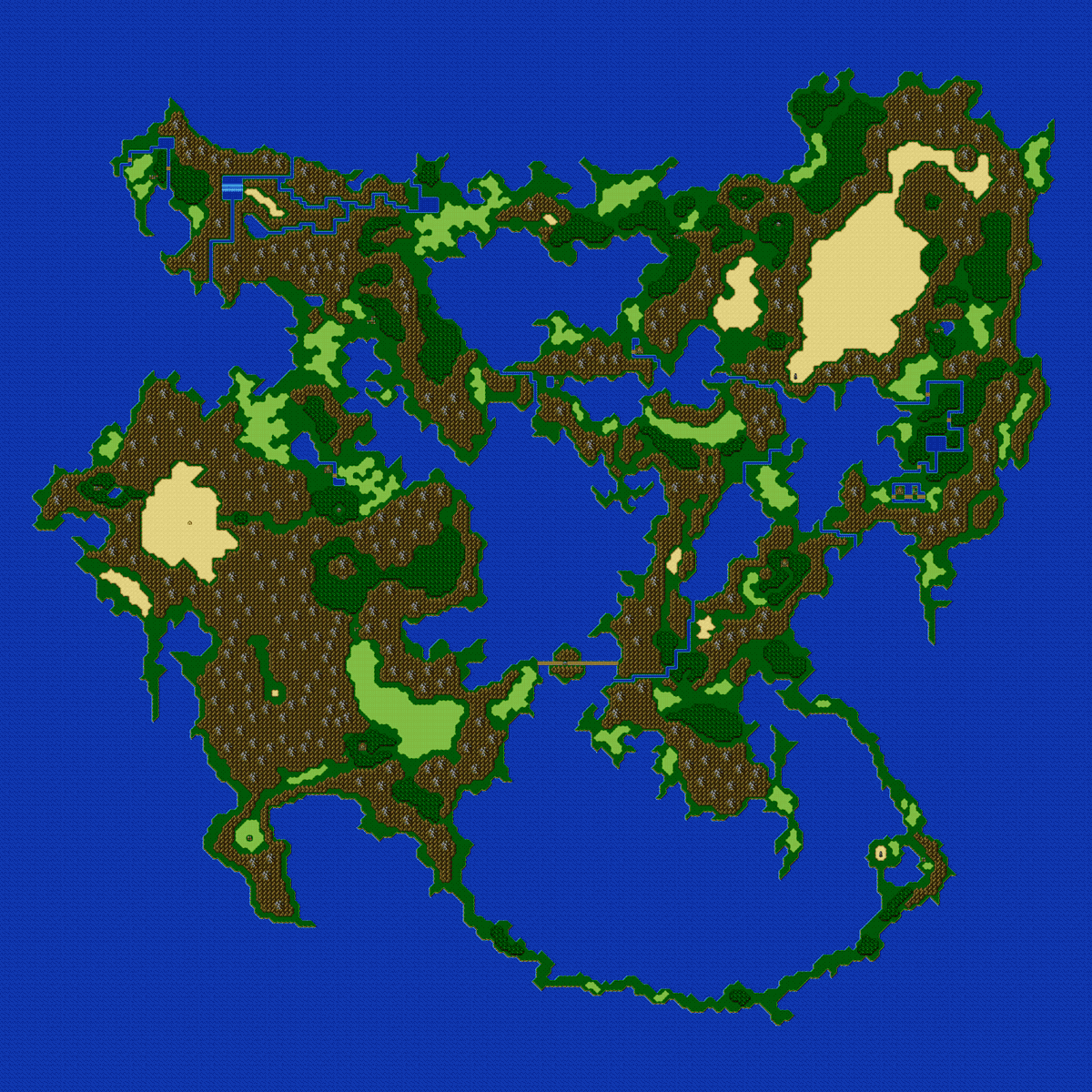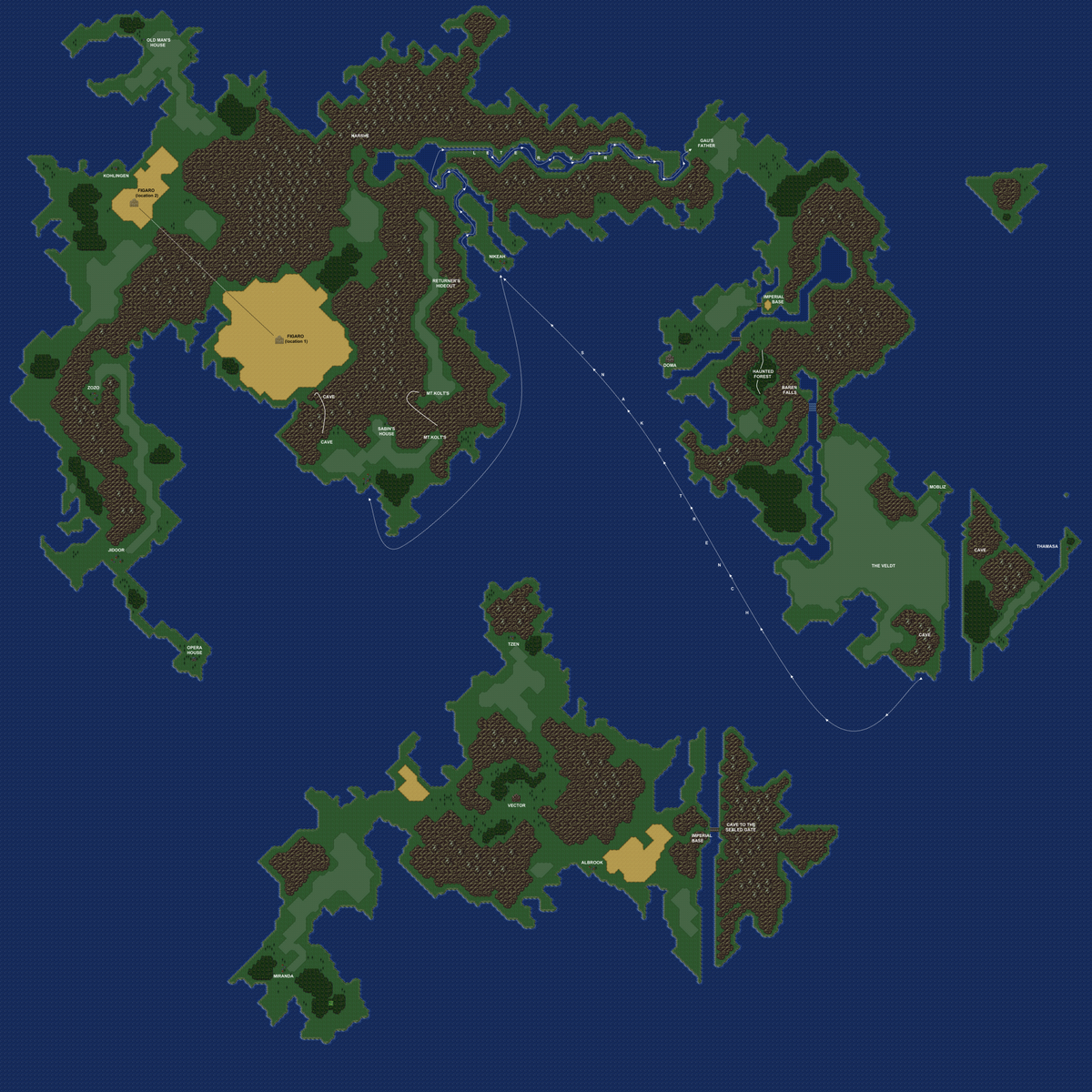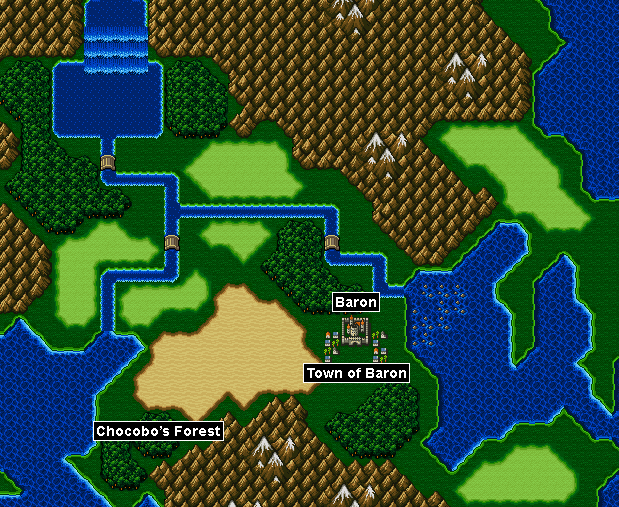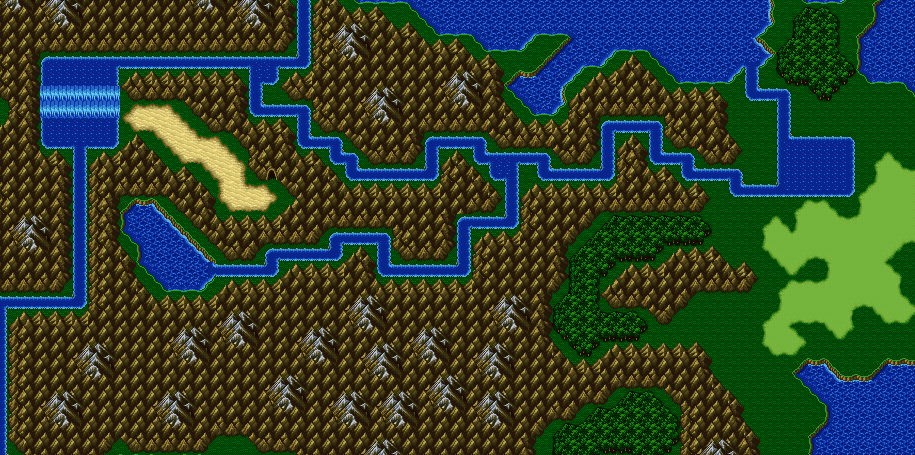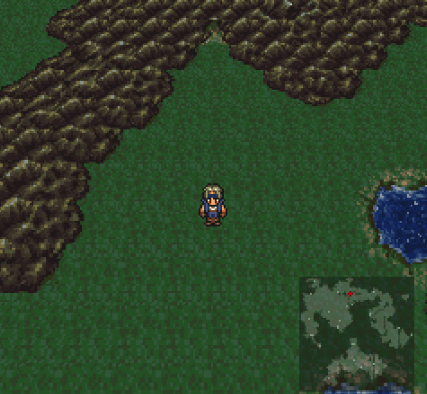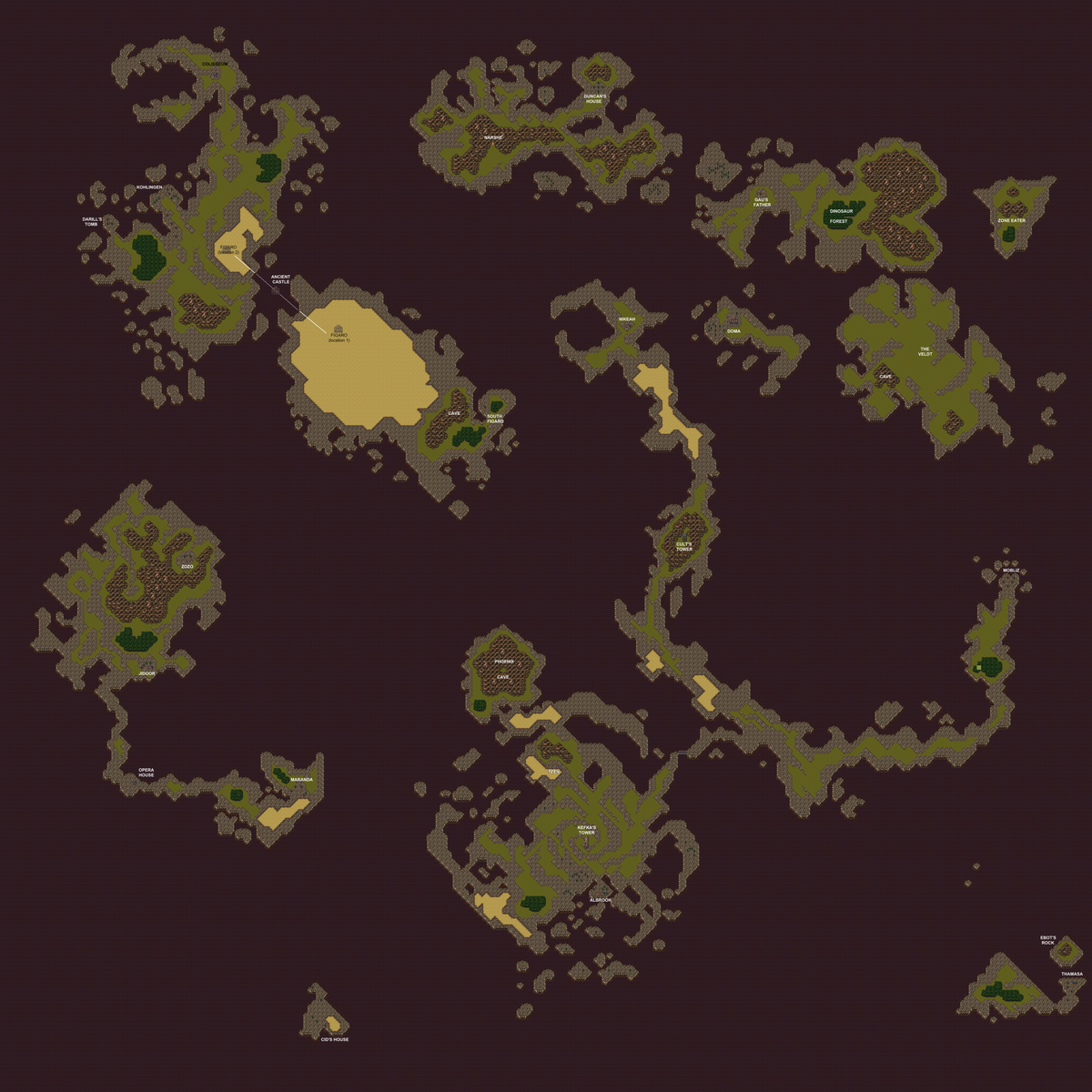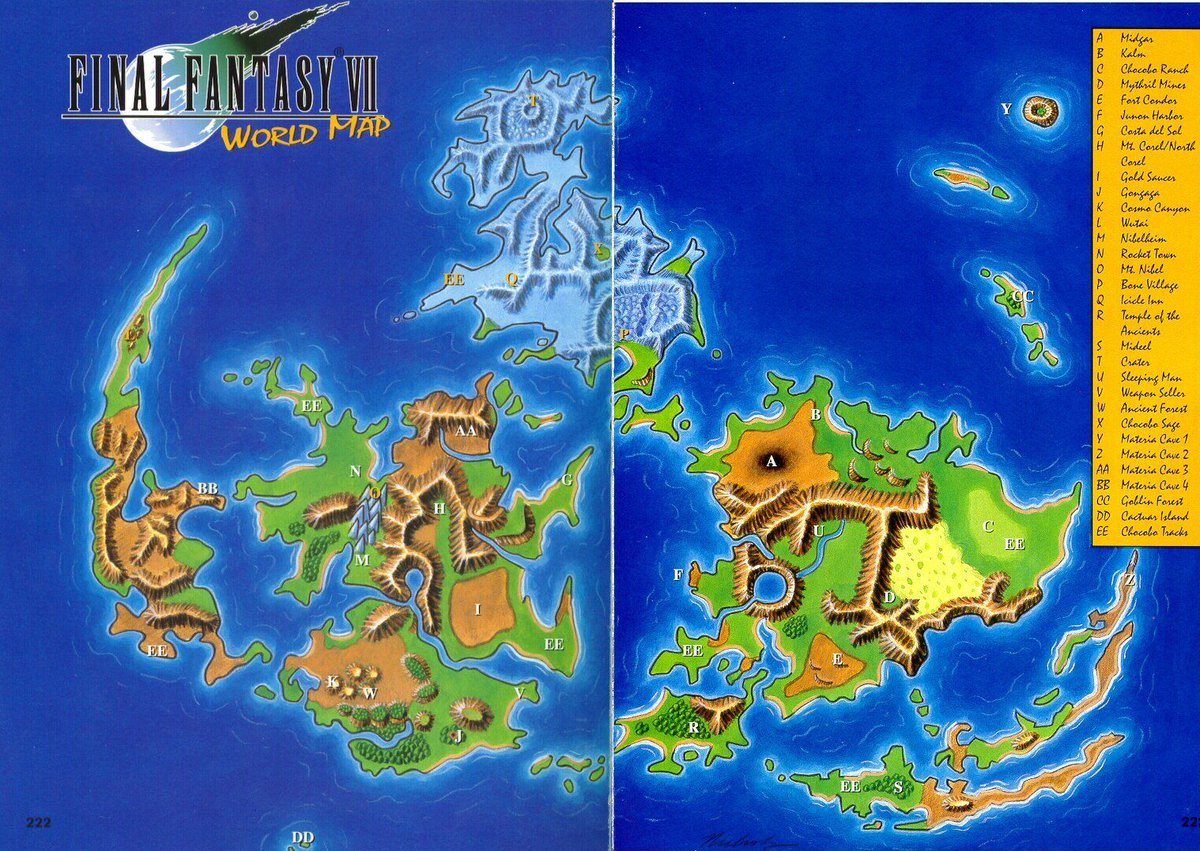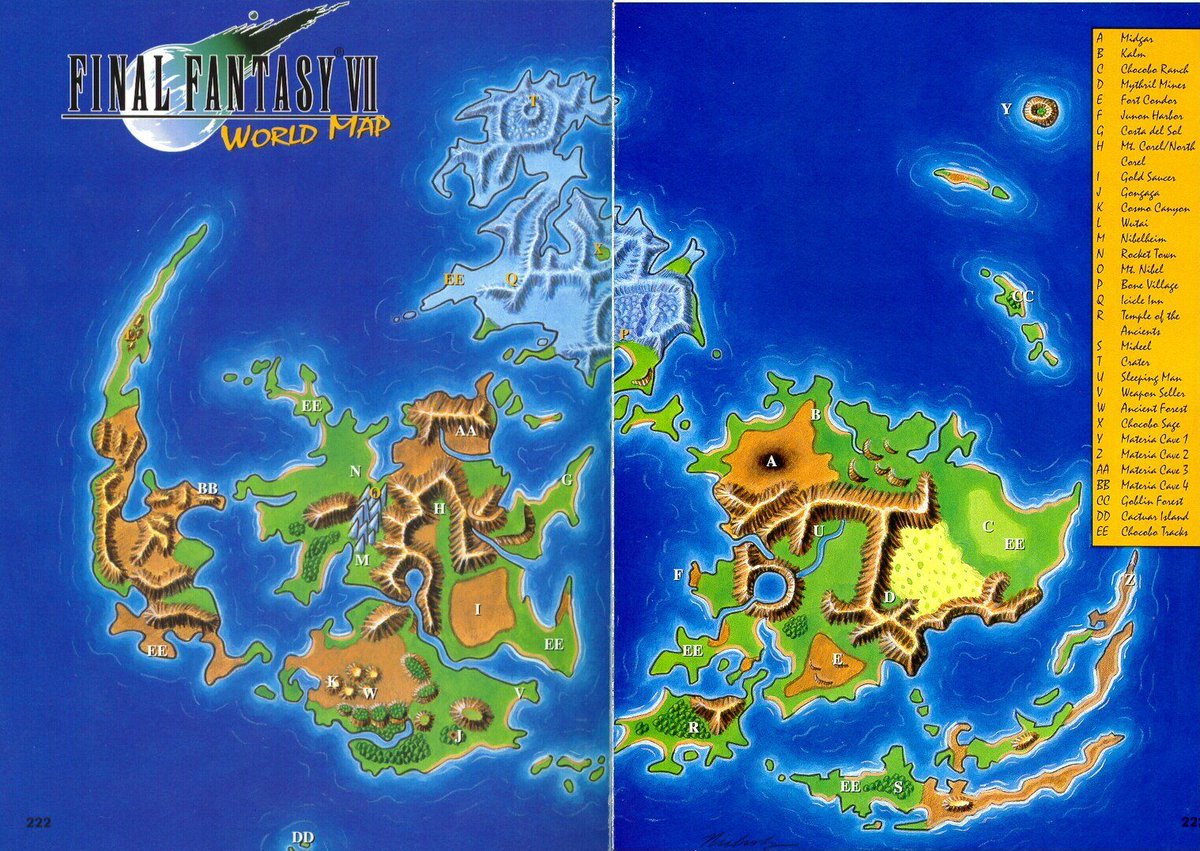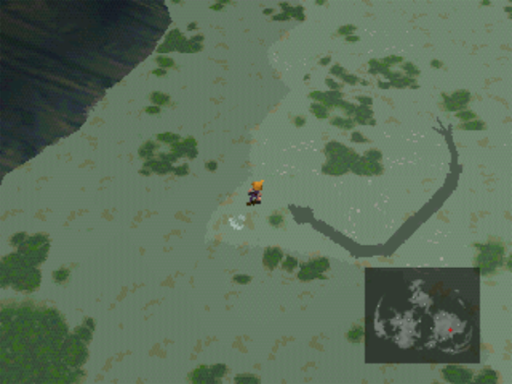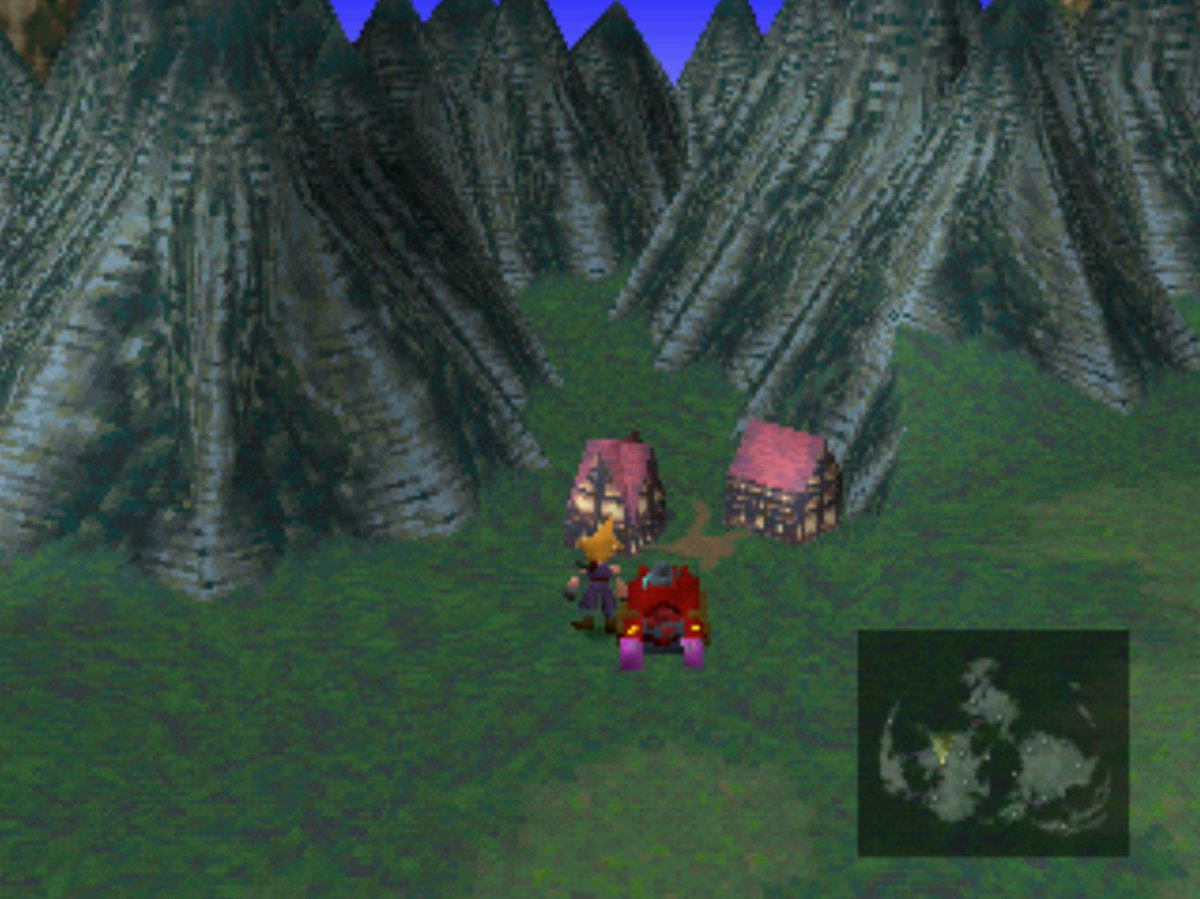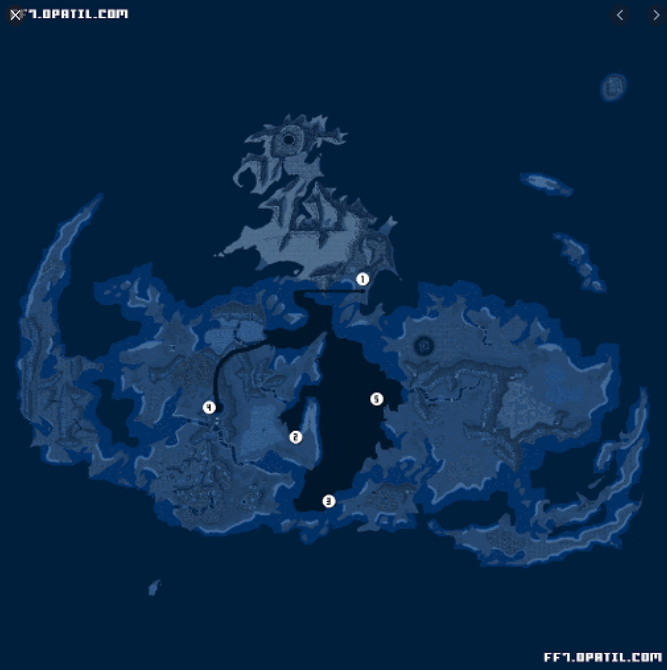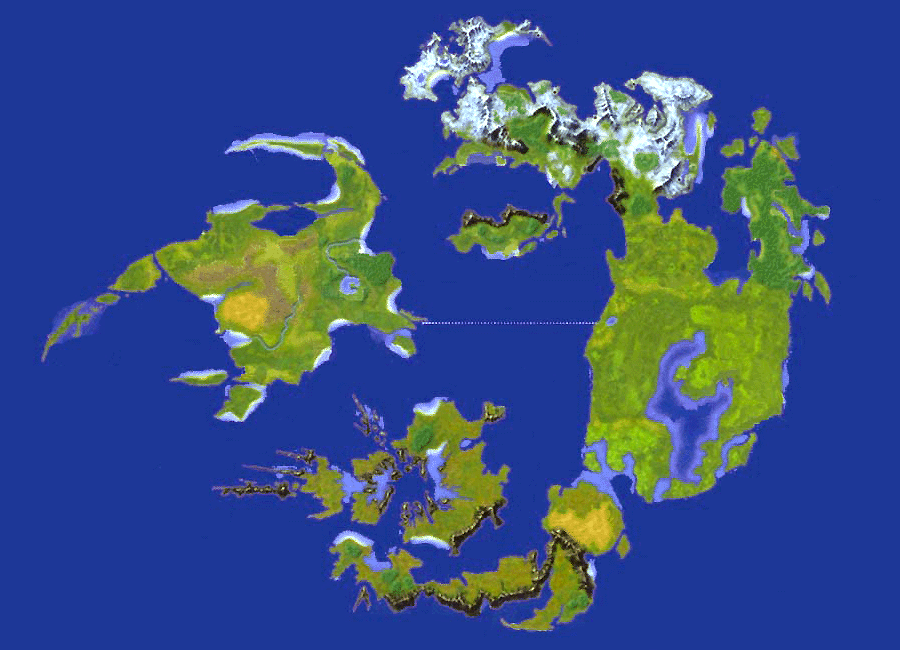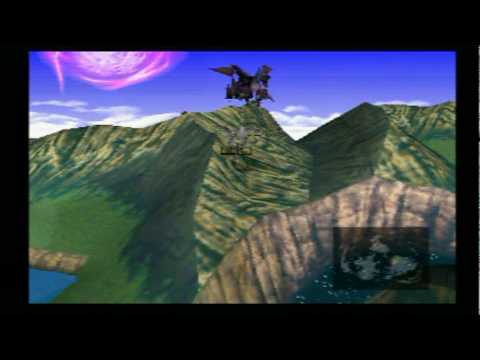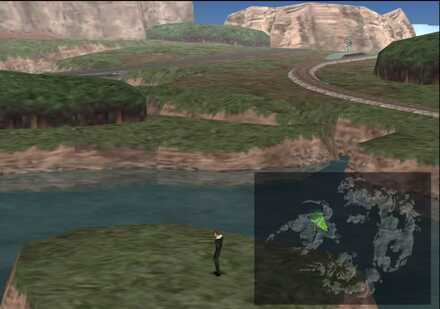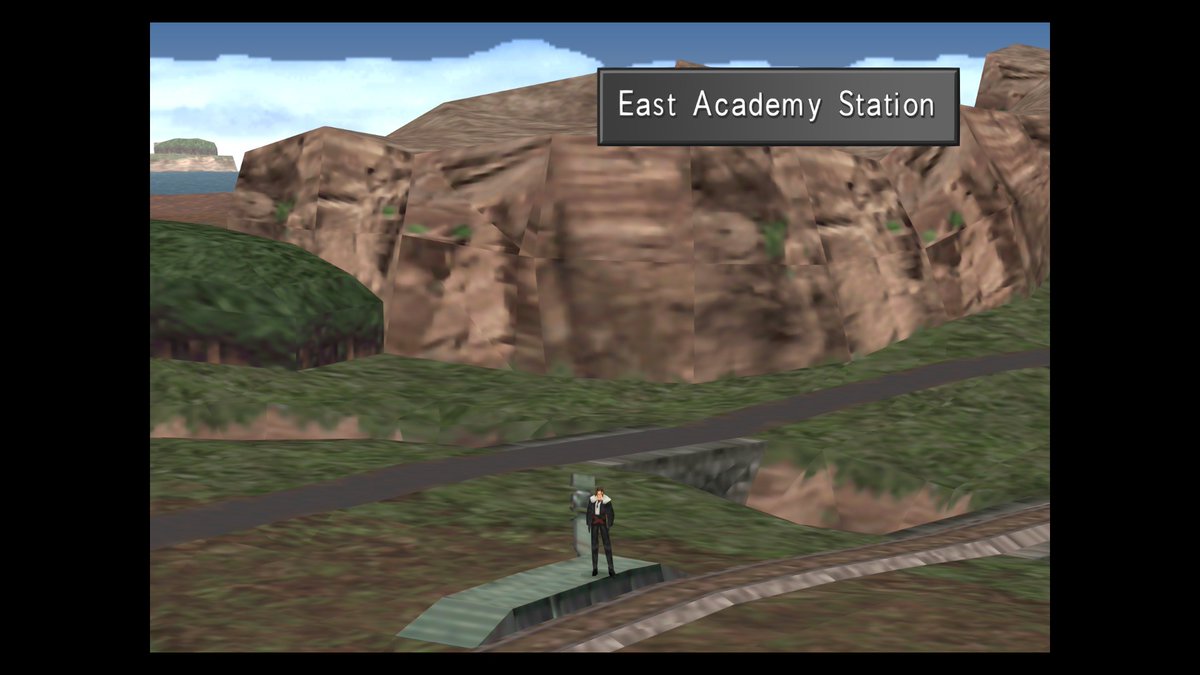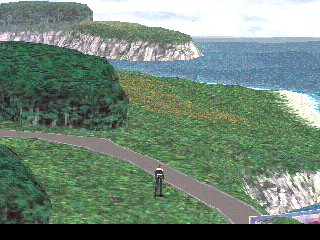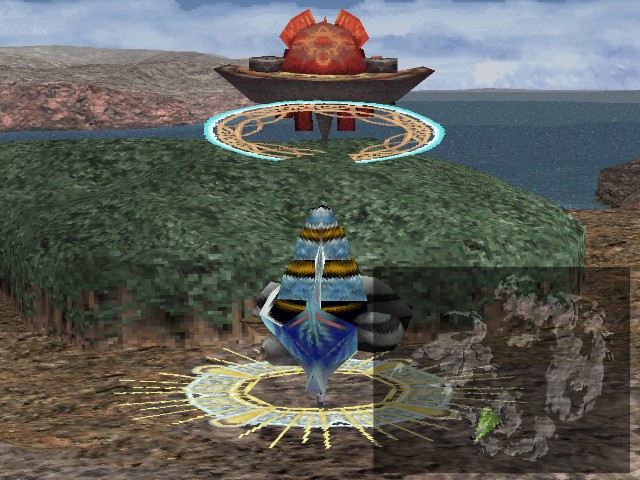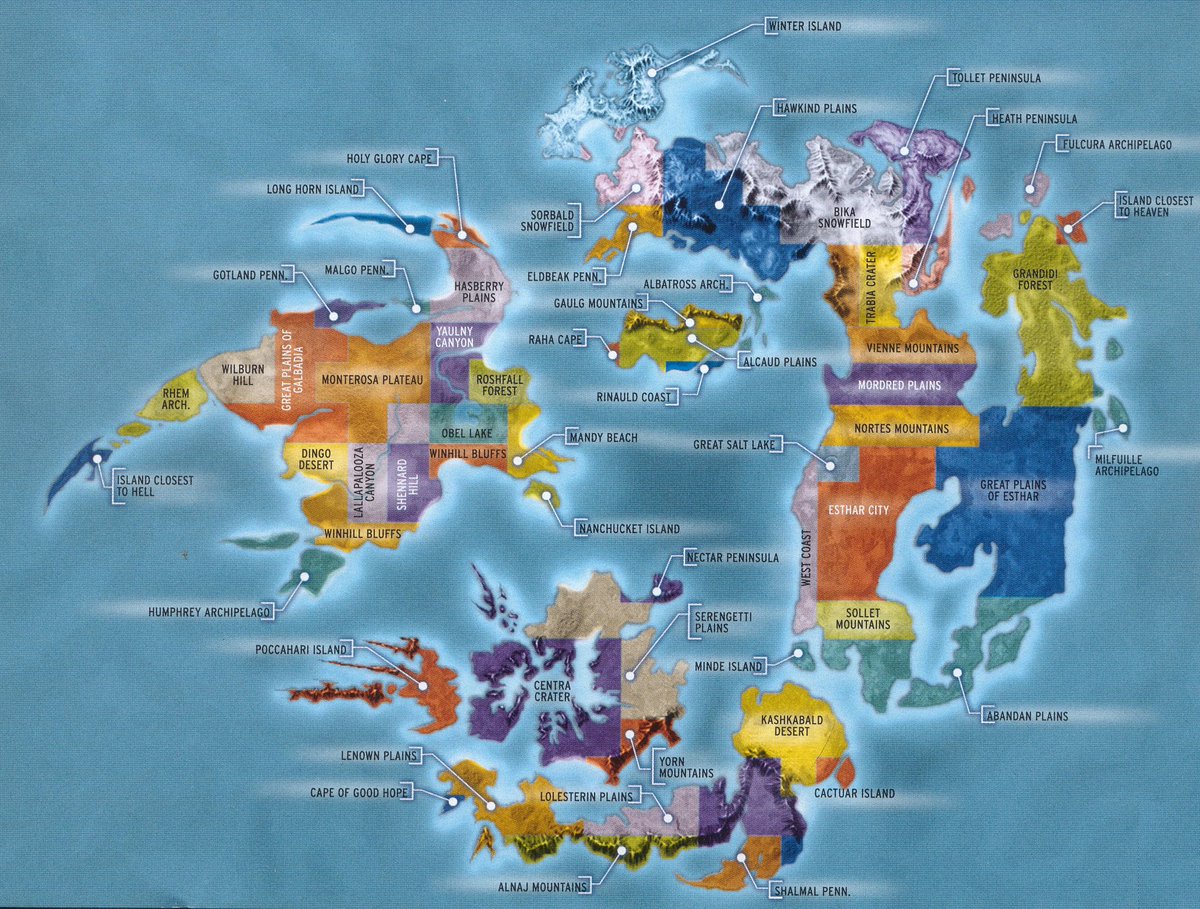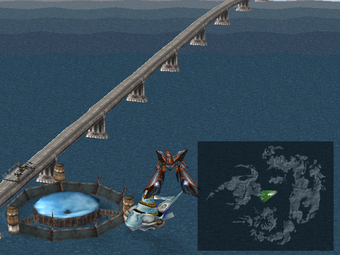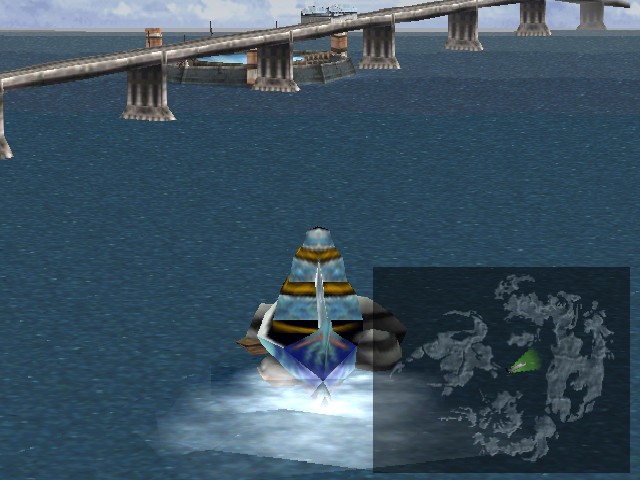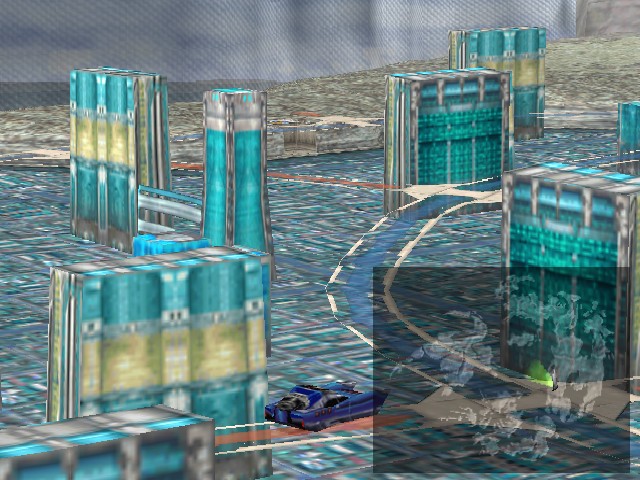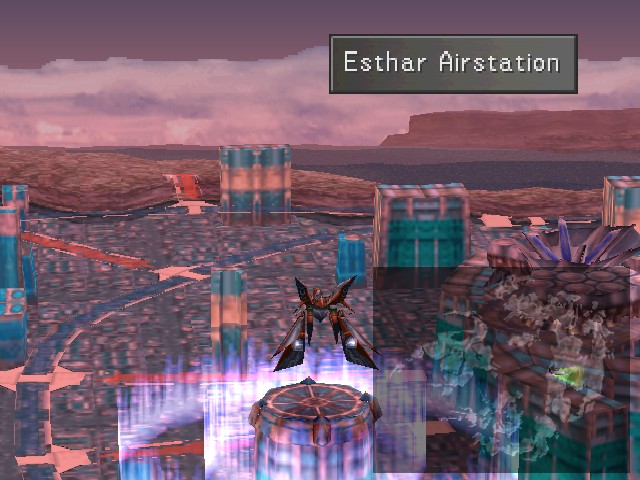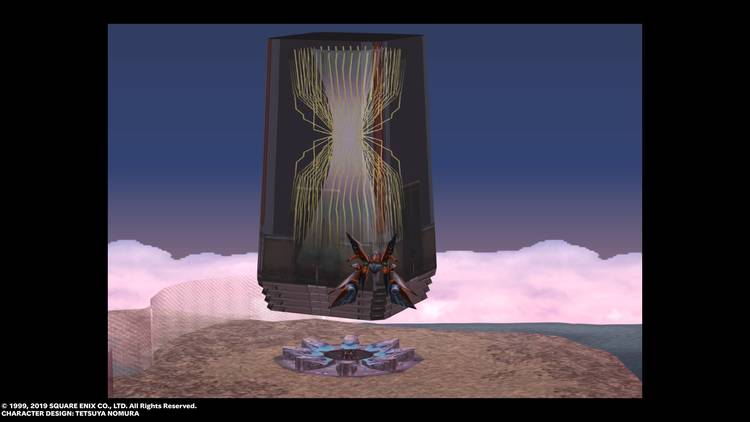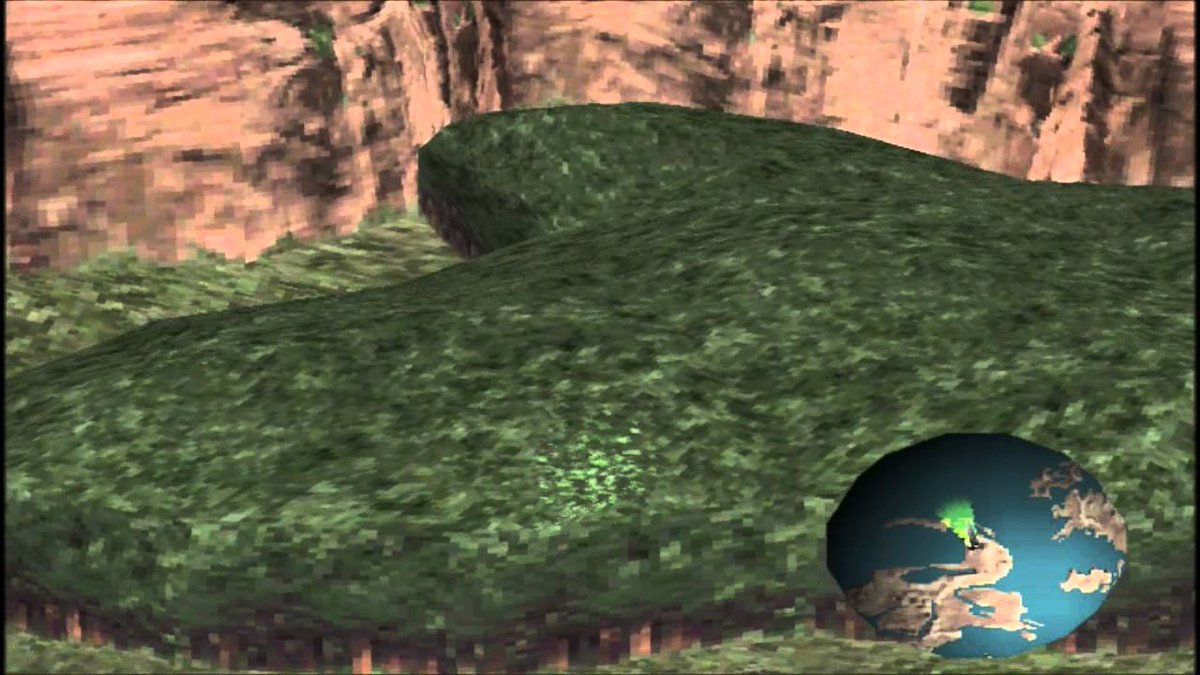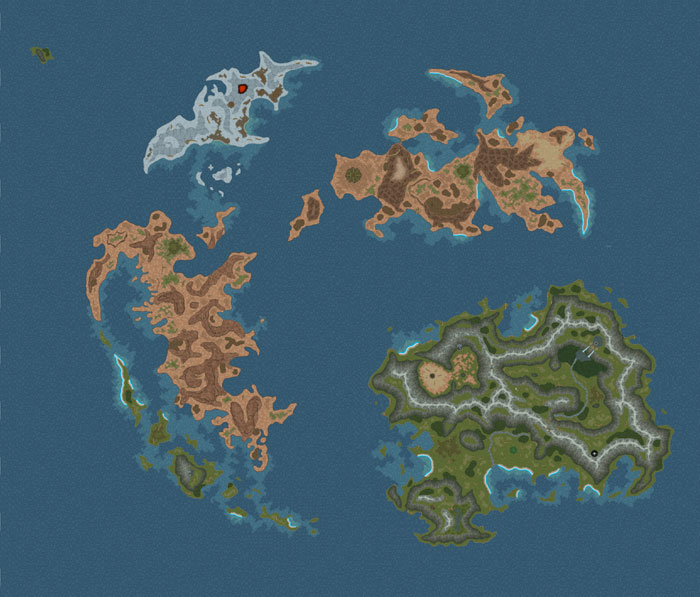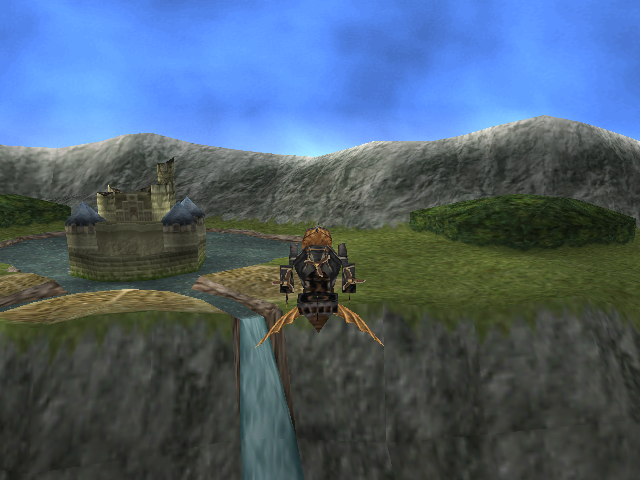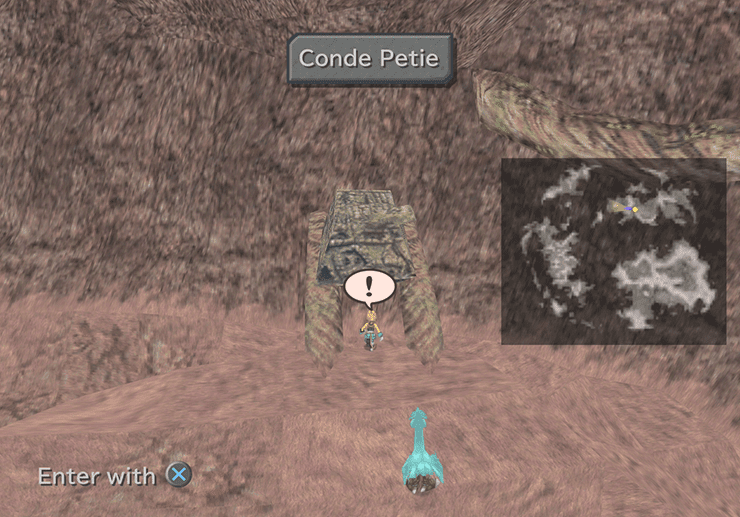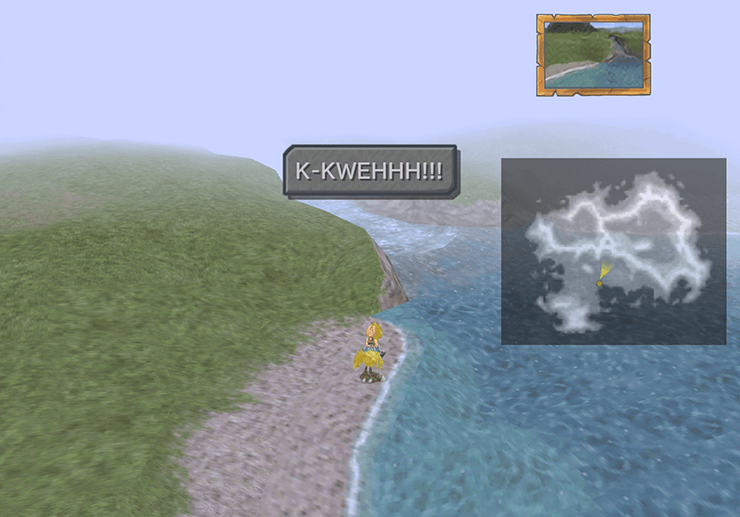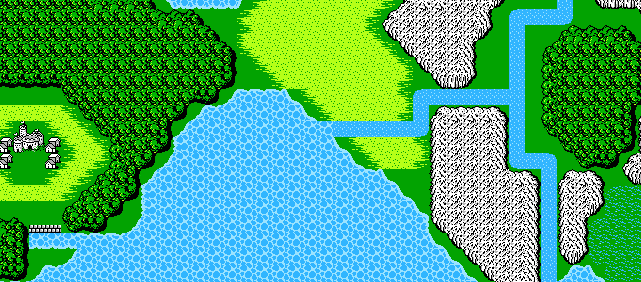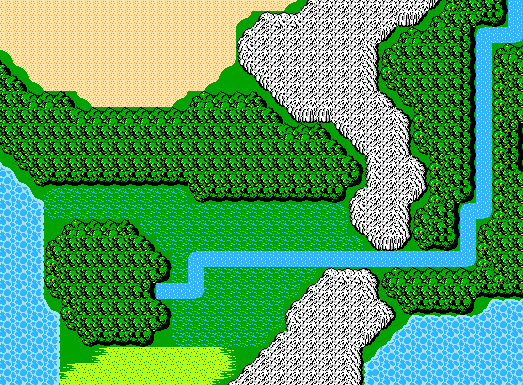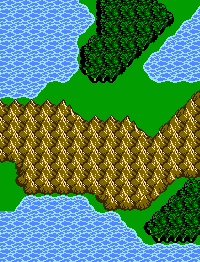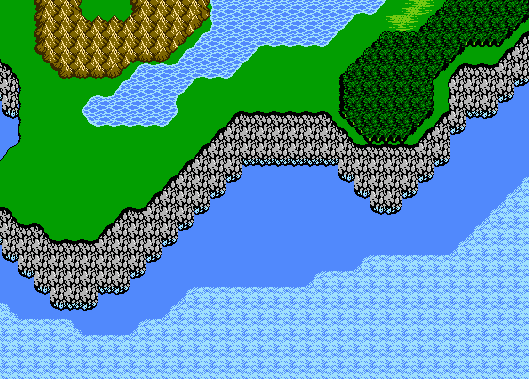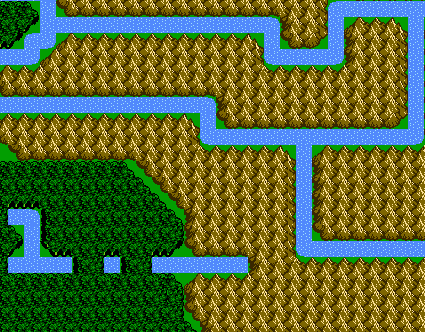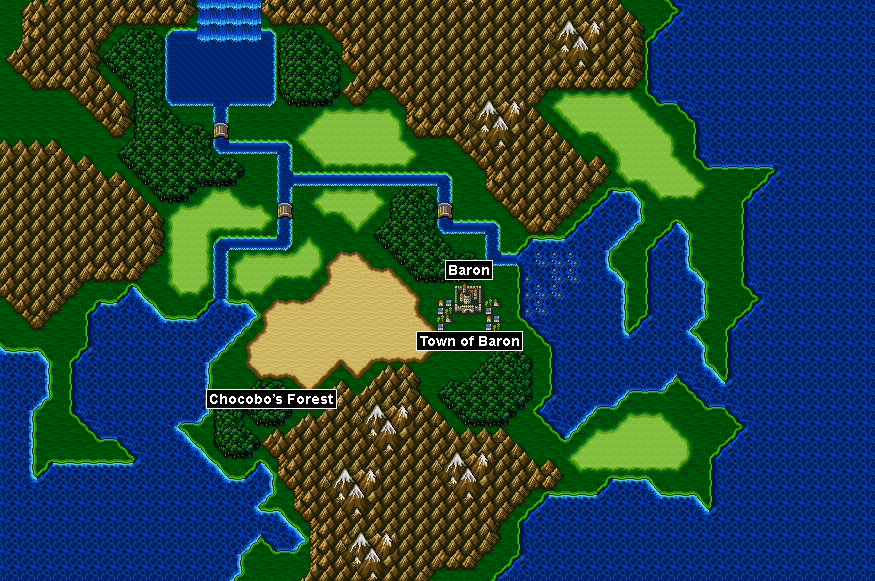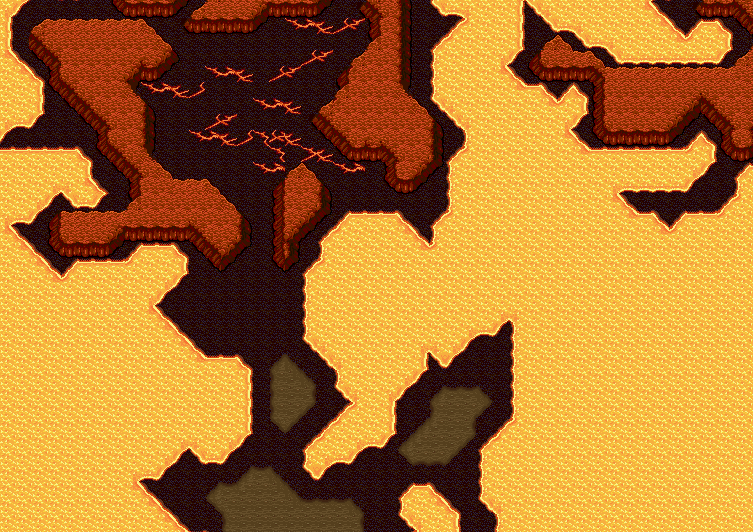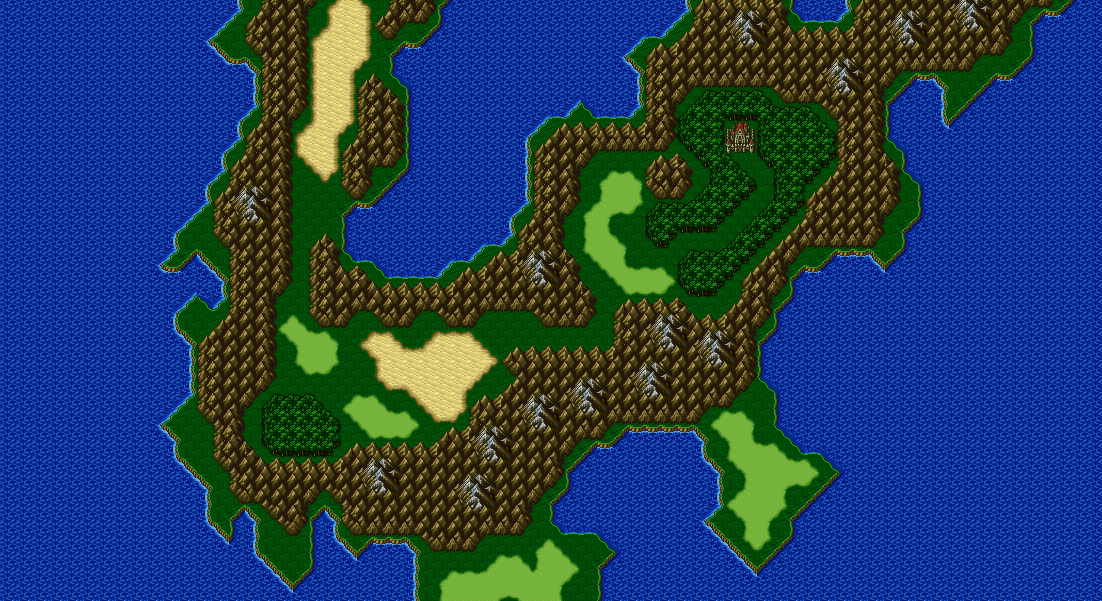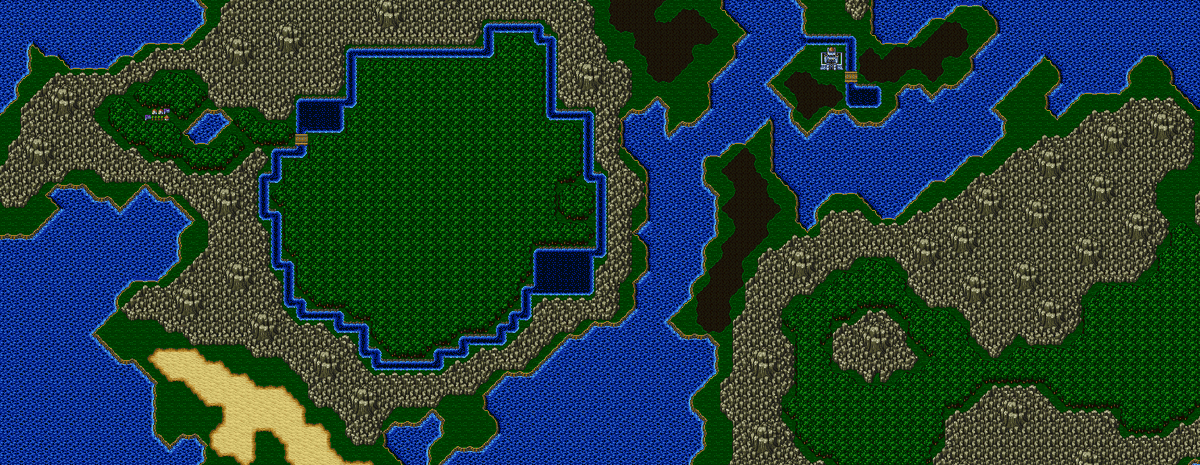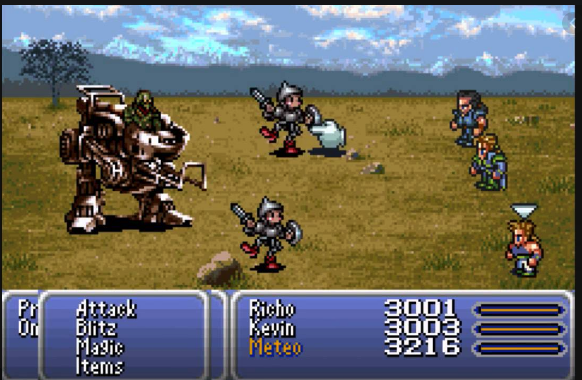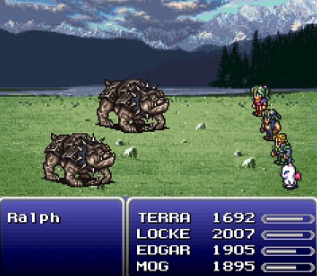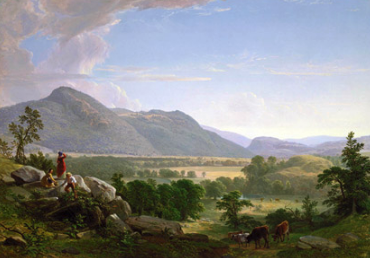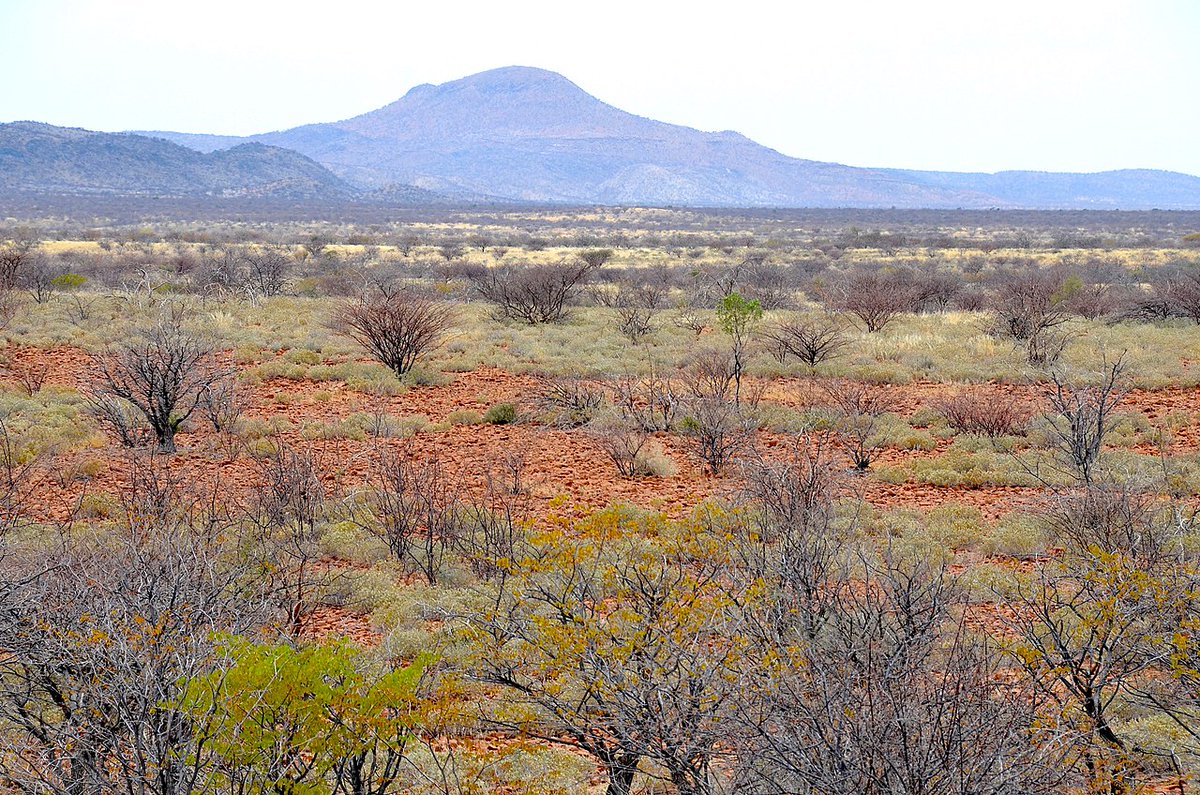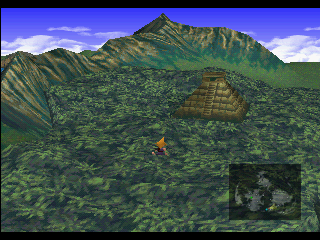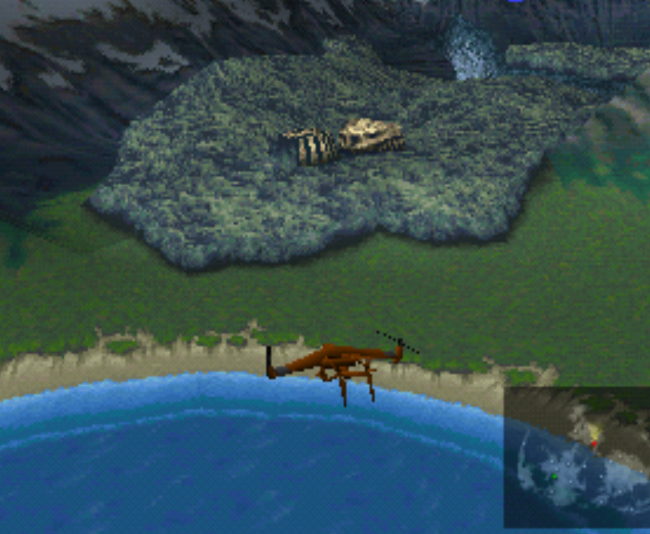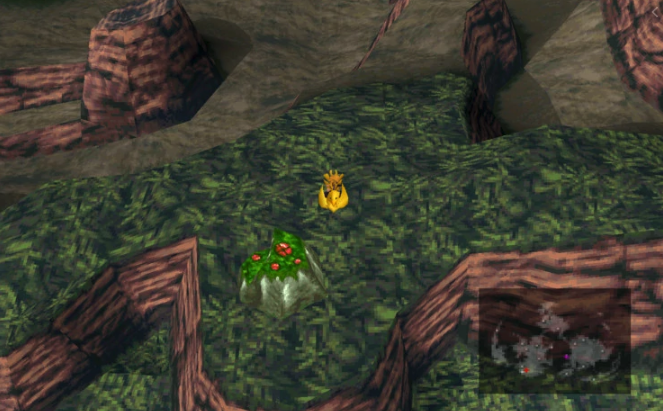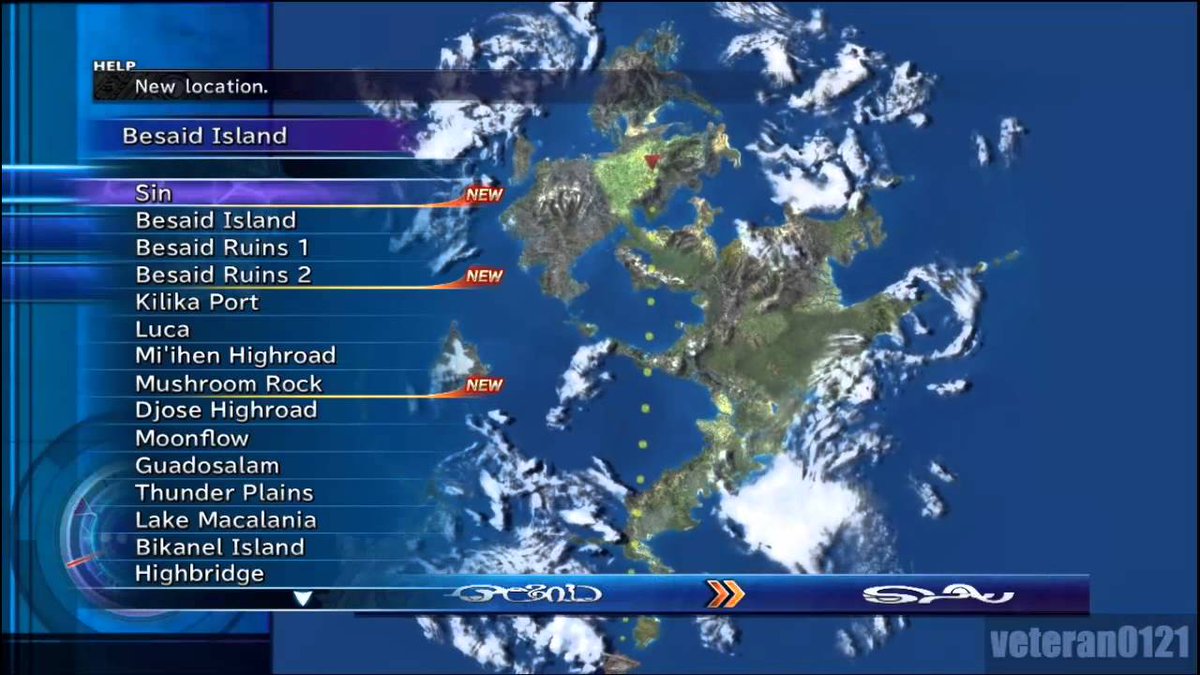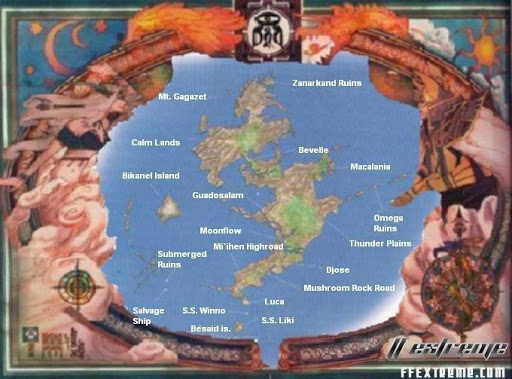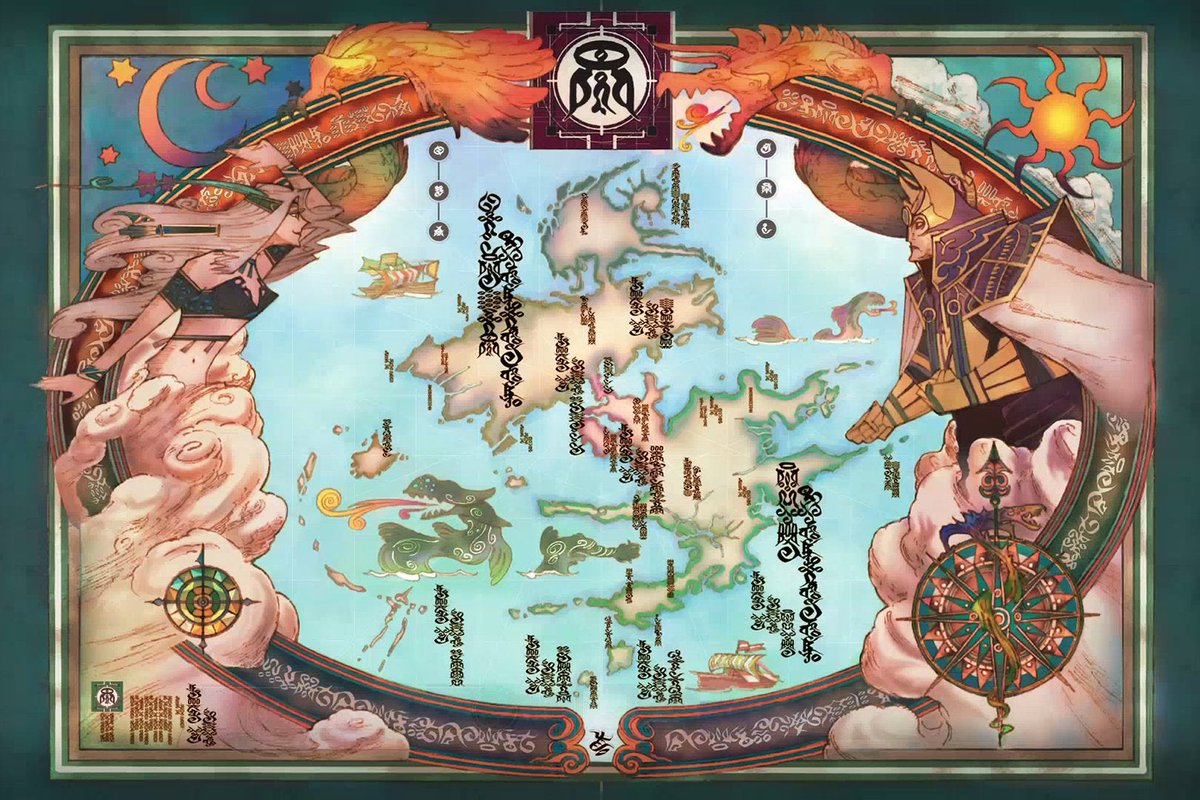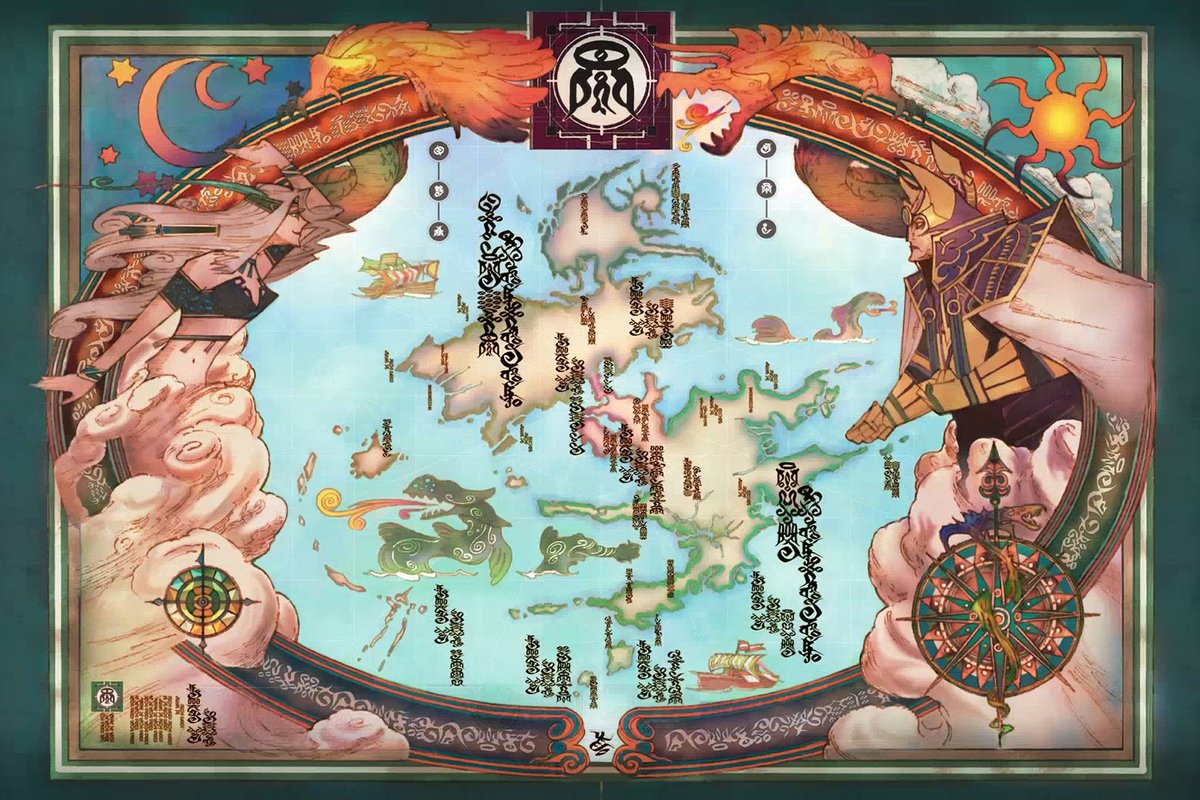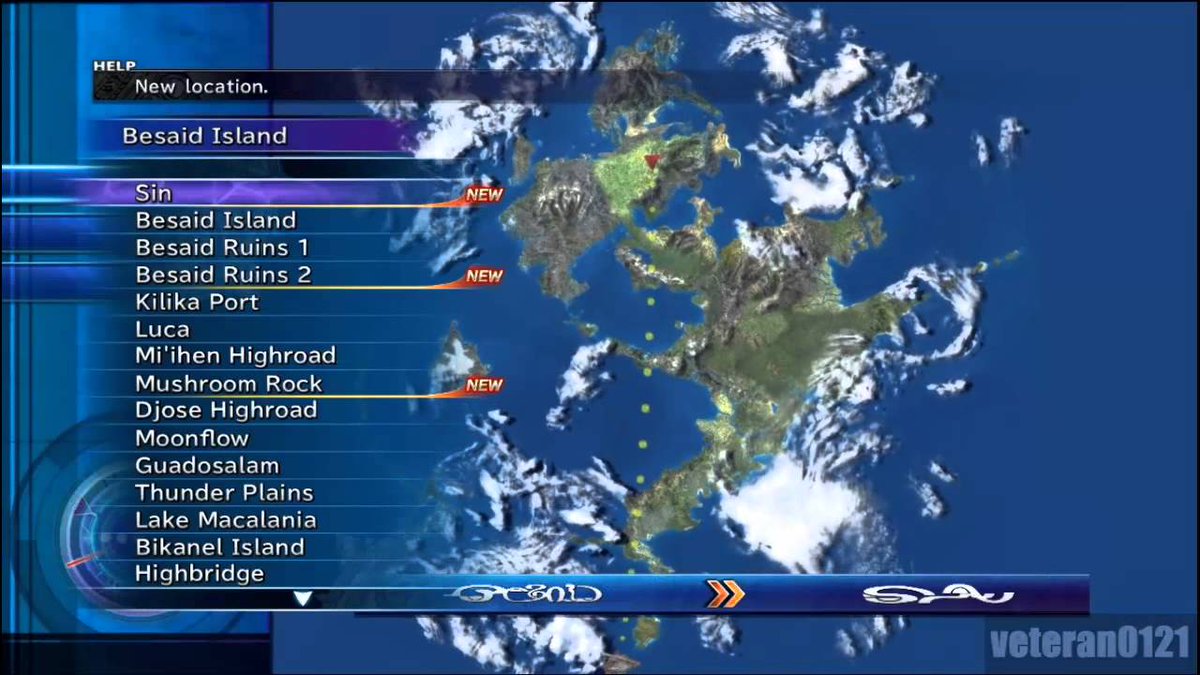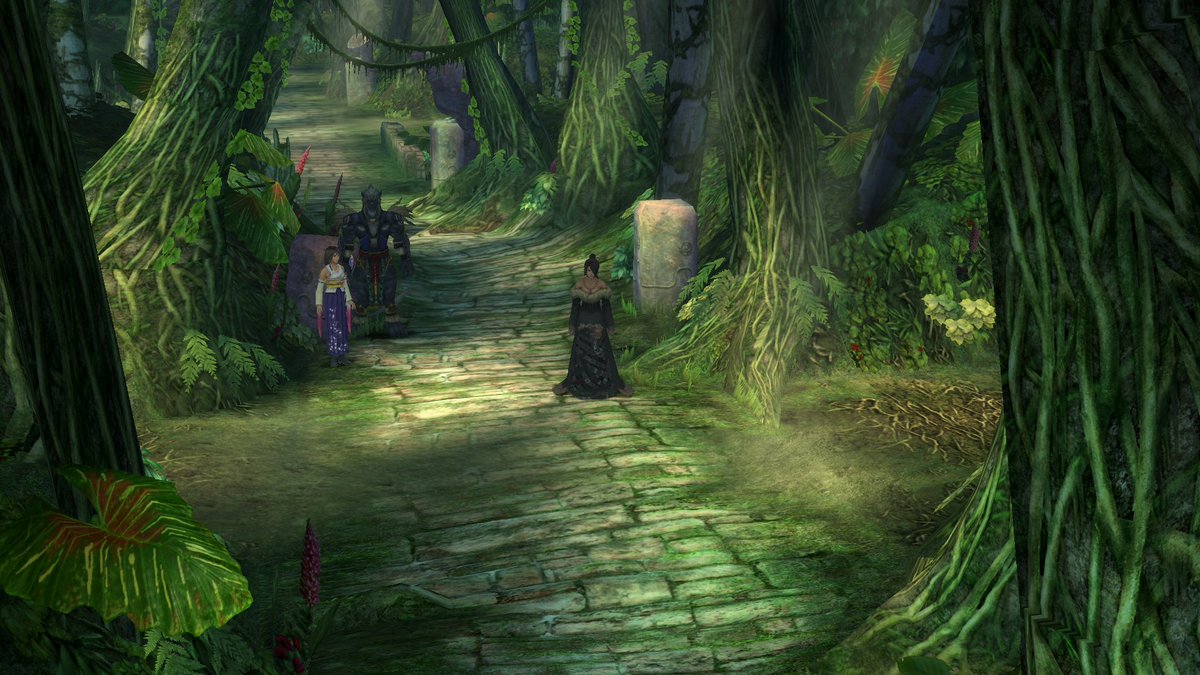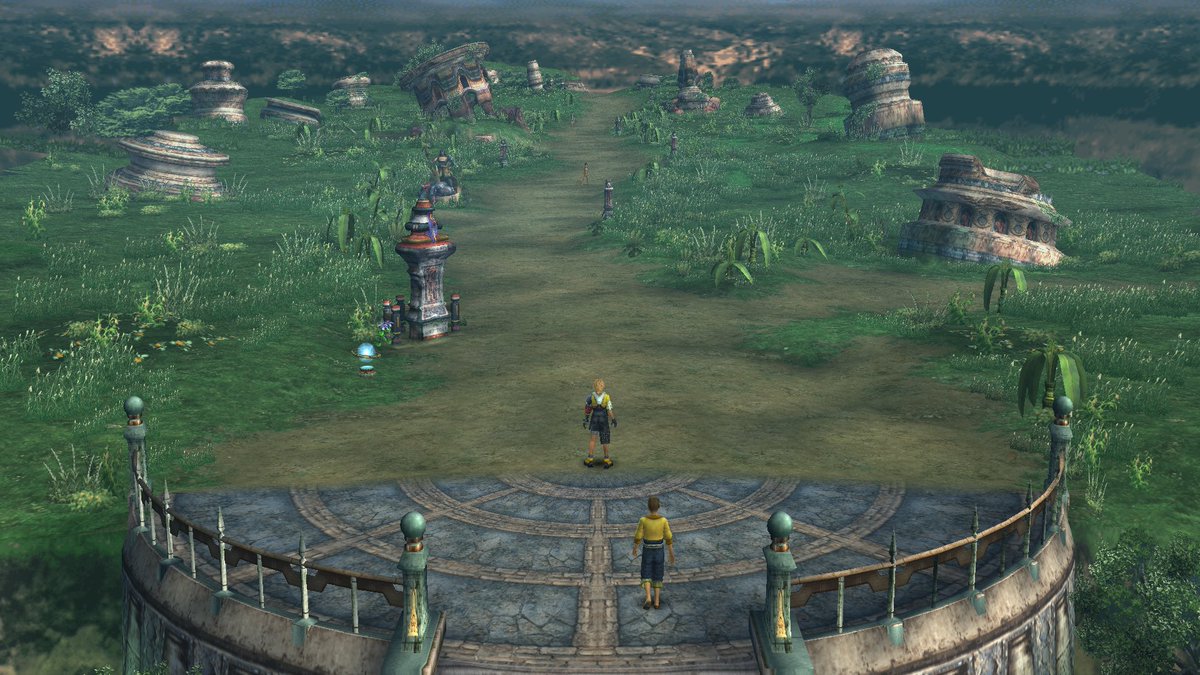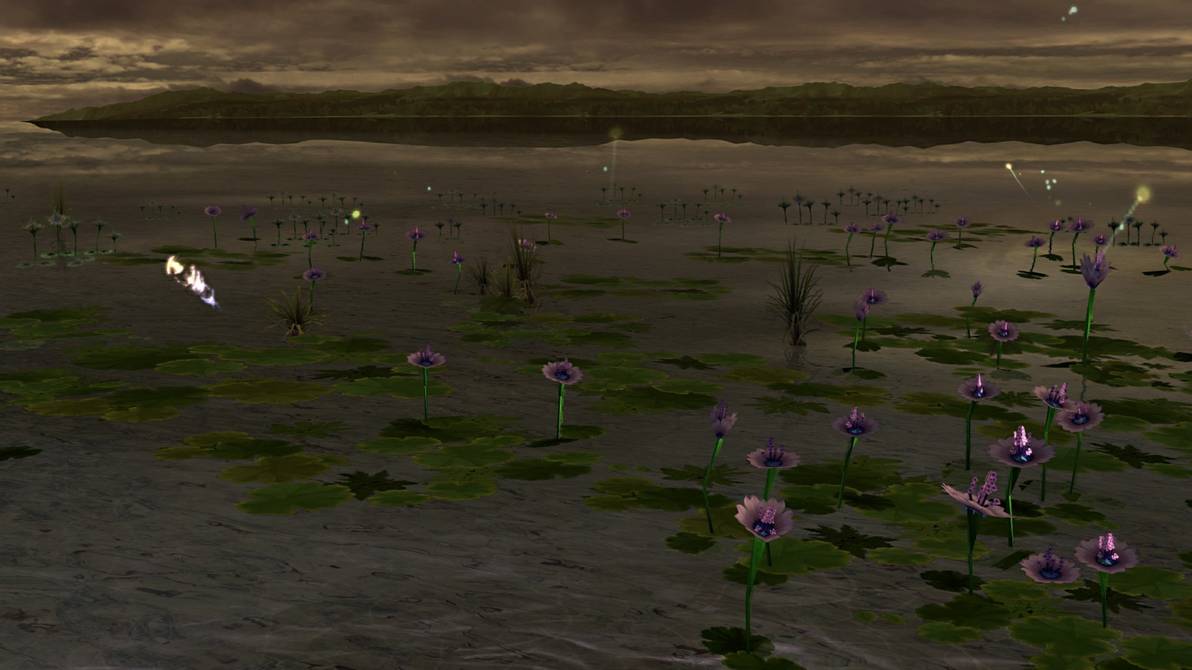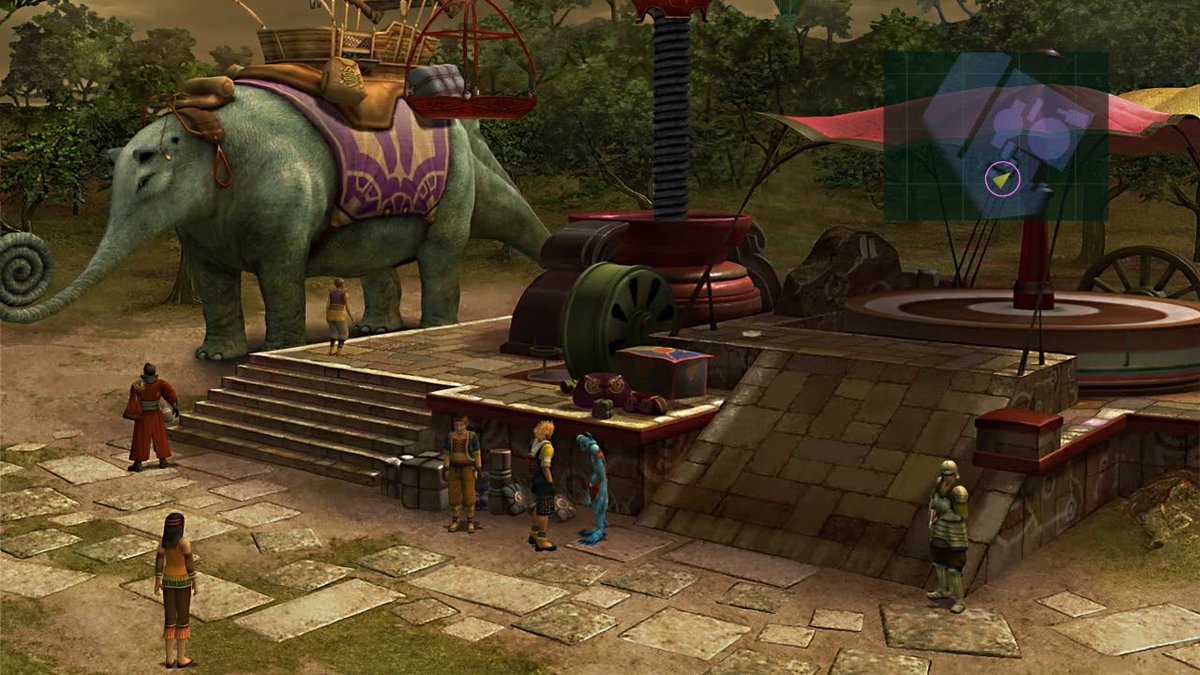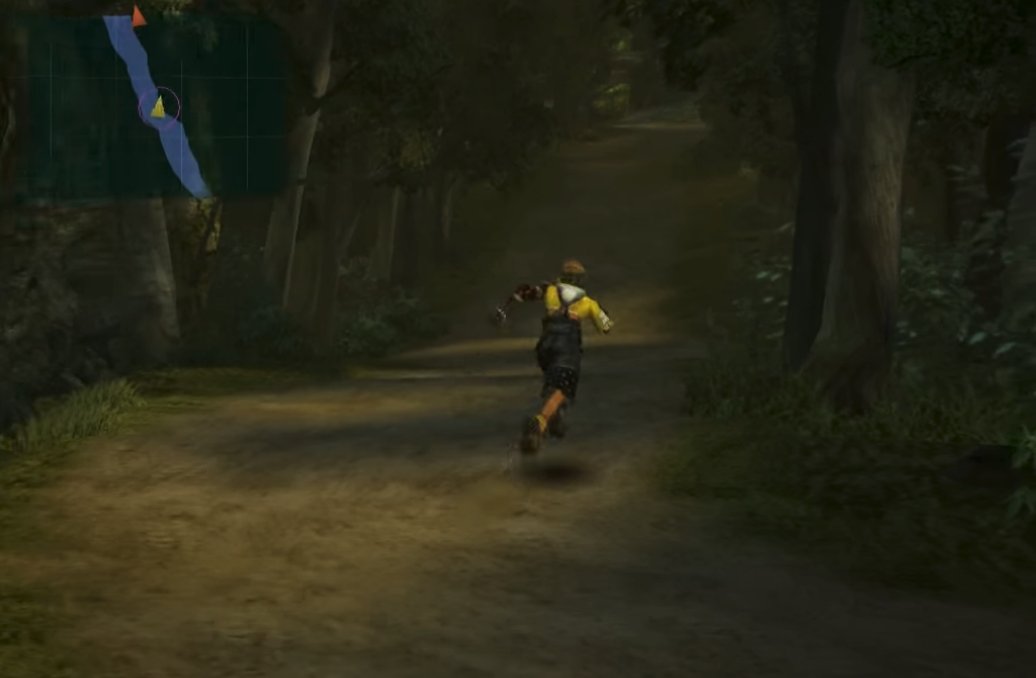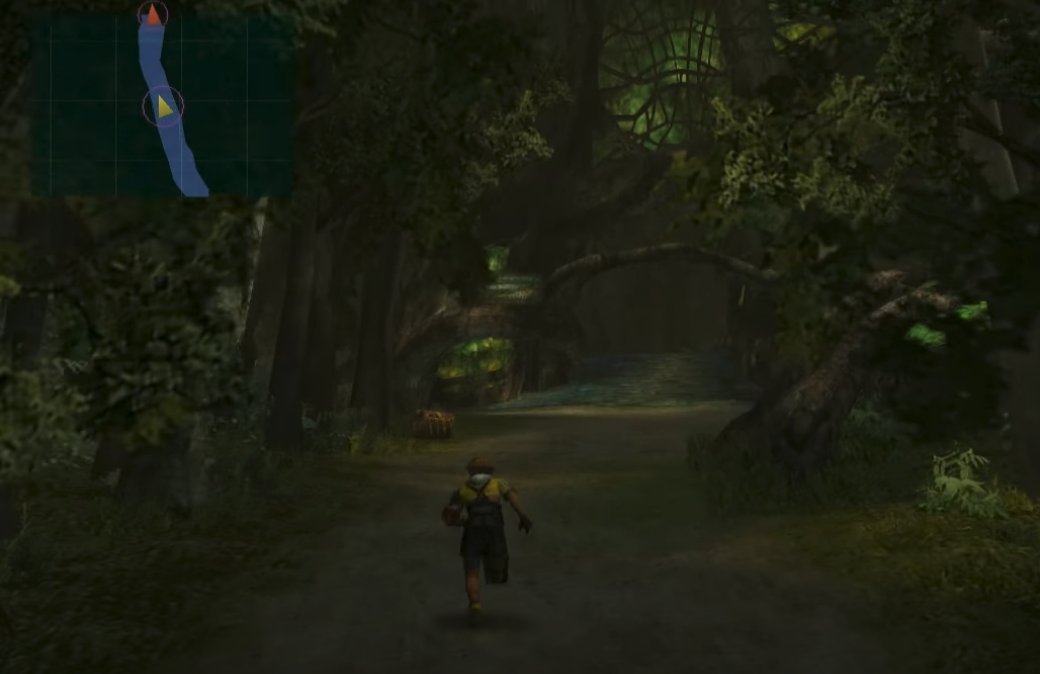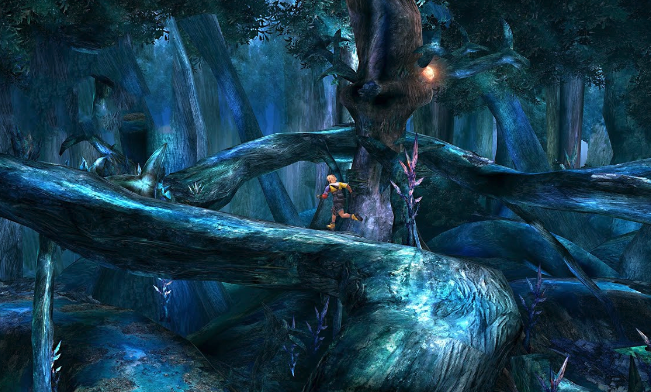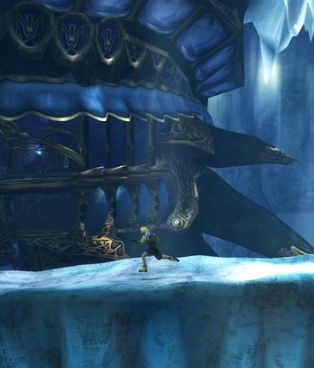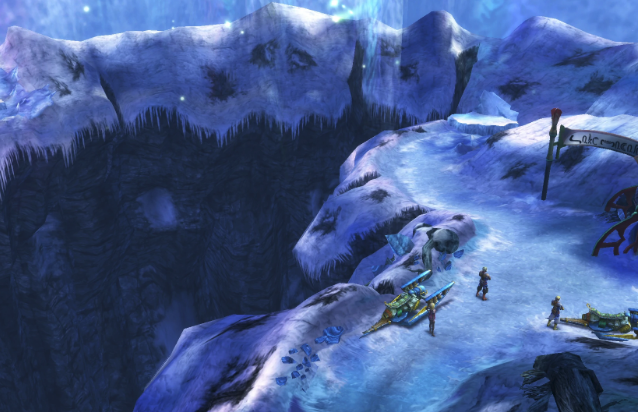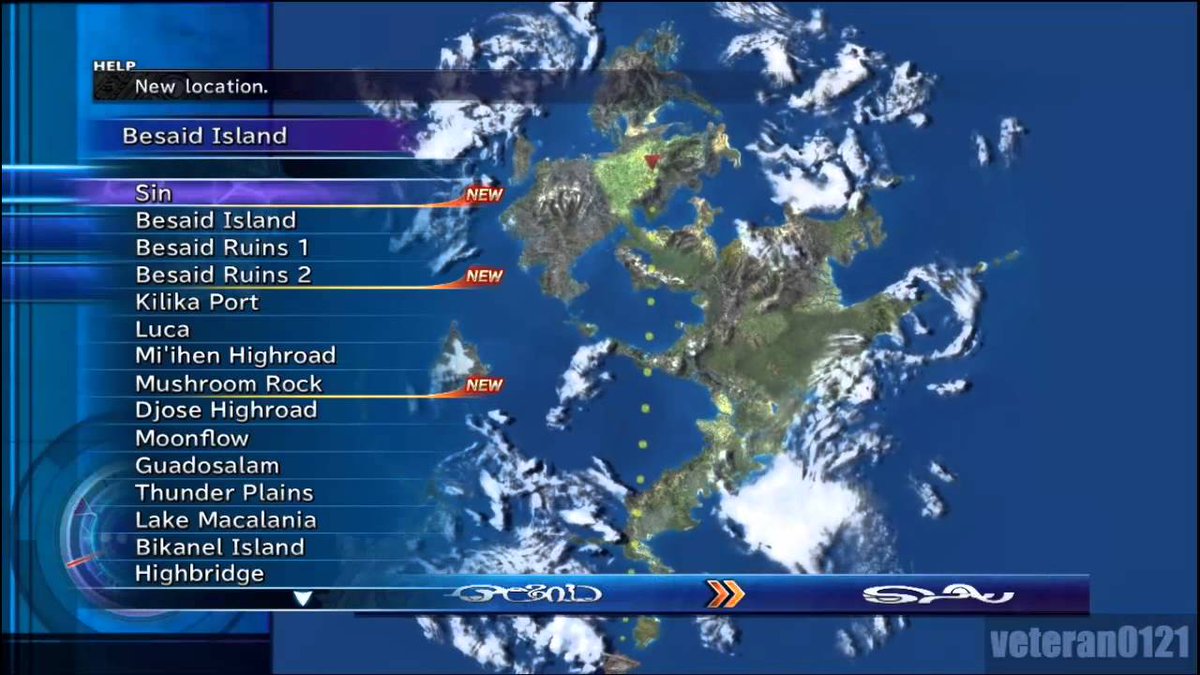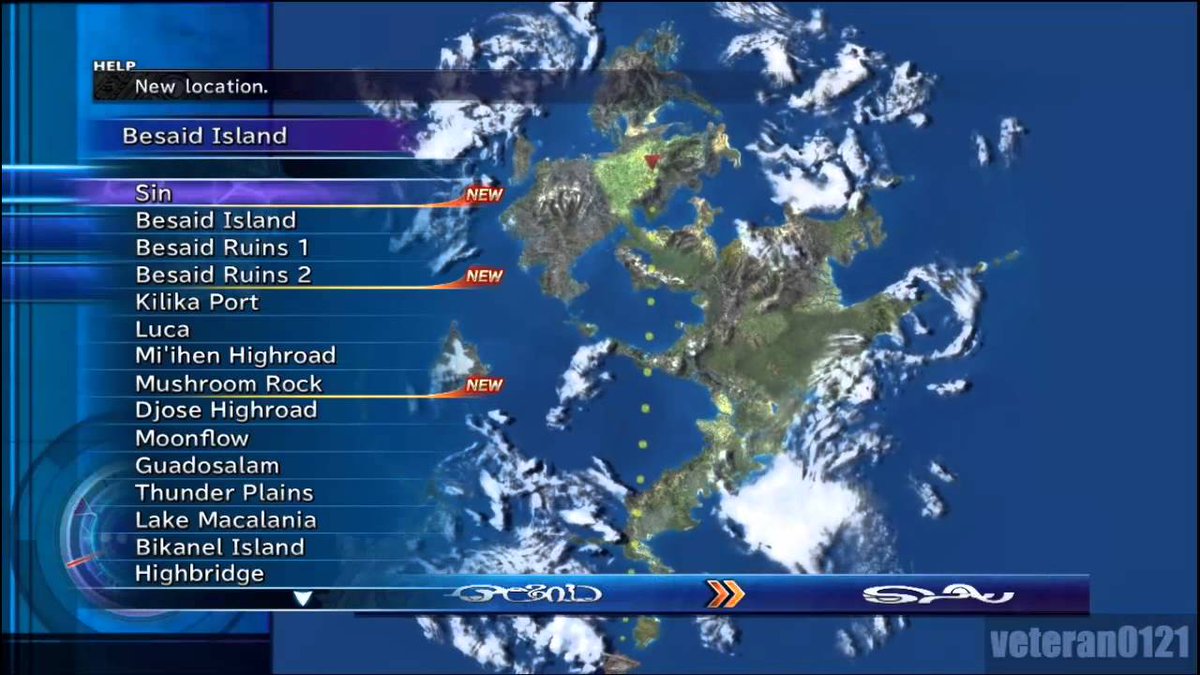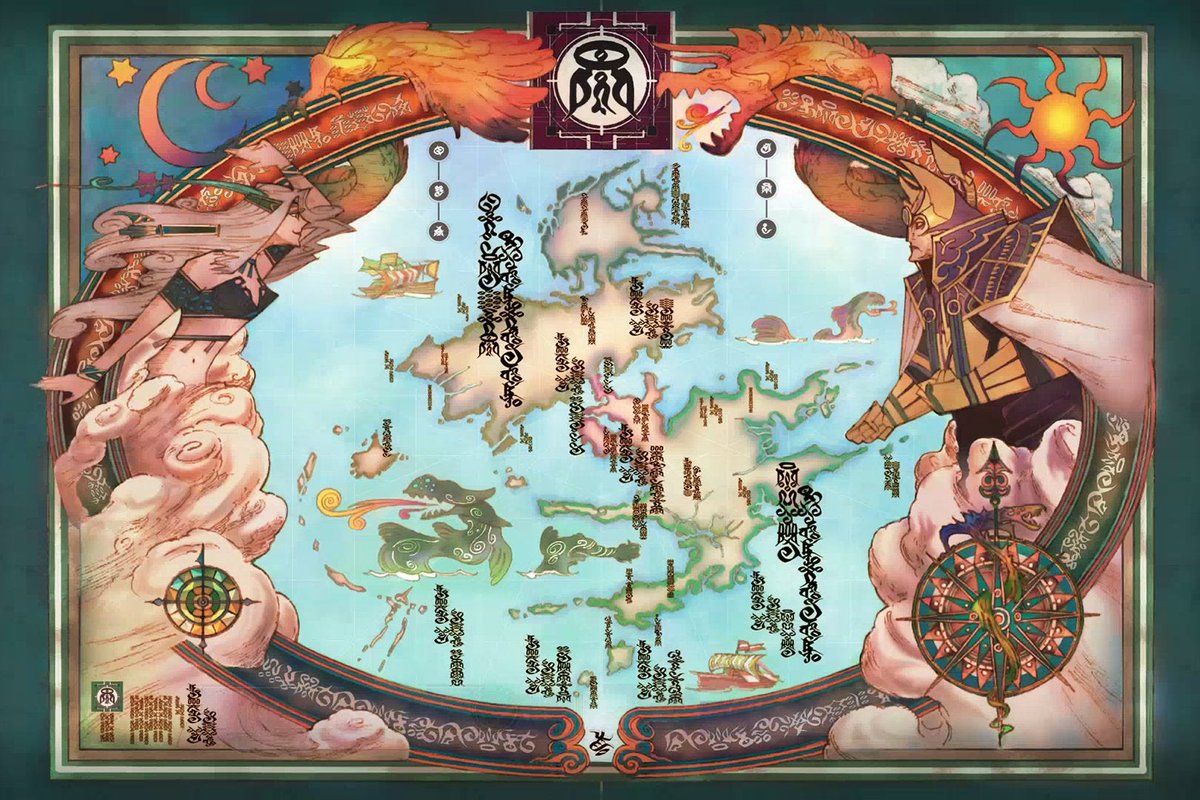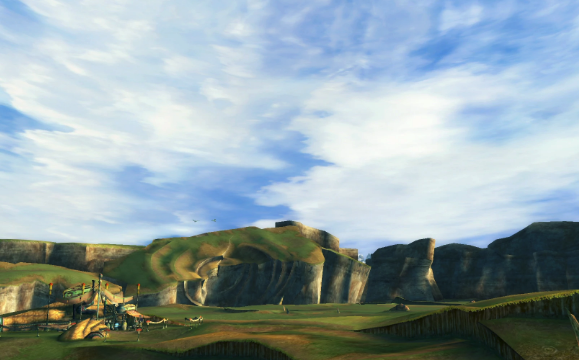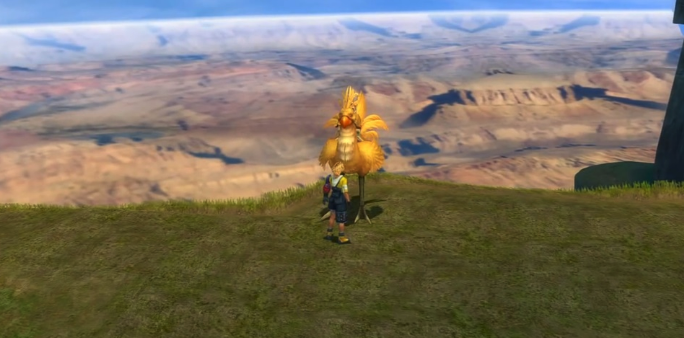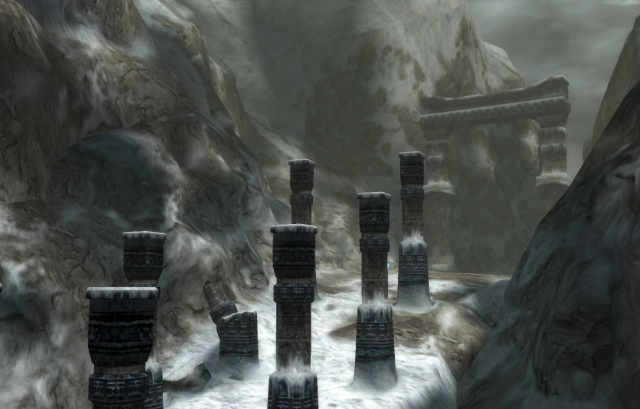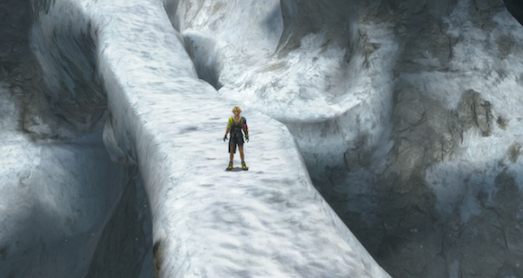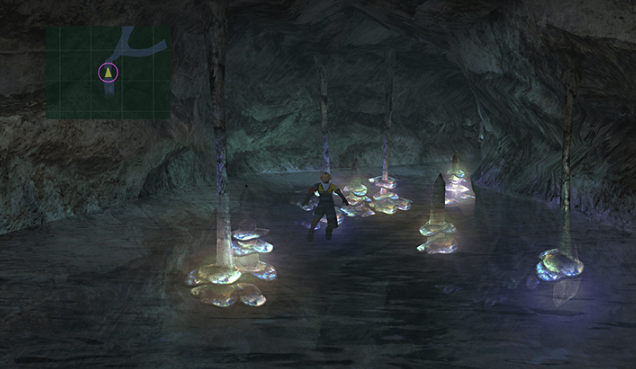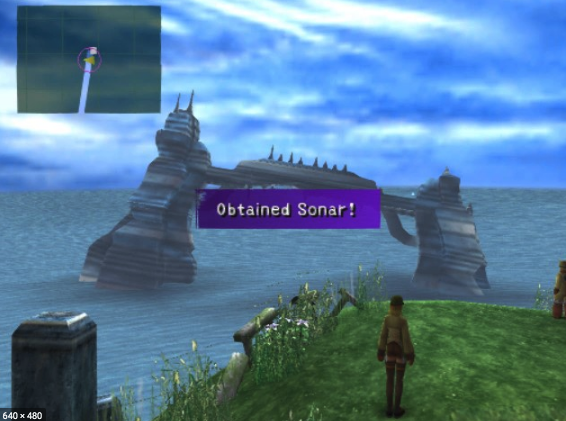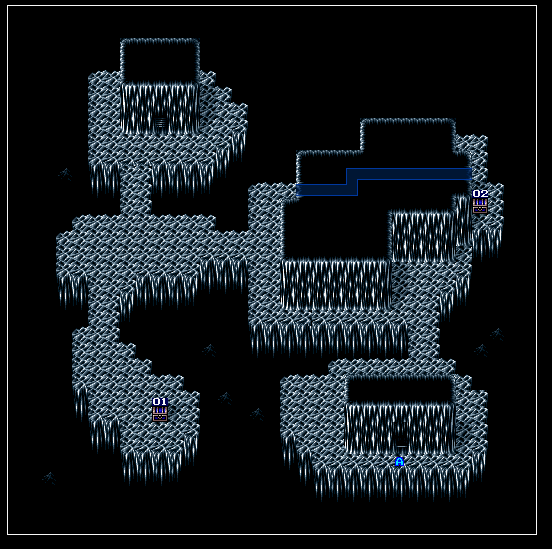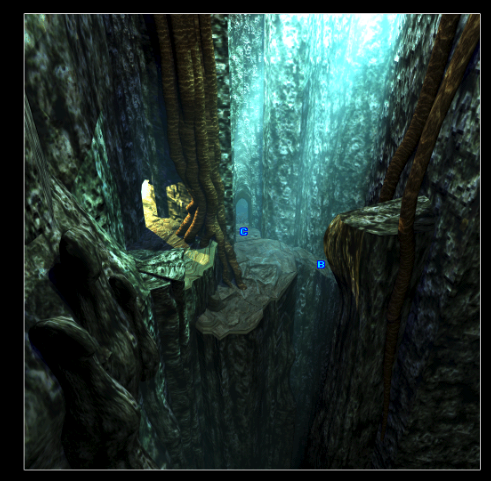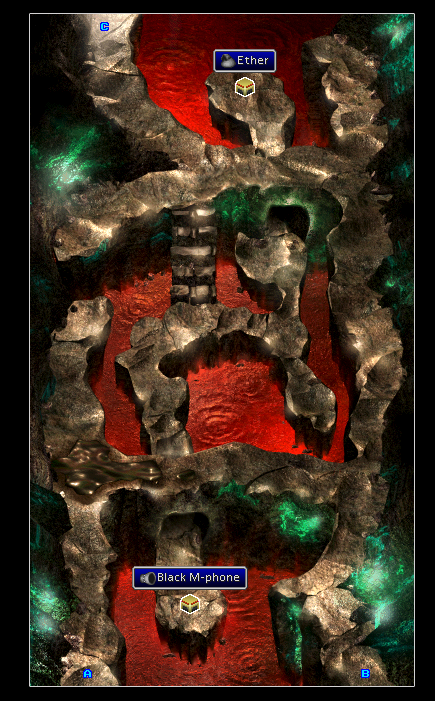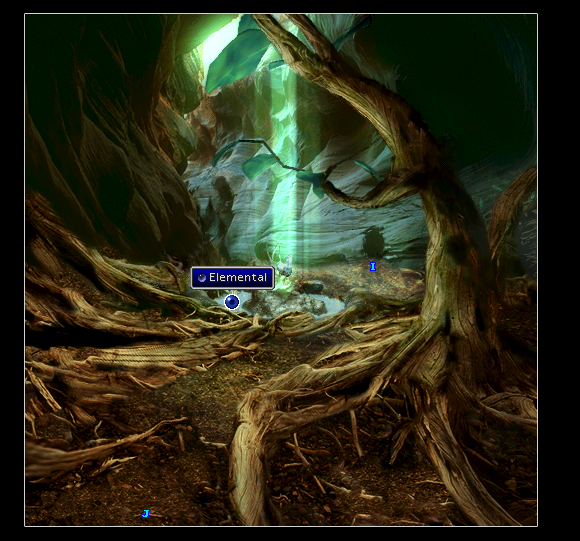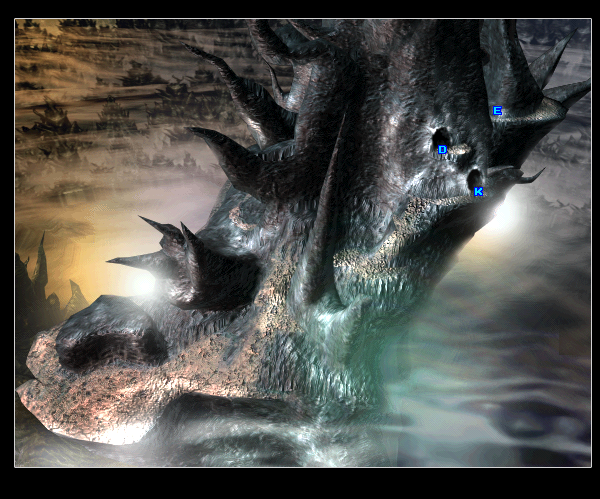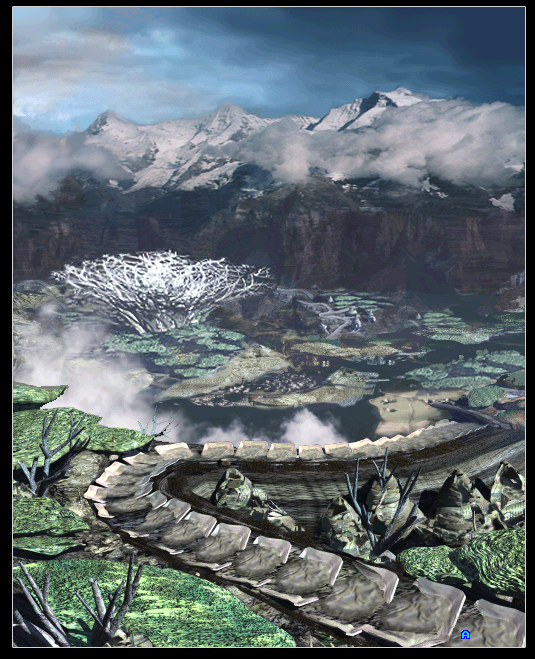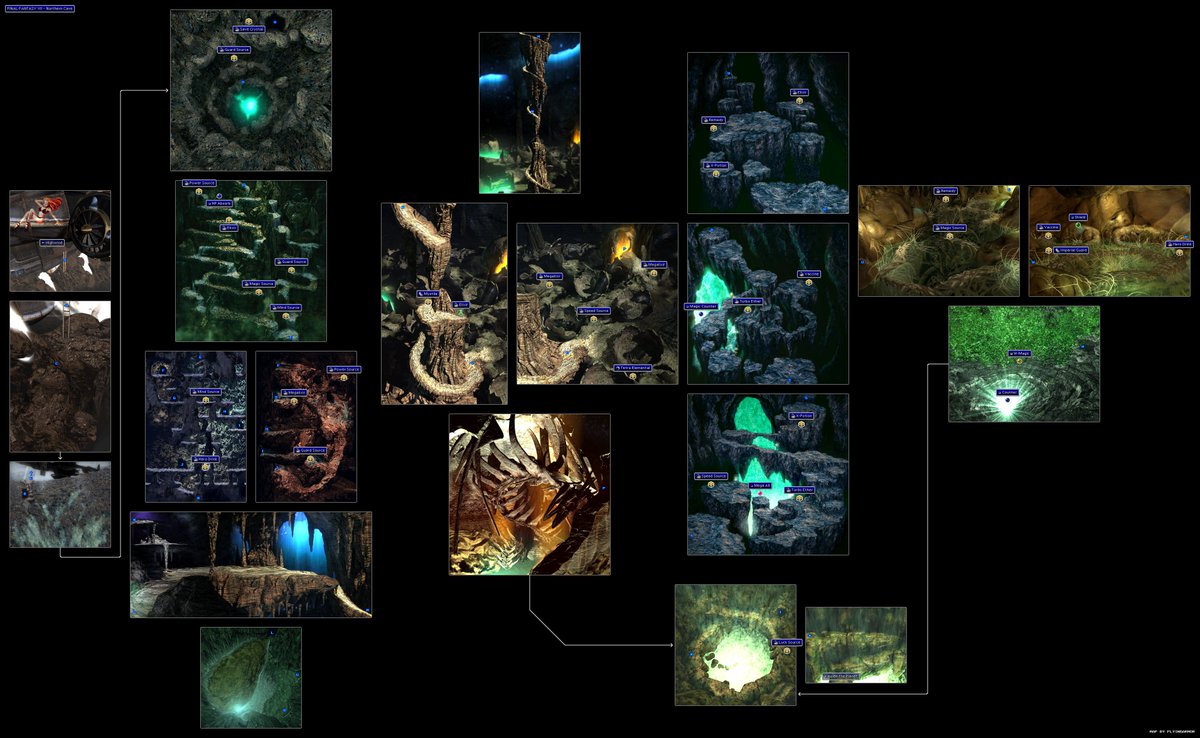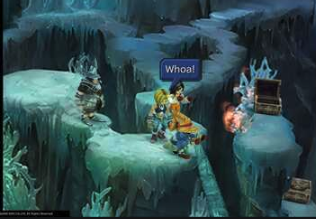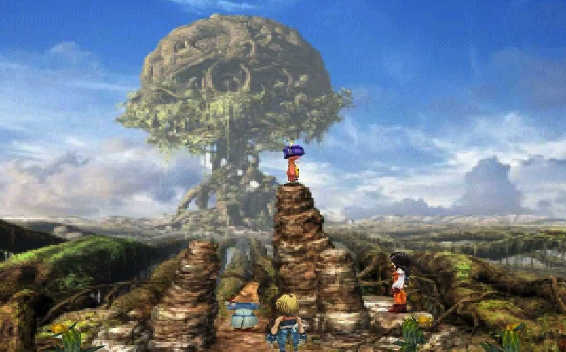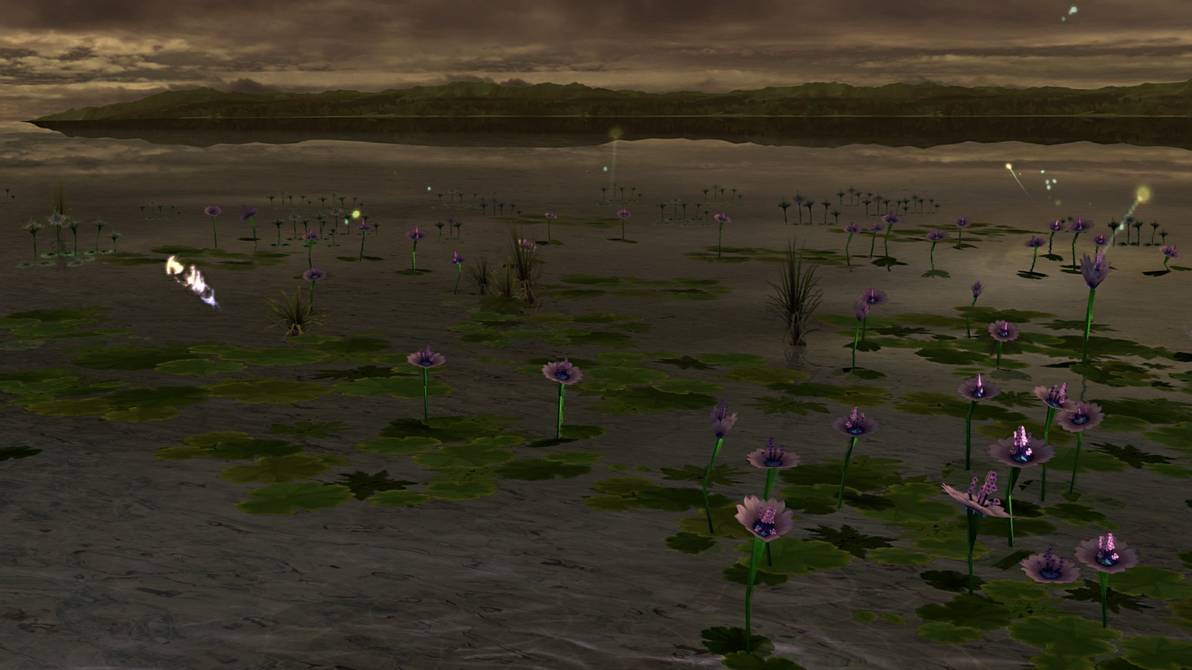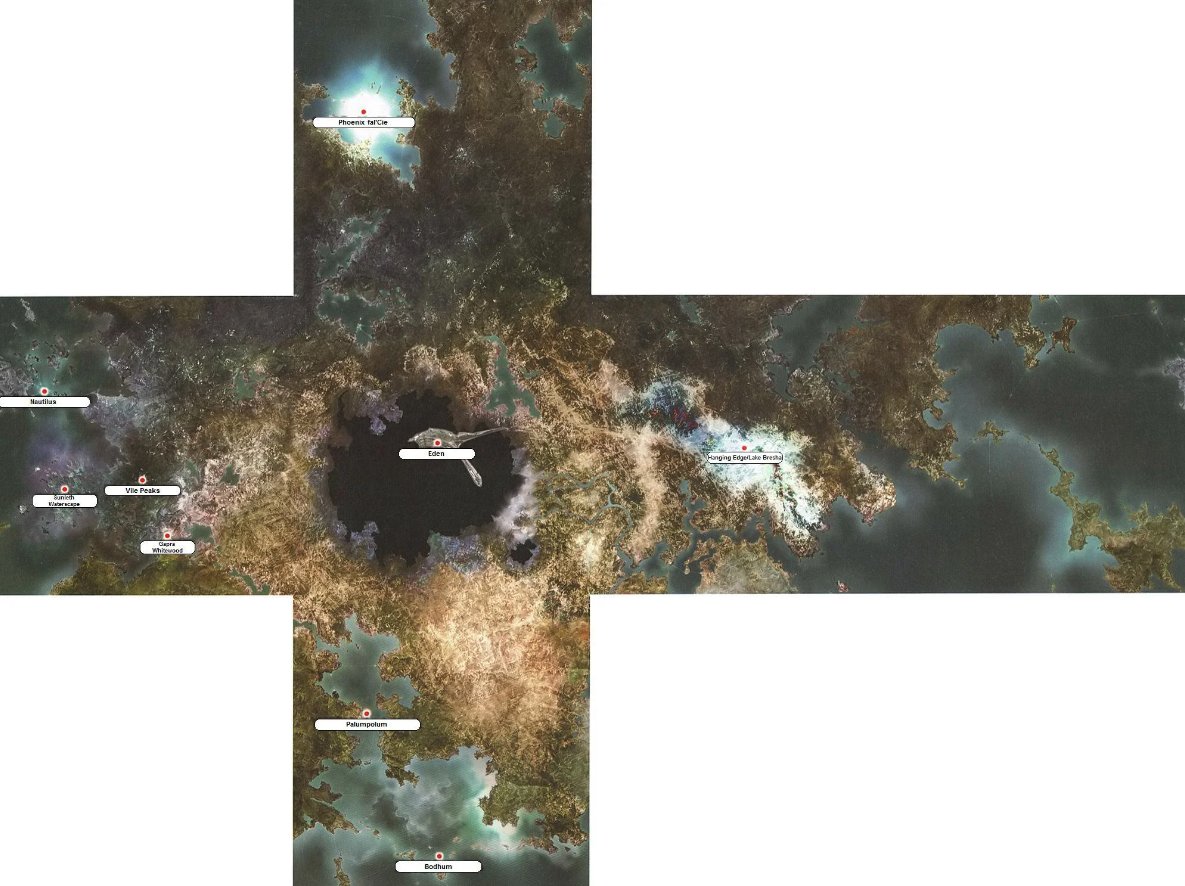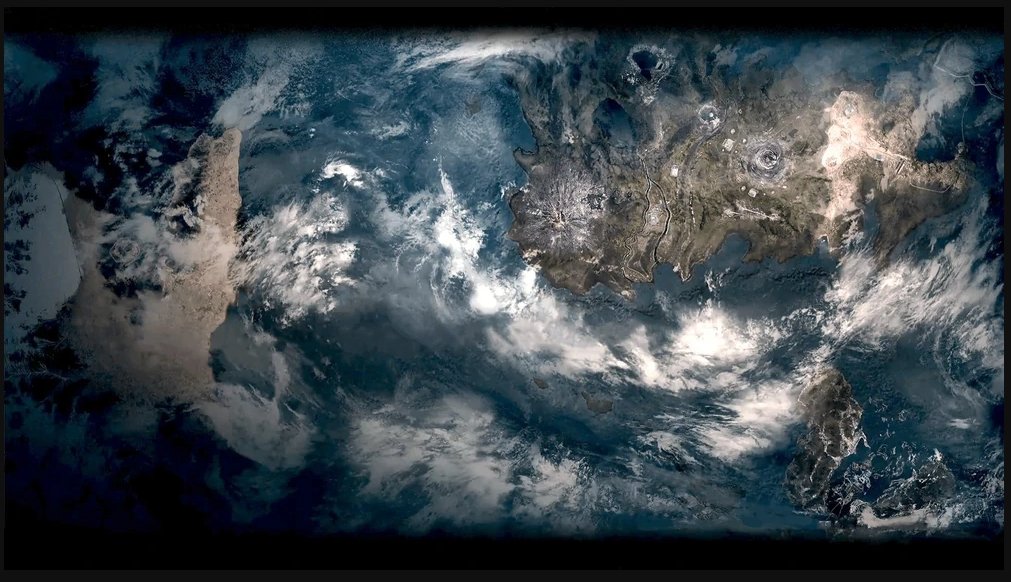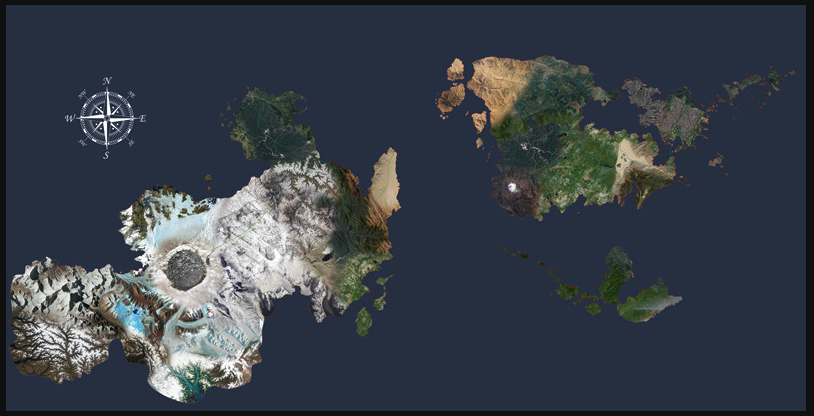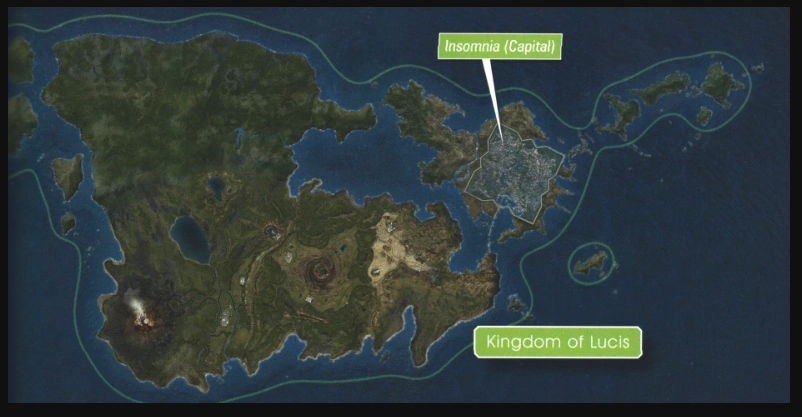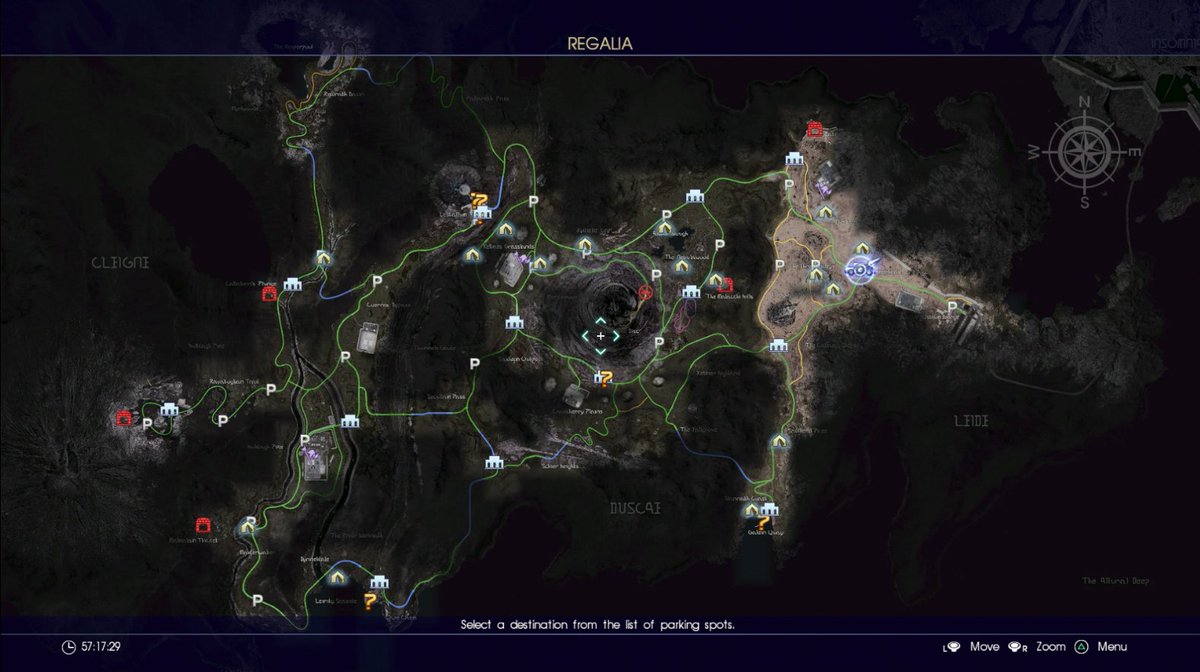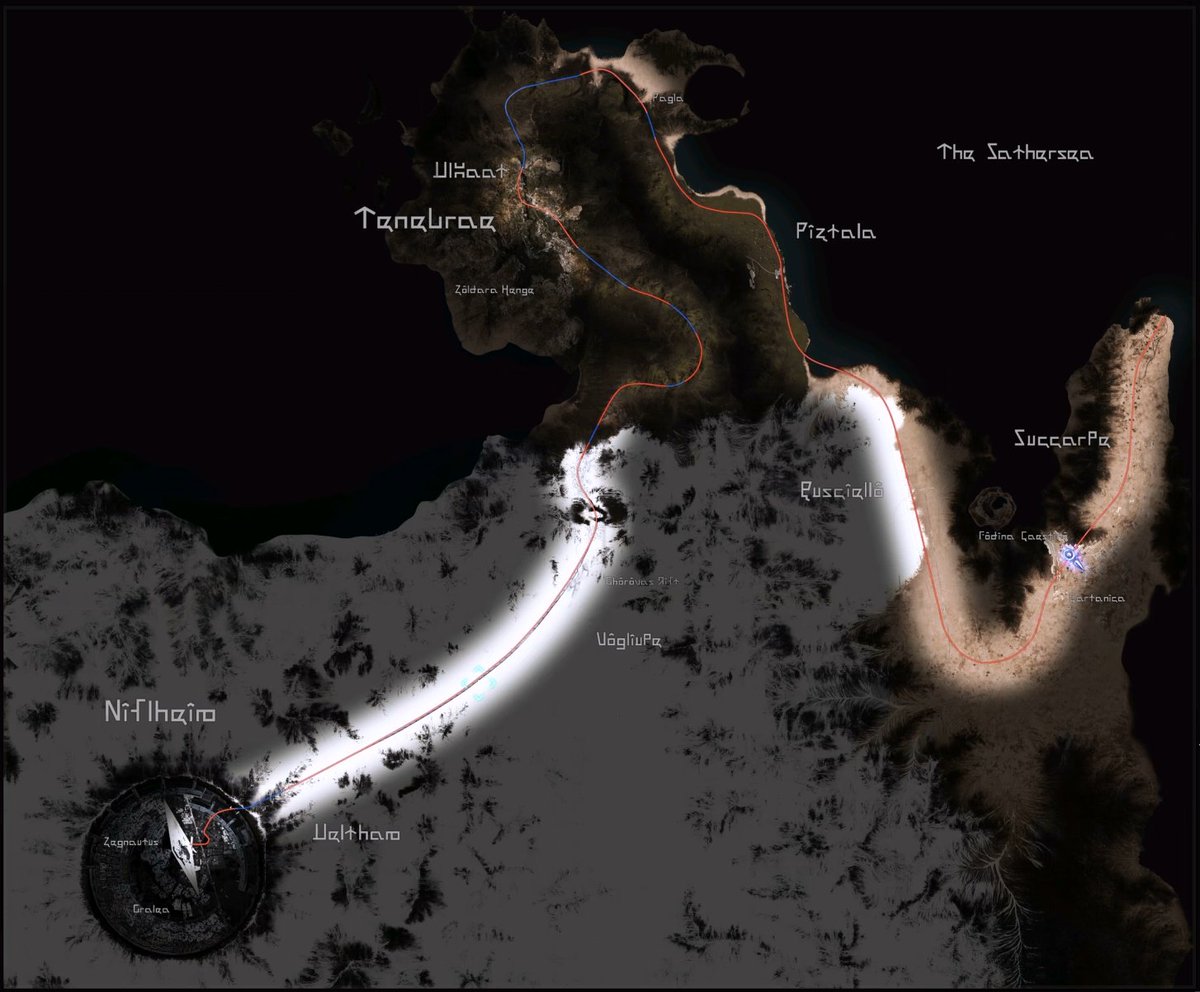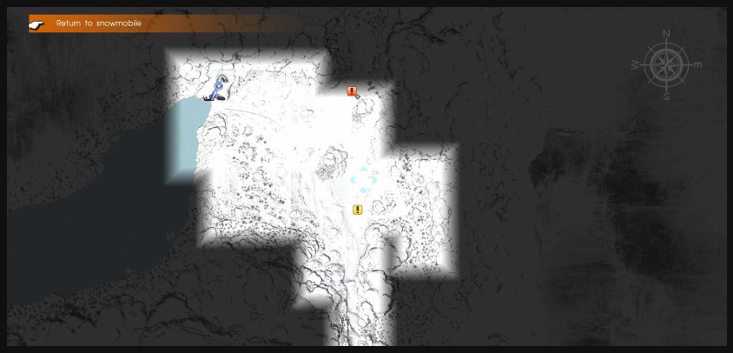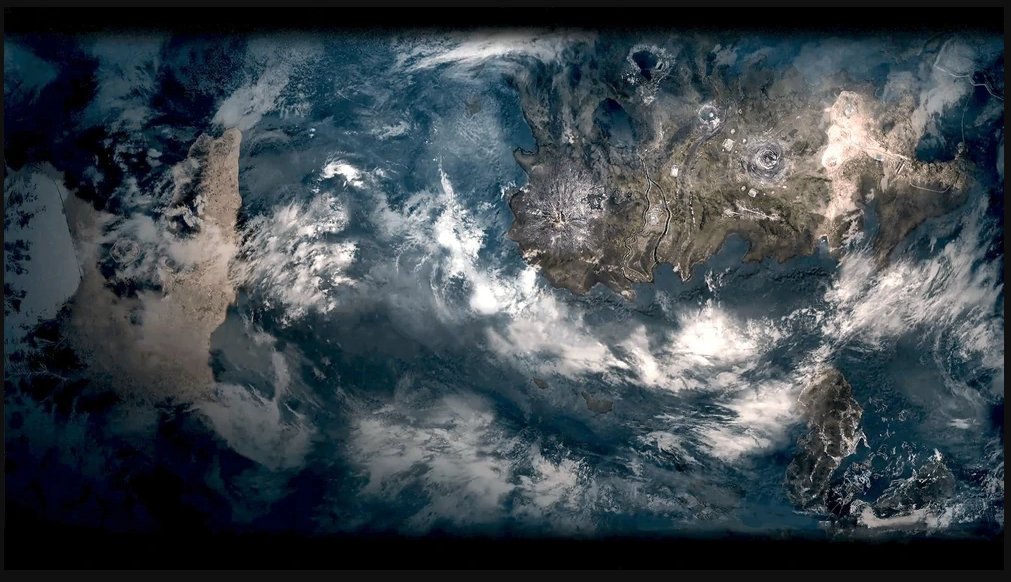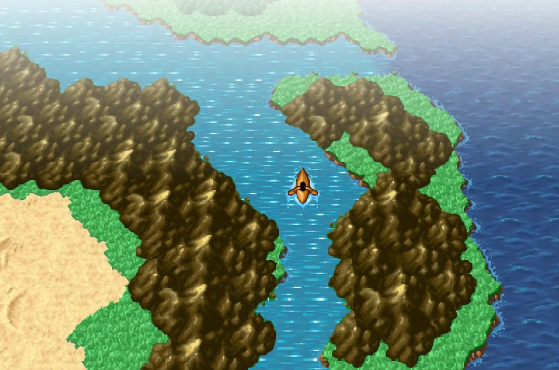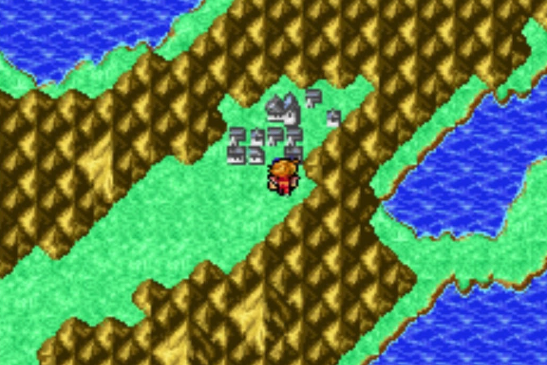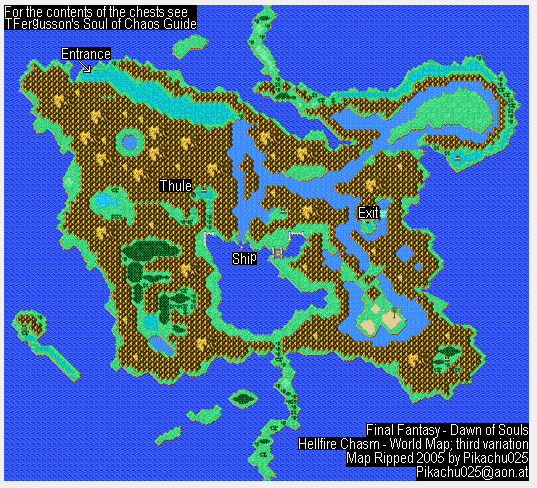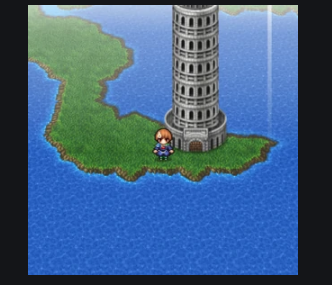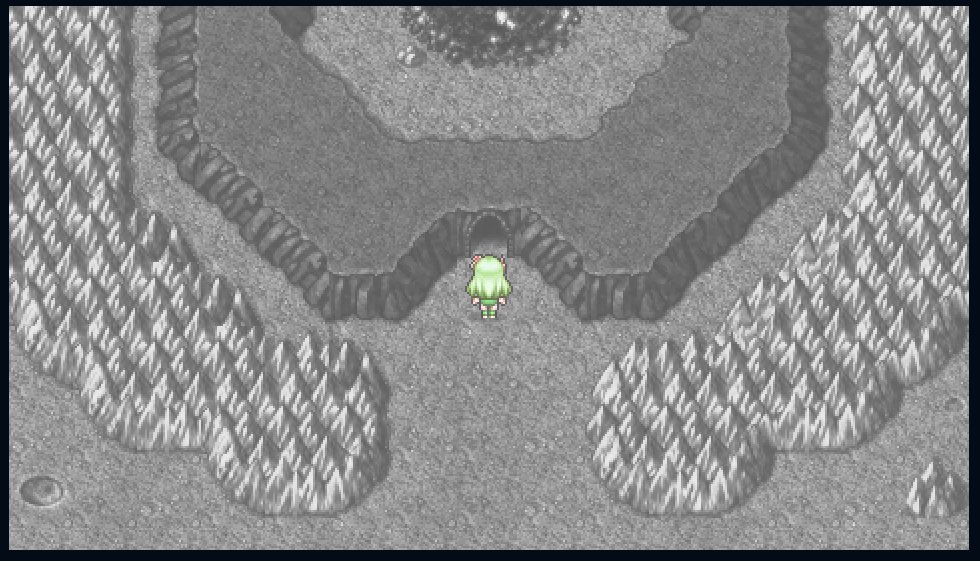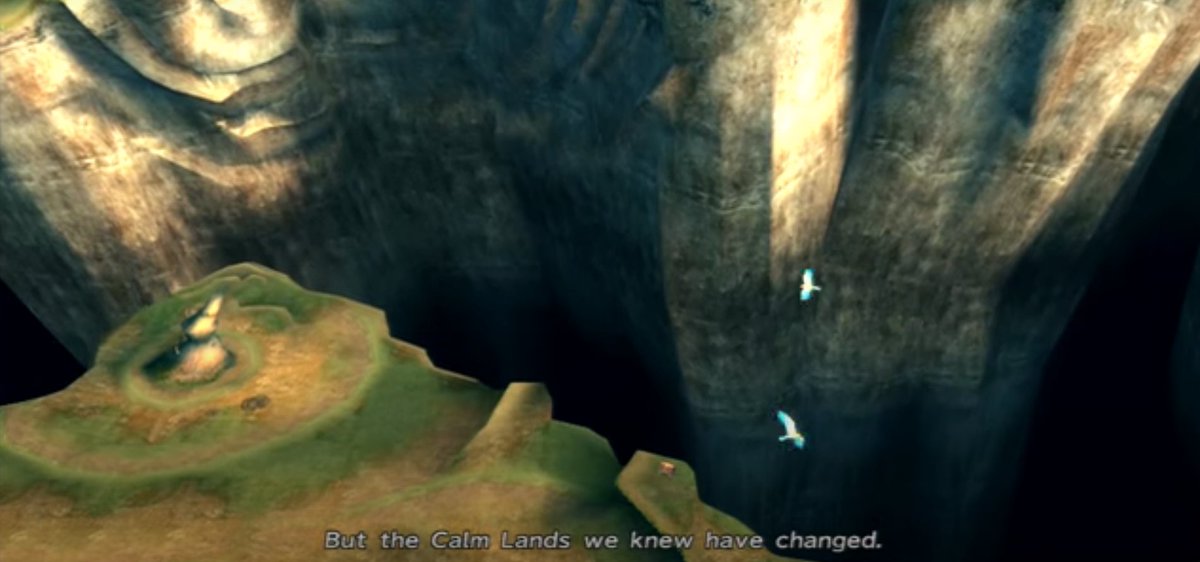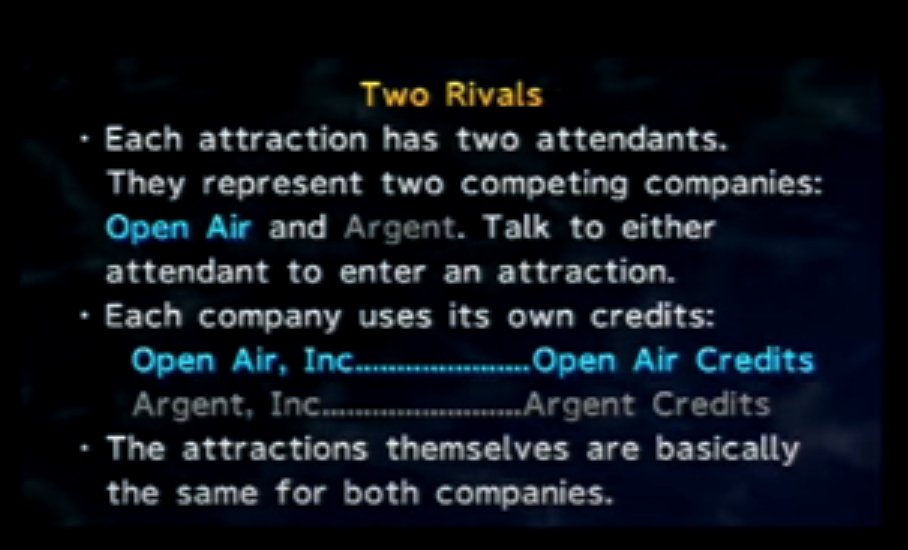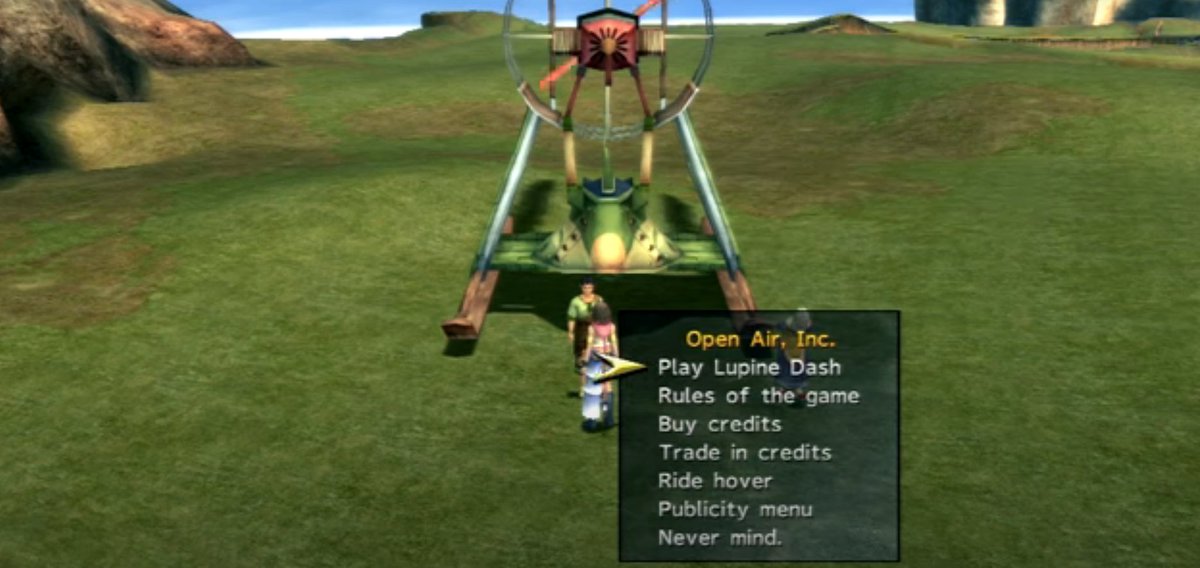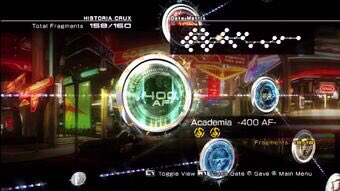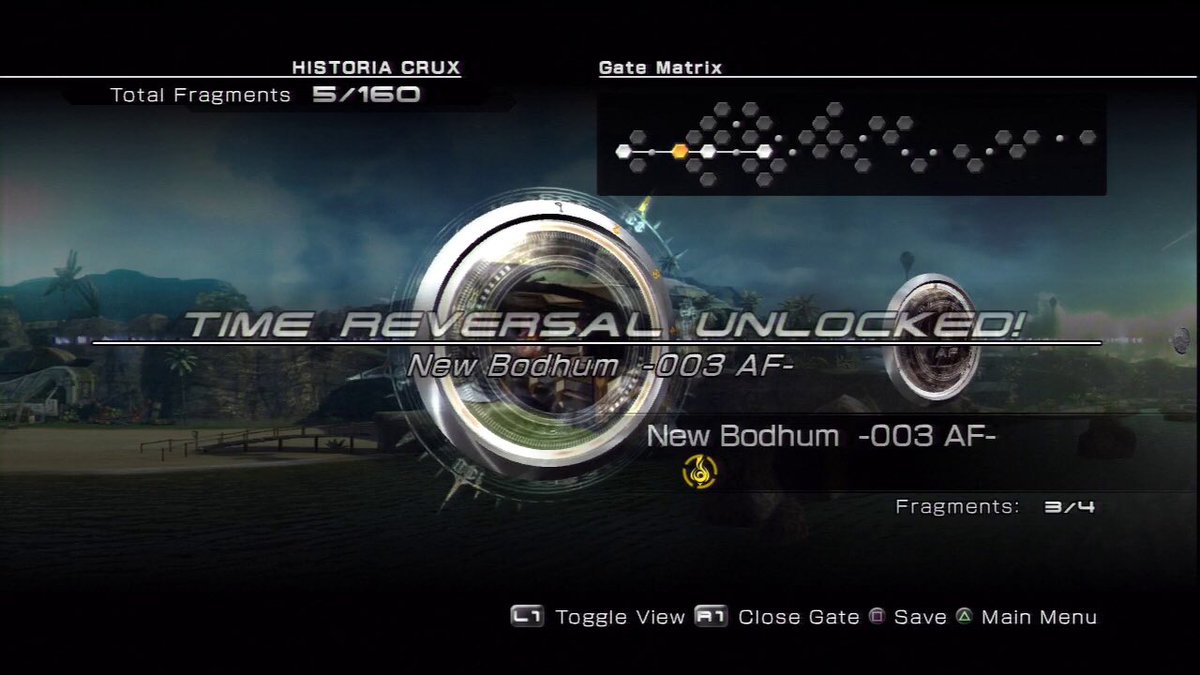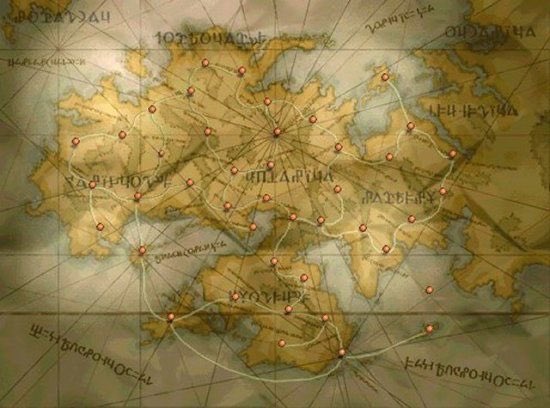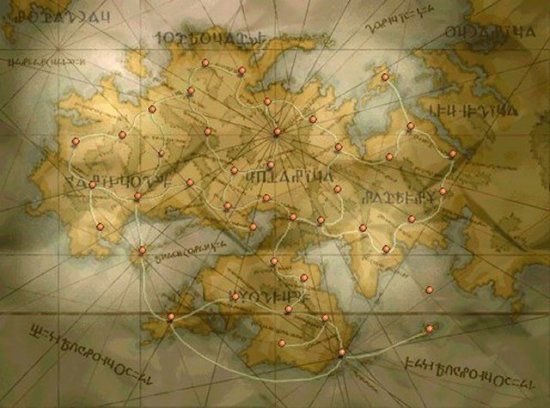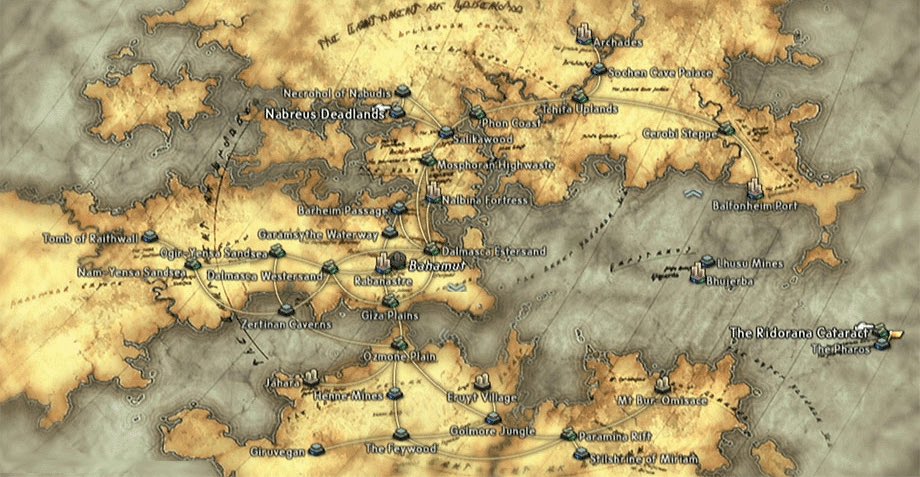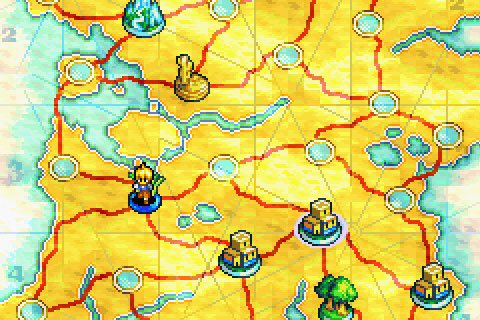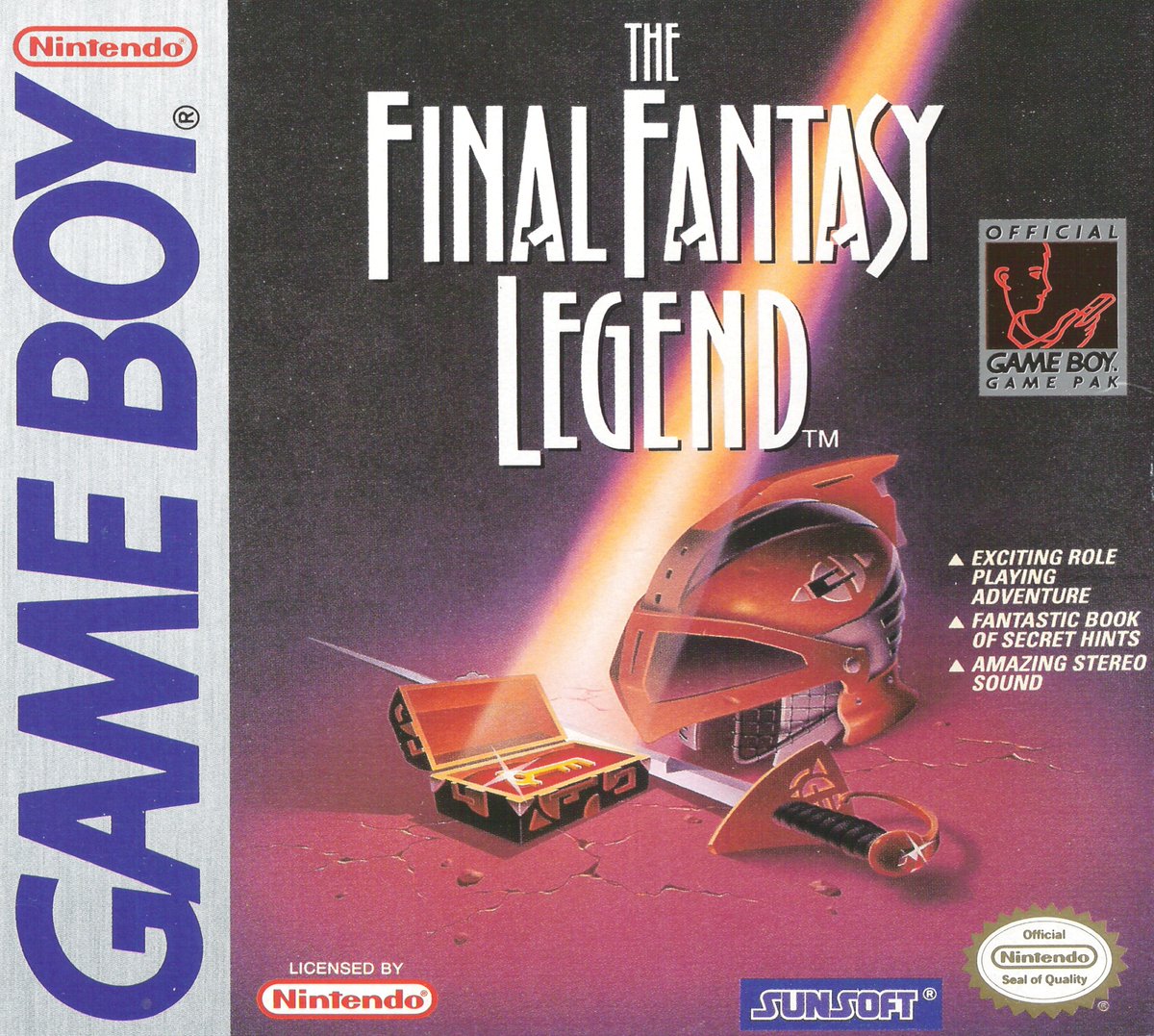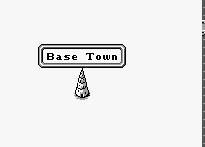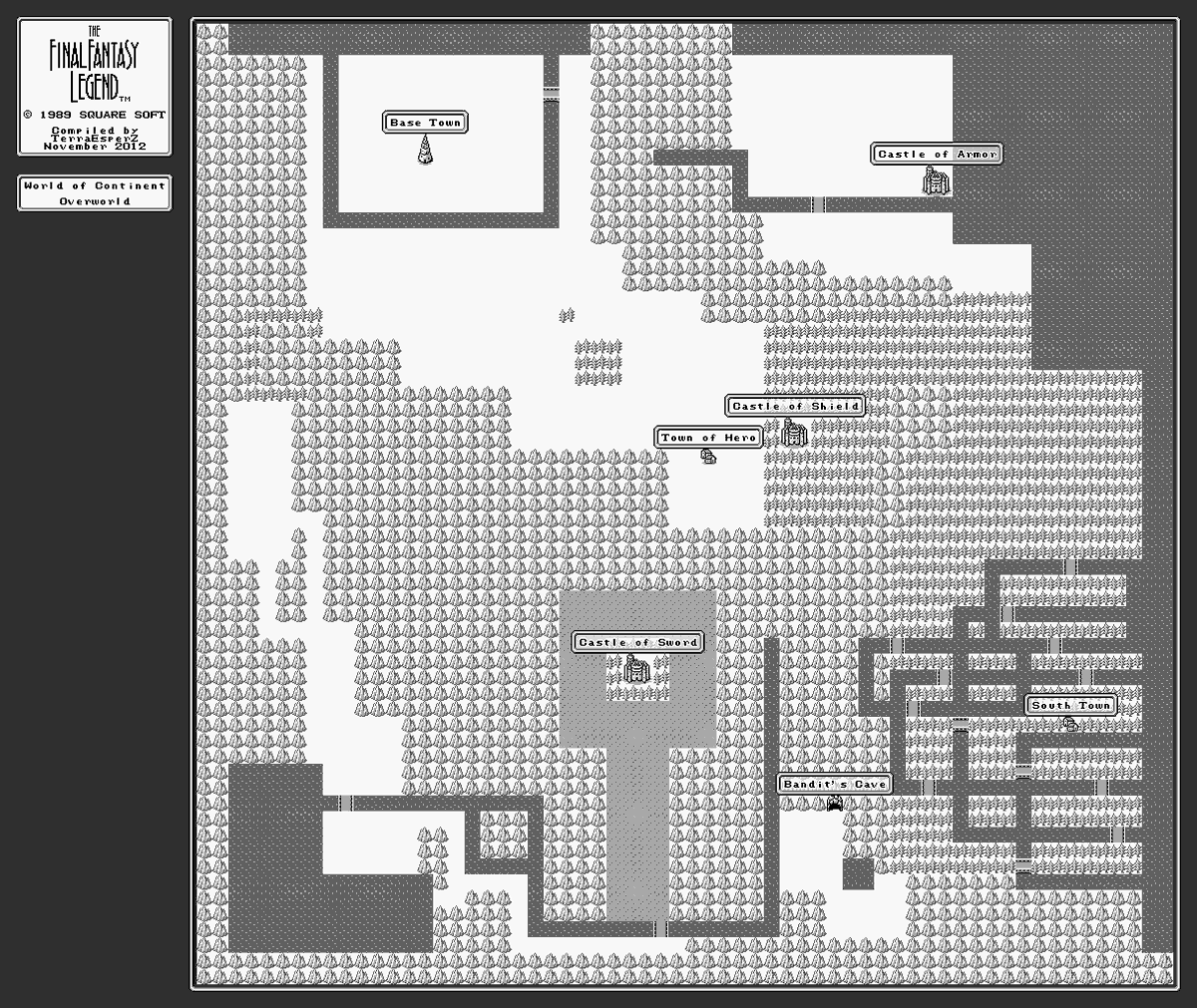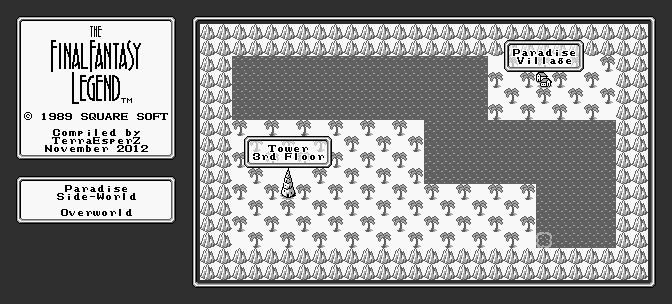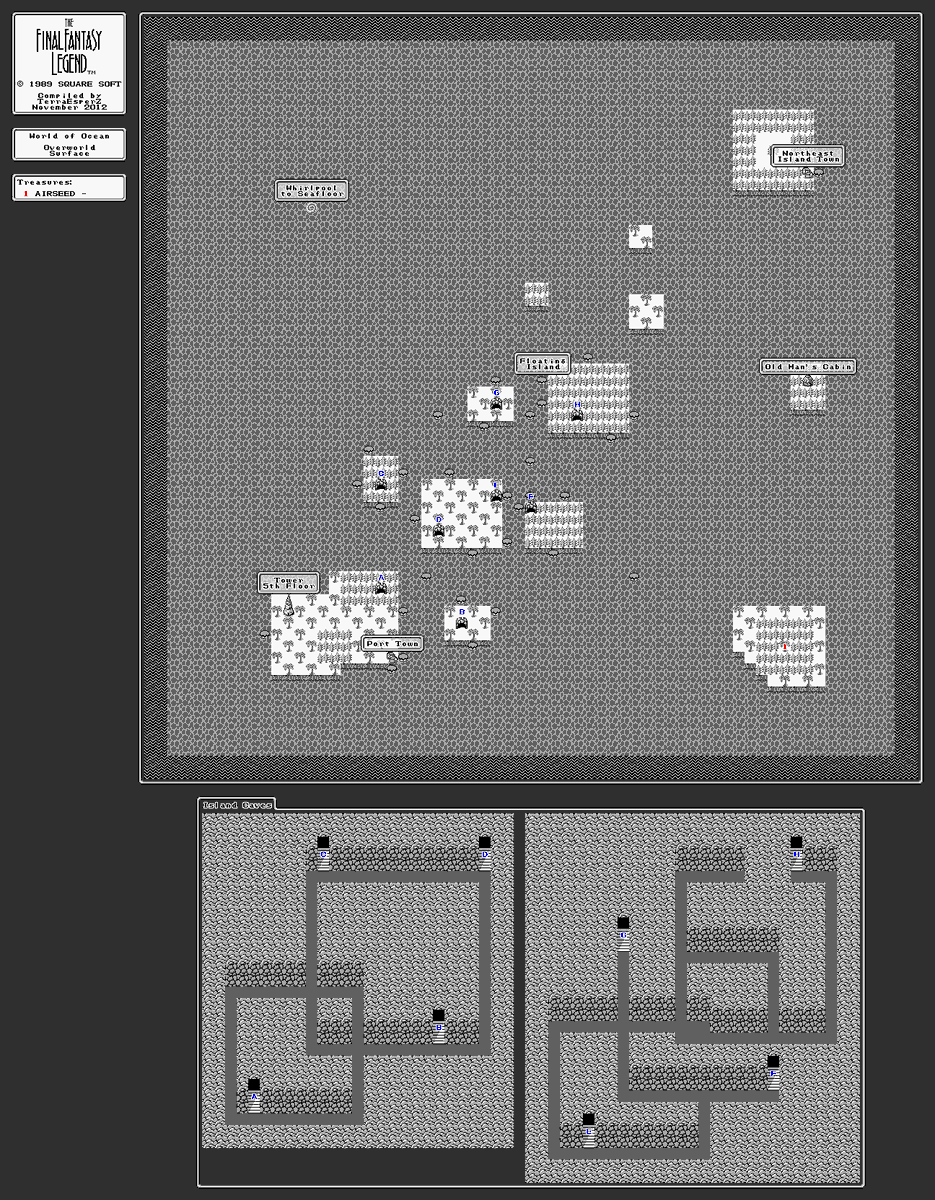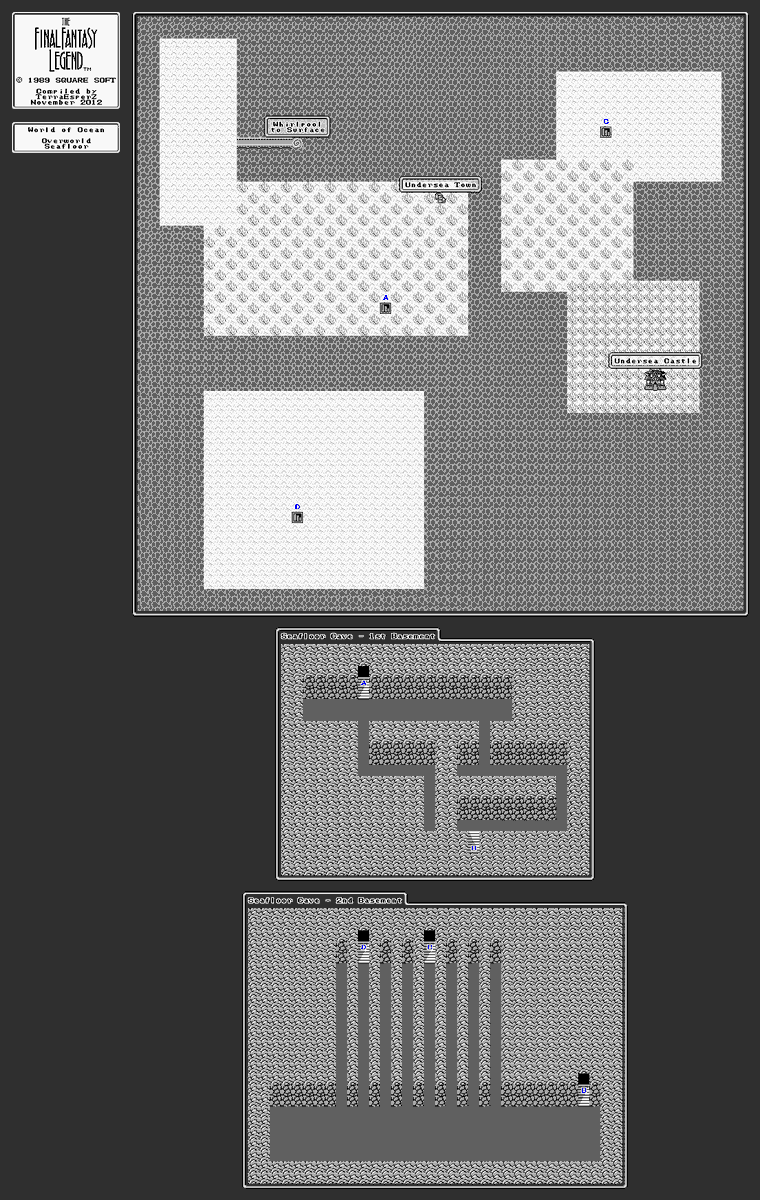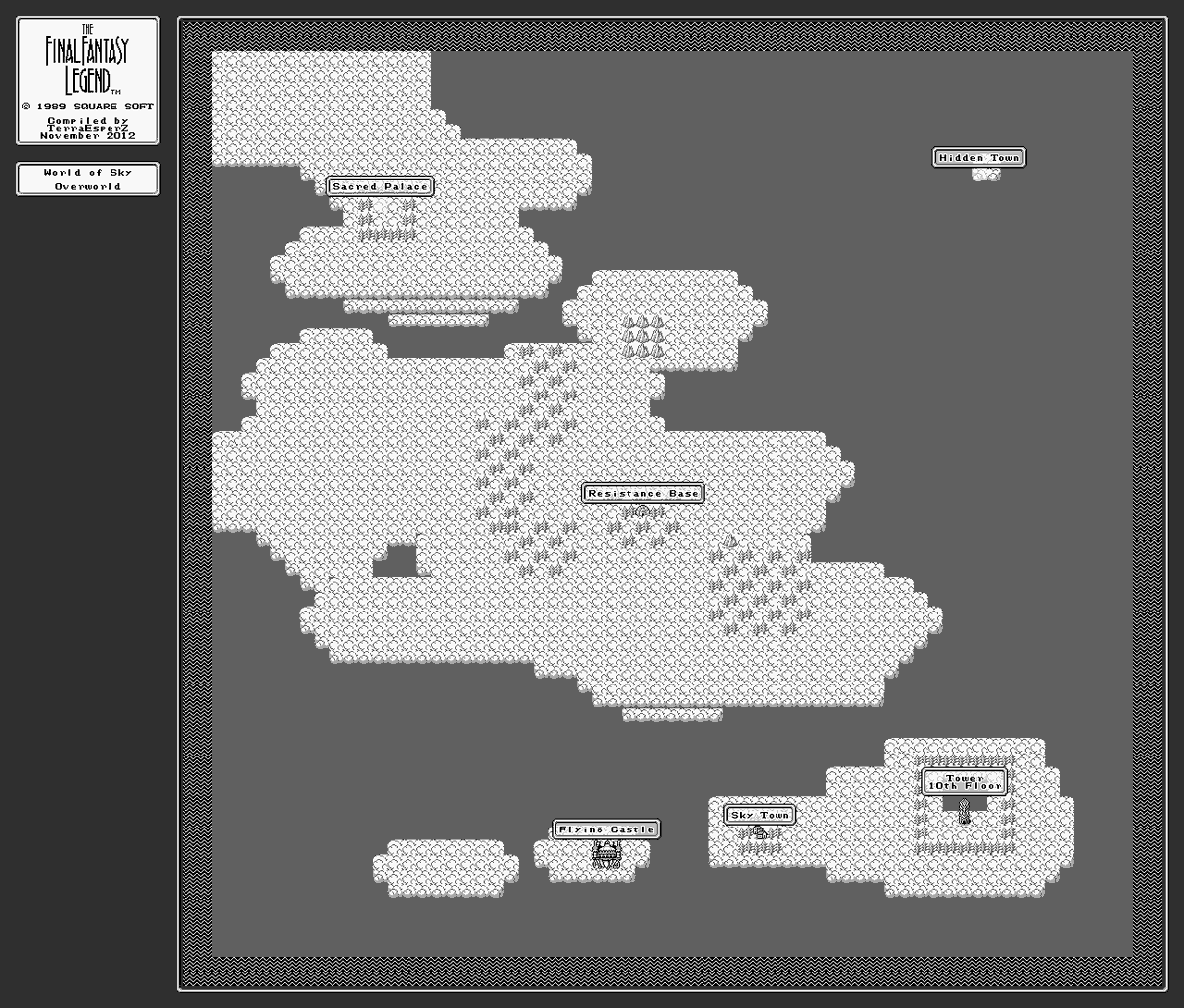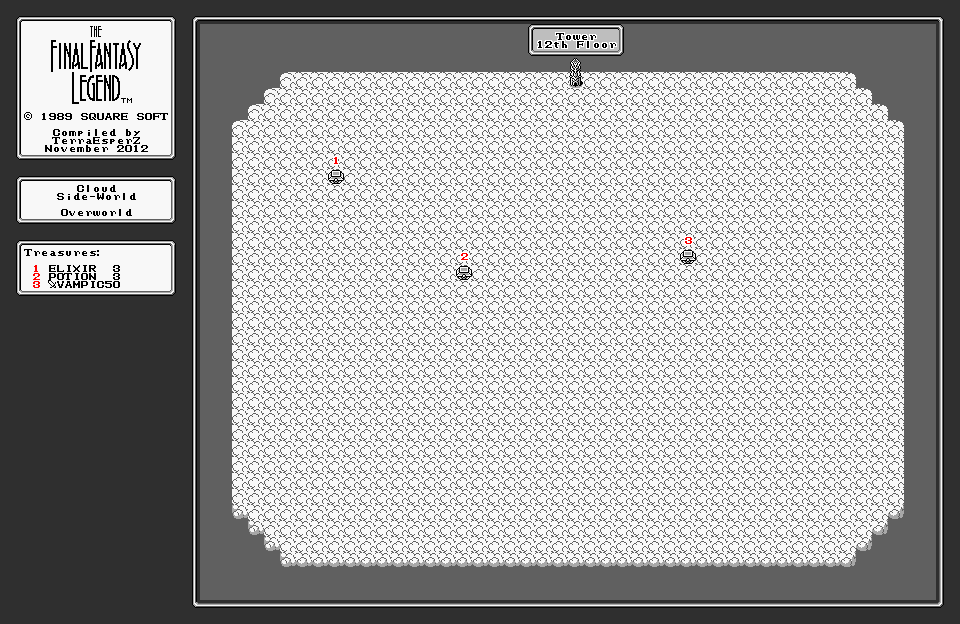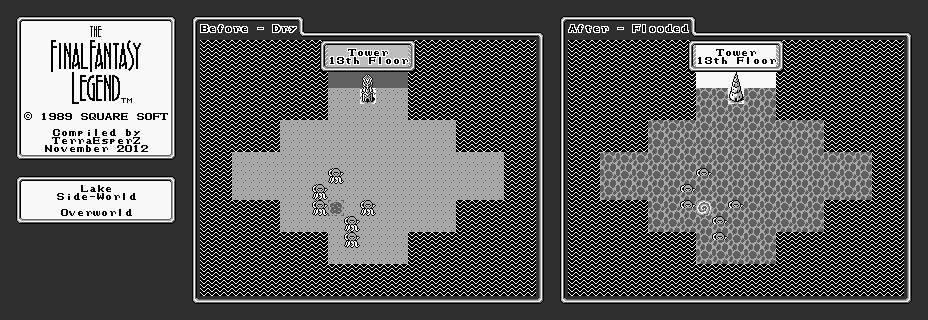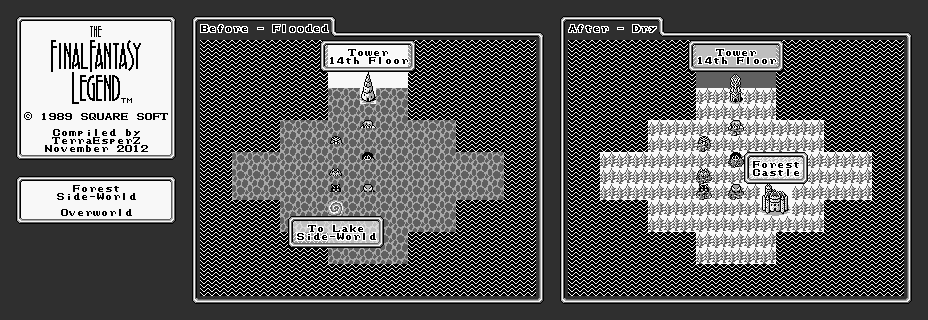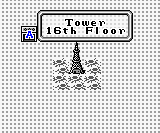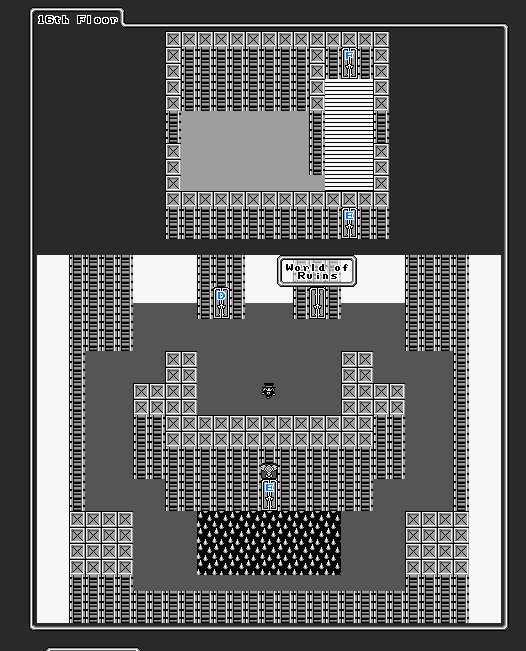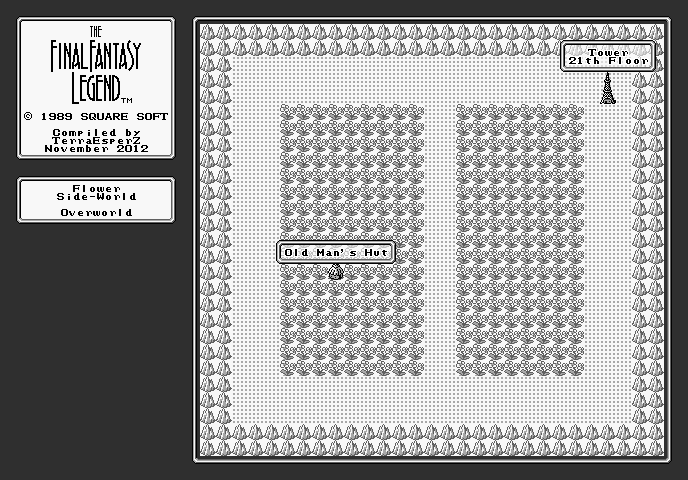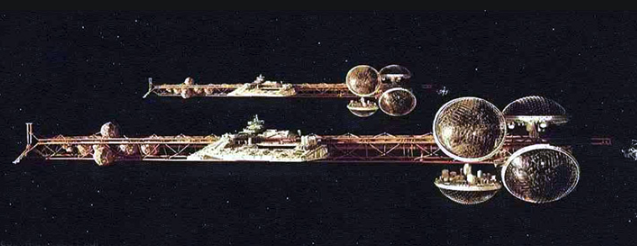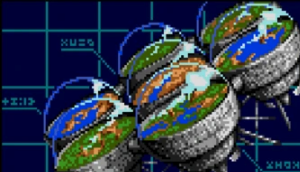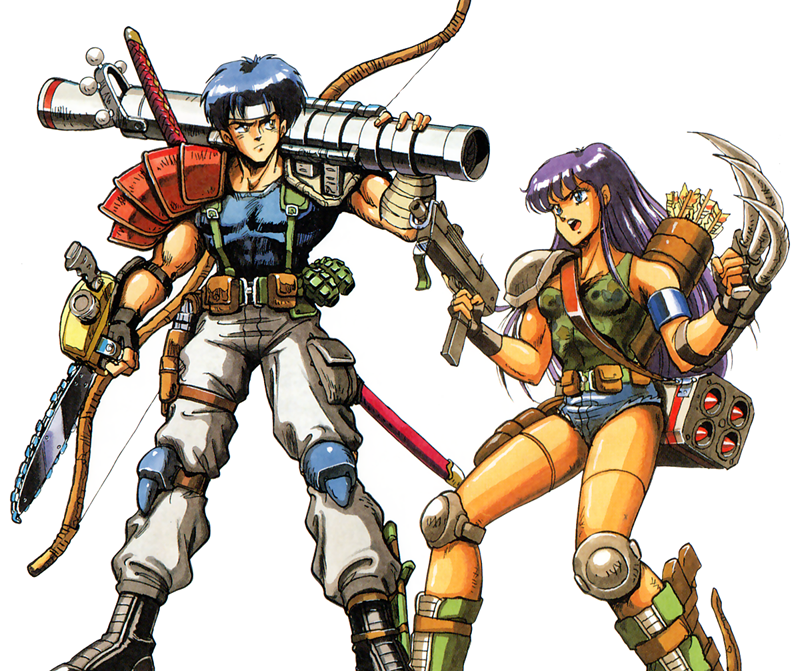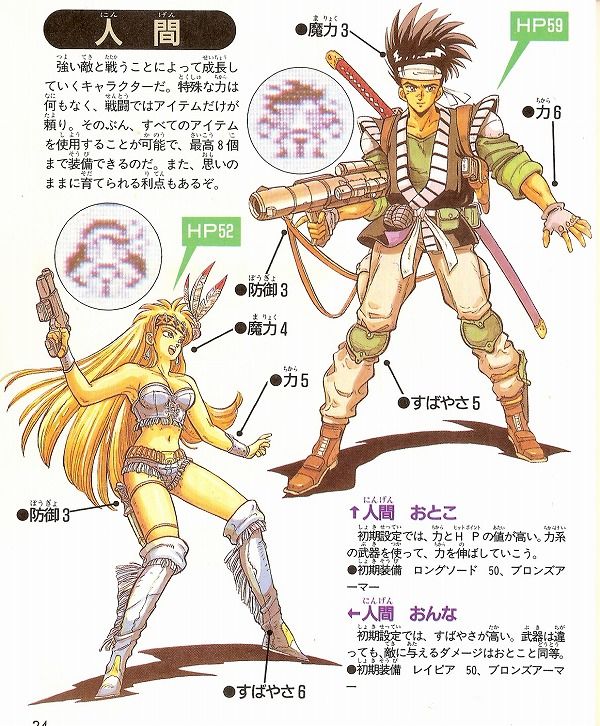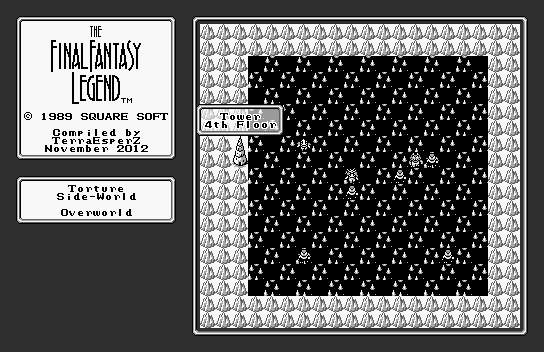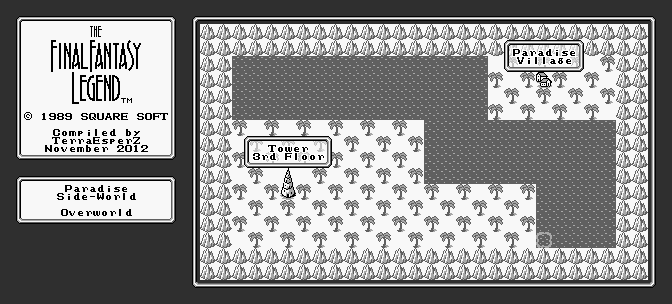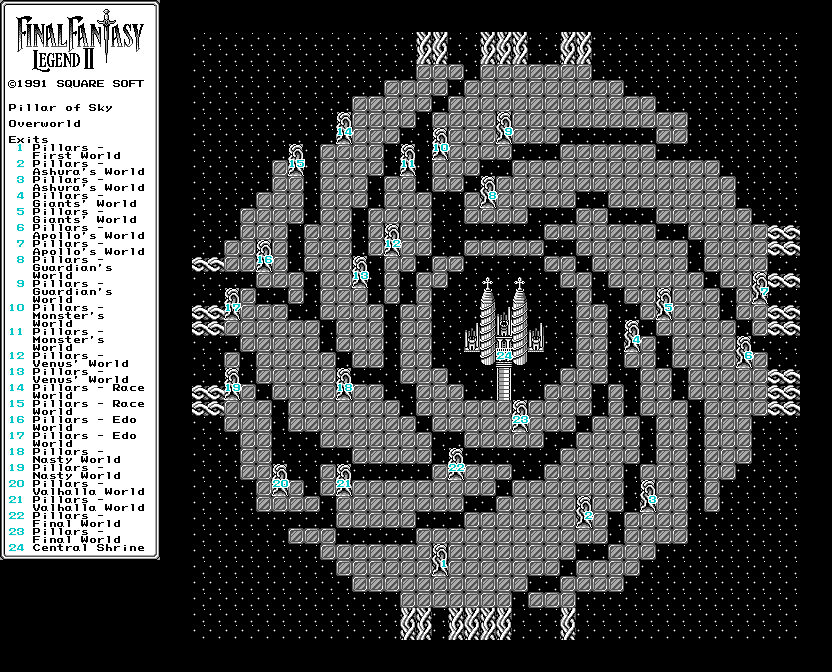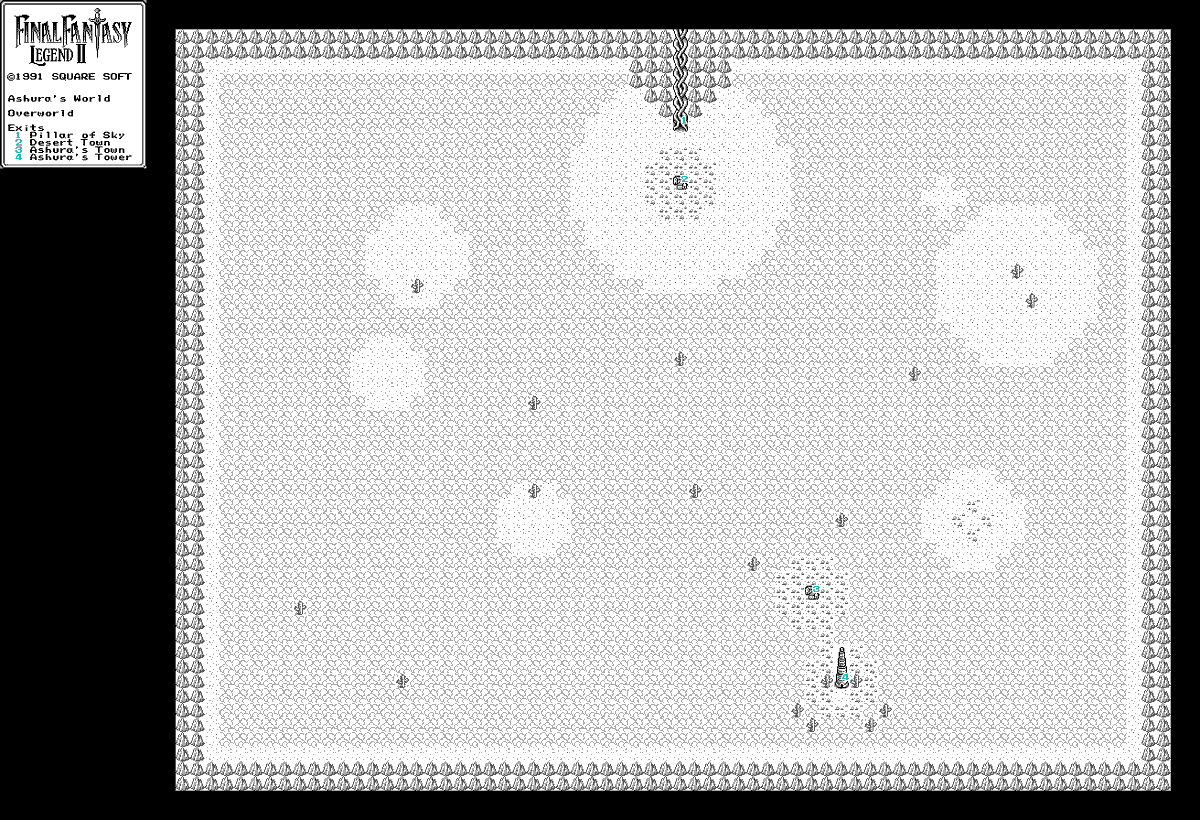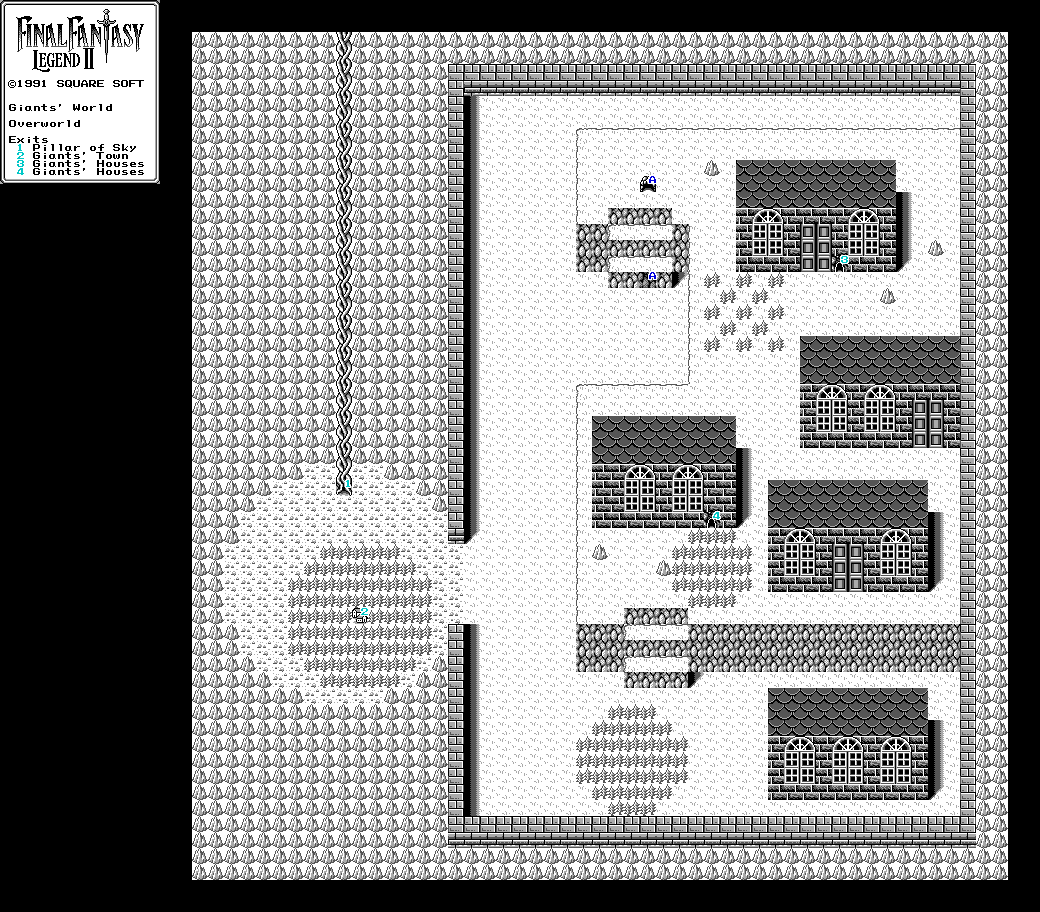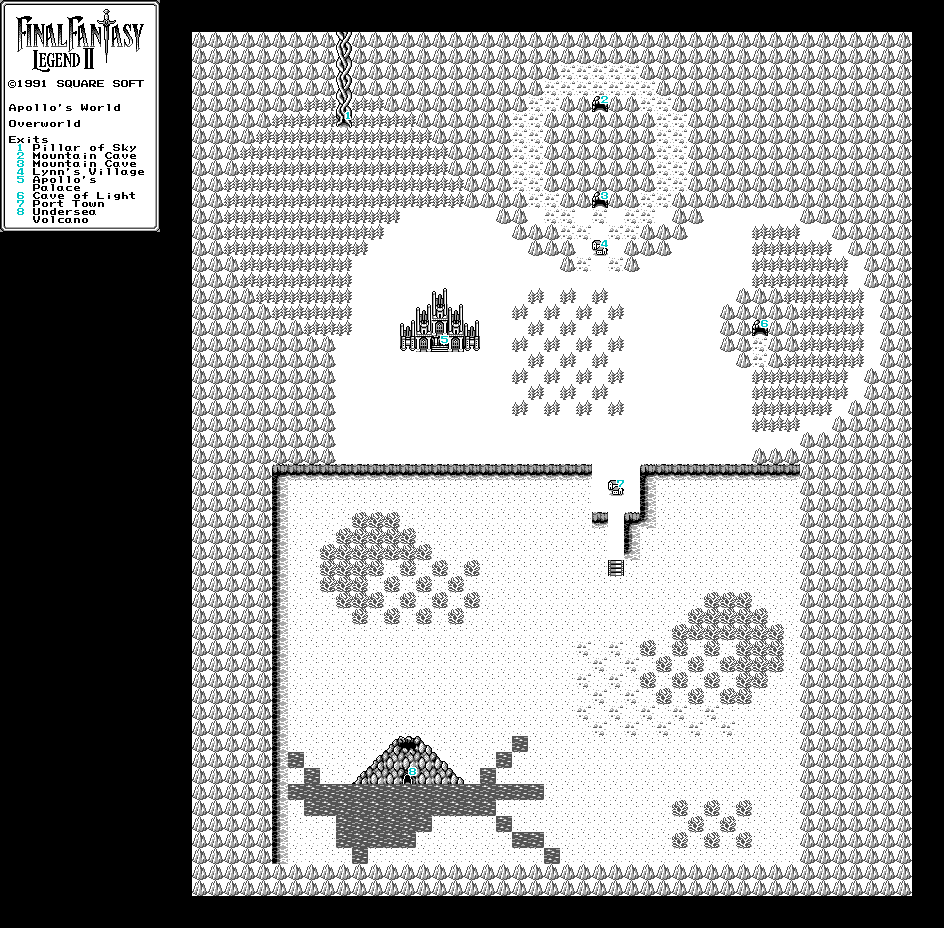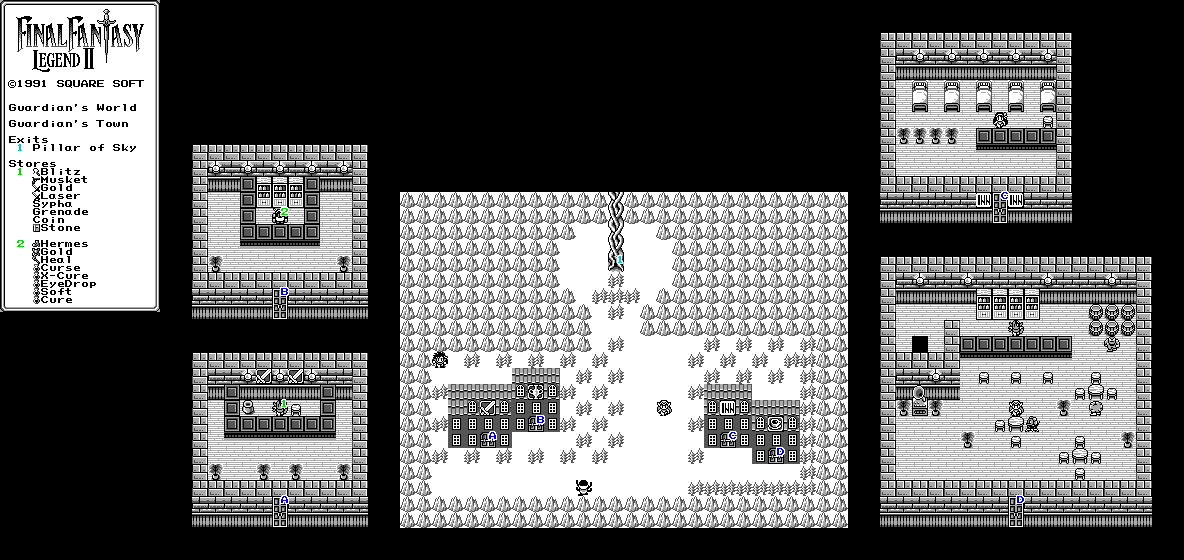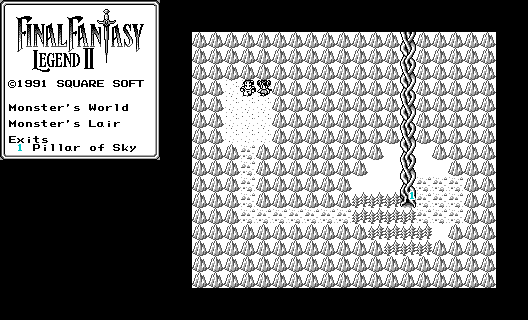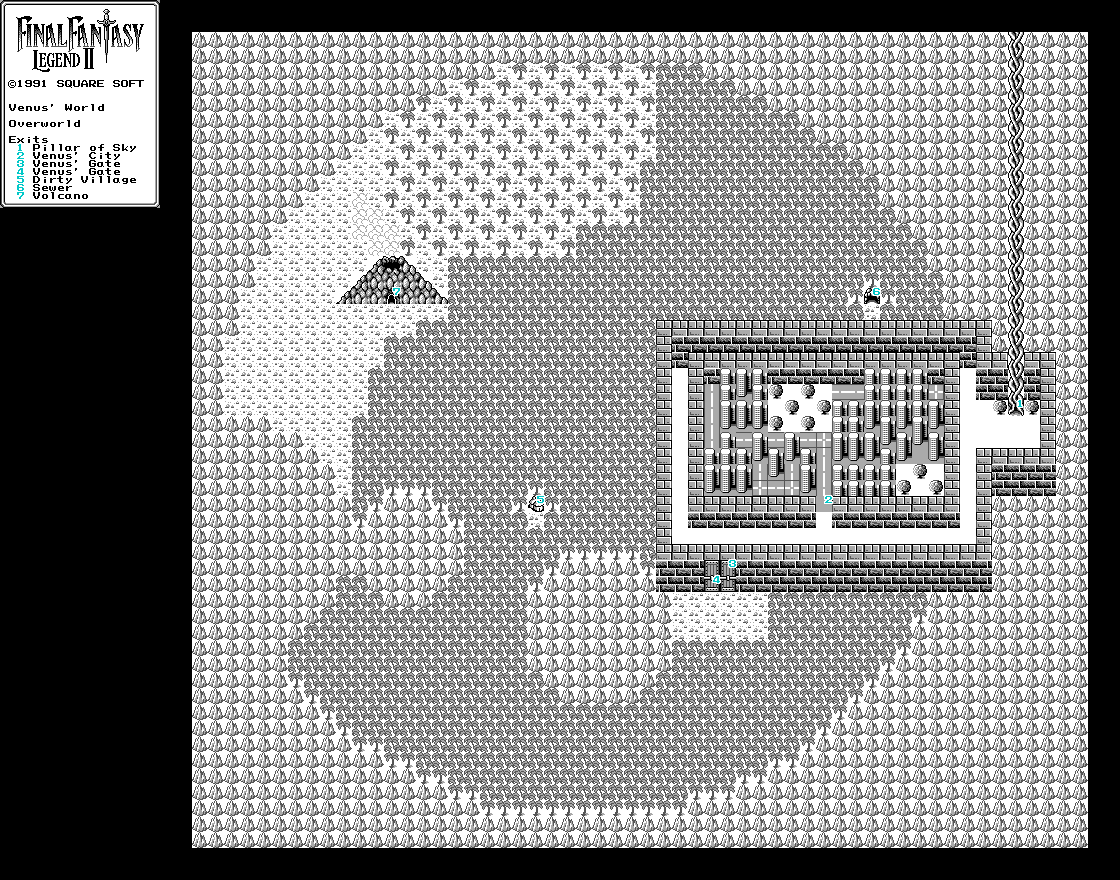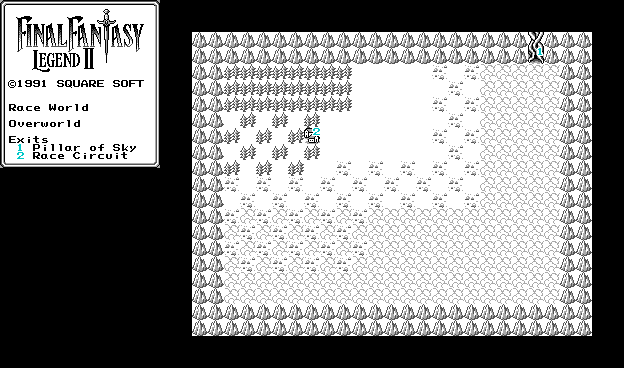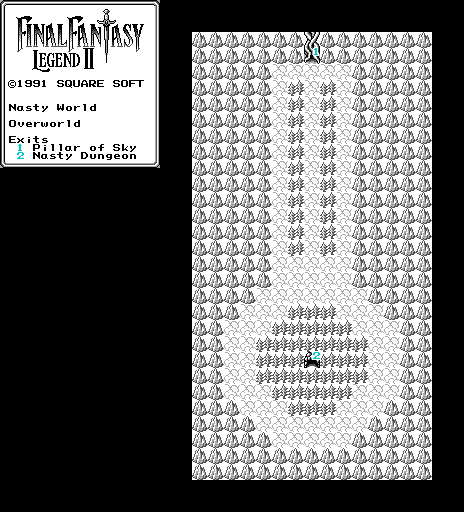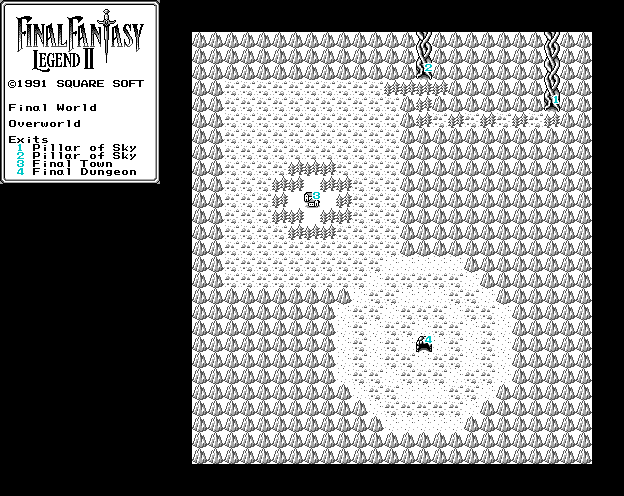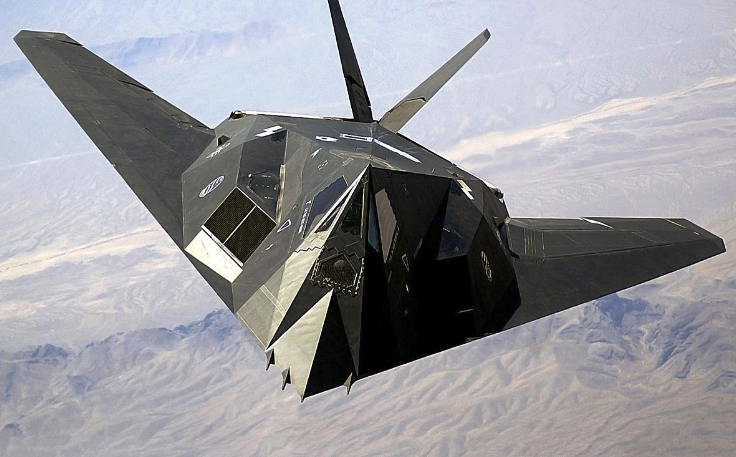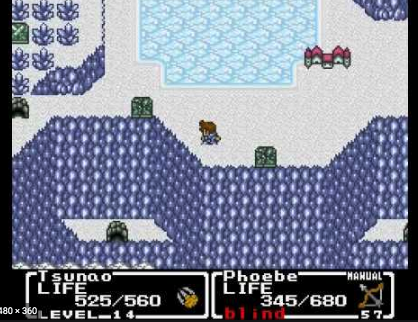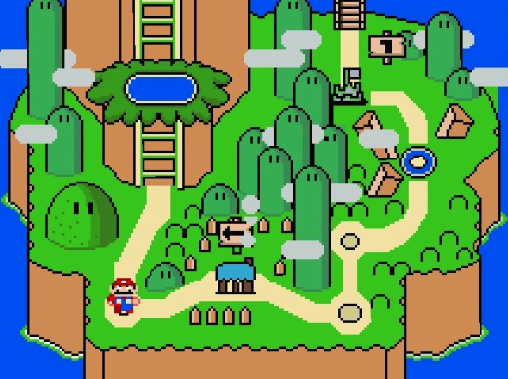Okay, Final Fantasy overworld/world map analysis thread.
I& #39;m just getting these images from wherever. Resolutions vary widely.
FF1.
There& #39;s no name for this world.
I love this one. It was my first Final Fantasy, and this world seems so bright. I associate it with-
I& #39;m just getting these images from wherever. Resolutions vary widely.
FF1.
There& #39;s no name for this world.
I love this one. It was my first Final Fantasy, and this world seems so bright. I associate it with-
-sunny, optimistic adventure.
https://www.youtube.com/watch?v=Ygtz0DDCOyc&ab_channel=TheNexus18AMVs
The">https://www.youtube.com/watch... theme music drives this home.
It& #39;s also a uniquely varied world, especially for the time.
https://www.youtube.com/watch?v=Ygtz0DDCOyc&ab_channel=TheNexus18AMVs
The">https://www.youtube.com/watch... theme music drives this home.
It& #39;s also a uniquely varied world, especially for the time.
Swampy caves, a volcano, a labyrinth of rivers in mountains, the Mosque-of-Samarra-esque mirage tower.
This world felt huge and full of possibility, with so many unique, strange places.
This world felt huge and full of possibility, with so many unique, strange places.
You see a few recurring elements pop up here.
A giant desert.
A waterfall with a secret.
Three primary landmasses.
An isolated town/area only accessible via airship (two in fact).
A lot of these things would show up in later entries.
It also has a fairly robust number of-
A giant desert.
A waterfall with a secret.
Three primary landmasses.
An isolated town/area only accessible via airship (two in fact).
A lot of these things would show up in later entries.
It also has a fairly robust number of-
-towns, etc.
It& #39;s the first one one of the few to feature boat docks.
It& #39;s huge, diverse, and interesting. And vaguely cheerful.
It& #39;s the first one one of the few to feature boat docks.
It& #39;s huge, diverse, and interesting. And vaguely cheerful.
Final Fantasy 2, suitable to it& #39;s darker, melancholic atmosphere, has a world that feels much different. Fewer natural wonders and distinct formations, and it just feels vaguely emptier. It& #39;s heavier on towns versus other types of locations.
It& #39;s also notable as the first-
It& #39;s also notable as the first-
-game to feature a world that can be, in some way, circumnavigated, or at least connects via an unbroken mass.
Once again, there is a huge desert. It also features one of the few snow/tundra/arctic areas in the franchise.
Once again, there is a huge desert. It also features one of the few snow/tundra/arctic areas in the franchise.
This one is less appealing to me, but it suits the tone of the game and the focus of the plot, which is less about adventure and more driven by military conflict.
This would be that last appearance of boat docks for a while.
This would be that last appearance of boat docks for a while.
It& #39;s also the first world to feature a wizard town, or a giant tower. Also the first one to feature a chocobo forest, and an isolated island.
I think, with the attacks on the various towns near the end, it& #39;s also the first time the world alters in any way.
I think, with the attacks on the various towns near the end, it& #39;s also the first time the world alters in any way.
So, on to Final Fantasy 3!
And this REALLY turns up the dial.
It& #39;s a bit known that, after the departure of 2 from the standard of the first game, they decided to revisit the formula and refine it. But what they did was take it to 11.
And this REALLY turns up the dial.
It& #39;s a bit known that, after the departure of 2 from the standard of the first game, they decided to revisit the formula and refine it. But what they did was take it to 11.
Spoilers for FF3, if you& #39;ve never played it, as the world map goes through varying changes.
I first played this on a rom in 1997. I knew NOTHING about it.
I wandered around the overworld, and then...came to an edge.
And saw CLOUDS.
The game starts on a floating continent.
I first played this on a rom in 1997. I knew NOTHING about it.
I wandered around the overworld, and then...came to an edge.
And saw CLOUDS.
The game starts on a floating continent.
Castles, towns, a tower, a mountain, caves, a giant floating Moebius-esque tree, oceans, a desert.
This has SO much going on. It& #39;s wild, diverse, amazing, and incredible.
This has SO much going on. It& #39;s wild, diverse, amazing, and incredible.
I THINK the floating world is the first time there& #39;s an actual sidequest to circumnavigate with a chocobo.
It& #39;s also interesting in mood.
Airy, cool, mysterious. Energetic but not TOO much so.
Compare the overworld music of 2;
It& #39;s also interesting in mood.
Airy, cool, mysterious. Energetic but not TOO much so.
Compare the overworld music of 2;
https://www.youtube.com/watch?v=SaCLoLBdxTU&ab_channel=GBelair">https://www.youtube.com/watch...
compare to 3;
https://www.youtube.com/watch?v=V9xyV-Rz5Jk&t=5s&ab_channel=GBelair
It& #39;s">https://www.youtube.com/watch... very much an impression that the overworld themes of 1 and 2 were a bit synthesized.
https://www.youtube.com/watch?v=V9xyV-Rz5Jk&t=5s&ab_channel=GBelair
It& #39;s">https://www.youtube.com/watch... very much an impression that the overworld themes of 1 and 2 were a bit synthesized.
Regardless, this gives the appearance and feel of a much more "high fantasy" world.
Floating structures, a mechanical tower, crystal caves, a dragon mountain, an ancient Greek-esque shrine, numerous castles, a dwarf cave, etc.
2 was relatively grounded. This takes the-
Floating structures, a mechanical tower, crystal caves, a dragon mountain, an ancient Greek-esque shrine, numerous castles, a dwarf cave, etc.
2 was relatively grounded. This takes the-
-bright natural wonder of 1, and adds many explicitly high fantasy elements.
But that& #39;s not all...
The floating continent is FAR from the only area.
You get an airship, then you fly off...only to find...
But that& #39;s not all...
The floating continent is FAR from the only area.
You get an airship, then you fly off...only to find...
A world of water.
Recall, I was playing a fan translation and knew NOTHING about this game.
I had
NO
NO
FUCKING
IDEA
what was going on.
This was SUCH an amazing reveal.
Recall, I was playing a fan translation and knew NOTHING about this game.
I had
NO
NO
FUCKING
IDEA
what was going on.
This was SUCH an amazing reveal.
I went to a dungeon, did a thing...and the water came down.
The world frozen in time by "the darkness" or dark flood or whatever was once again vibrant and alive.
Another maze of rivers.
An impassable wind canyon.
Cryptic murder statues that could blow the airship up if-
The world frozen in time by "the darkness" or dark flood or whatever was once again vibrant and alive.
Another maze of rivers.
An impassable wind canyon.
Cryptic murder statues that could blow the airship up if-
-you tried to fly past.
Among other things.
They upper the ante even further, in the SAME GAME.
And with the airship you have kind of free-ish reign of it out of the gate. So it& #39;s a little open-world-ish until you talk to more people.
Among other things.
They upper the ante even further, in the SAME GAME.
And with the airship you have kind of free-ish reign of it out of the gate. So it& #39;s a little open-world-ish until you talk to more people.
But it doesn& #39;t end there.
There& #39;s
an effing
underwater section.
As you can see, there& #39;s not a WHOLE lot to it, but still.
Still.
Plus, with the receding of the water, it features the most radical map alteration to date.
There& #39;s
an effing
underwater section.
As you can see, there& #39;s not a WHOLE lot to it, but still.
Still.
Plus, with the receding of the water, it features the most radical map alteration to date.
The airship themes are good, and energetic.
The regular one is cool, giving adventure, vitality, energy, etc. https://www.youtube.com/watch?v=w0DWuY_J-sY&ab_channel=GBelair">https://www.youtube.com/watch...
The regular one is cool, giving adventure, vitality, energy, etc. https://www.youtube.com/watch?v=w0DWuY_J-sY&ab_channel=GBelair">https://www.youtube.com/watch...
But, as this game makes it a point to just continually scale up everything, yo get the MASSIVE high tech battleship, The Invincible, and it sports one of my favorite FF airship themes. https://www.youtube.com/watch?v=JtsAWfhMzCY&ab_channel=GBelair">https://www.youtube.com/watch...
Also, the part where you first board it, and it departs, emerging from the ocean and the music begins playing, is really just great. https://youtu.be/W6oZnVCSHaM ">https://youtu.be/W6oZnVCSH...
OF all the NES titles, 3 is the best, and that they managed to pack SO much in to an NES game is just genuinely astonishing. Plenty of 16 bit JRPG& #39;s, including FF4, didn& #39;t seem to have nearly as much.
Now for a short breather before the thread continues!
Now for a short breather before the thread continues!
Quick note, in both 2 AND 3, and on the flying continent AND the main world, in all of these yo once again see the construction of three primary landmasses.
At the end of this thread I might do a little segment on "what makes a Final Fantasy world". On the design approach itself
At the end of this thread I might do a little segment on "what makes a Final Fantasy world". On the design approach itself
Time for more!
The world won& #39;t save itself, after all.
And to save the world, you don& #39;t just need to know where to go, you also need a way to get there.
Final Fantasy immediately distinguished itself in how you interact with its world via numerous modes of travel.
The world won& #39;t save itself, after all.
And to save the world, you don& #39;t just need to know where to go, you also need a way to get there.
Final Fantasy immediately distinguished itself in how you interact with its world via numerous modes of travel.
FF1 introduces the ship, canoe, and airship. Ships and airships would become a mainstay of there series, and the latter, along with crystals and chocobos, would also become one of the most recognizable and unique aspects of the franchise.
The world seems to much more dynamic with these options, and once again makes it feel like a much bigger adventure. Other JRPG& #39;s and CRPG& #39;s of the time didn& #39;t quite have anything entirely like this. Again, it ups the scale and grandeur of how you interact with the world.
The one exception at the time was Phantasy Star, which had some unique vehicles as well. I could easily do a whole thread on PS worlds.
Anyhow.
Each game introduced a new vehicle or variation.
FF2 gave players a snow sled and the first chocobo.
Anyhow.
Each game introduced a new vehicle or variation.
FF2 gave players a snow sled and the first chocobo.
FF3 adds the giant Invicible, with numerous other airships, including the Nautilus, the first of several underwater craft in the series.
The world becomes fully traversable in ways other RPG worlds were not.
The world becomes fully traversable in ways other RPG worlds were not.
Now, on to Final Fantasy 4!
4 is notable in a few ways.
As with 3, you have several different maps.
First, the main overworld.
It seems a LITTLE less wild and dreamlike than 3, but it has a lot of amazing stuff, including a giant mountain sized tower.
4 is notable in a few ways.
As with 3, you have several different maps.
First, the main overworld.
It seems a LITTLE less wild and dreamlike than 3, but it has a lot of amazing stuff, including a giant mountain sized tower.
Once again, a huge desert. There might be fewer locations, but they& #39;re used well. And you revisit places in a way that isn& #39;t done as dynamically in the previous games.
The world departs a little in that the three masses are a little less apparent here.
The world departs a little in that the three masses are a little less apparent here.
You have arguably three large masses in proximity in the northwestern region, with three moderate sized ones ones in the southwest, southeast, and northeast, and one smaller one in the south.
In the northeast, you also see the first landmass that starts to resemble a chocobo.
In the northeast, you also see the first landmass that starts to resemble a chocobo.
The underworld is interesting. Design wise, the magma functioning as the sun is an amazing idea, albeit horrible implausible. The connection of the tower is great.
Size wise it compares to the floating continent. Mostly caves, as to be expected. Quite visually pleasing.
Size wise it compares to the floating continent. Mostly caves, as to be expected. Quite visually pleasing.
4 had to do something to really stand out from the world of 3, though, and the answer was literally out of this world.
The third map is the moon.
Again, small, and only a few locations, but a nice distinct location. Lacking in oceans or landmasses per se.
The third map is the moon.
Again, small, and only a few locations, but a nice distinct location. Lacking in oceans or landmasses per se.
A new vehicle is added to facilitate space travel, giving the series its first space vessel, the Lunar whale. A nice touch, one I& #39;m not sure people notice; the Lunar Whale& #39;s mode 7 effect and its shadow are slightly different than the two airships, giving the impression it is-
-at a much higher altitude.
On the topic of airships, the Enterprise and the Falcon are the two "regular" ones.
The Enterprise has a retractable mechanical arm to pick up another vehicle (see below) and the falcon has a drill.
On the topic of airships, the Enterprise and the Falcon are the two "regular" ones.
The Enterprise has a retractable mechanical arm to pick up another vehicle (see below) and the falcon has a drill.
Both airships have features related to traversing the world. The falcon lets you drill your way out of the underworld after getting stuck there, and the enterprise lifts the hovercraft, which is used numerous times to cross shallow waters, reaching cave entrances, etc.
So what is the mood of this world?
Not AS big or awe inspiring as 3. More settled, less focus on adventure.
The music strikes a balance of tragedy and adventure, a kind of calm misgiving. It feels "cooler", but not cold like the world of 2. https://www.youtube.com/watch?v=fNDHHkz4G-U&ab_channel=VintaGamersParadise">https://www.youtube.com/watch...
Not AS big or awe inspiring as 3. More settled, less focus on adventure.
The music strikes a balance of tragedy and adventure, a kind of calm misgiving. It feels "cooler", but not cold like the world of 2. https://www.youtube.com/watch?v=fNDHHkz4G-U&ab_channel=VintaGamersParadise">https://www.youtube.com/watch...
The world of 4 features numerous world powers initially living in peace, and, despite the medieval setting, seems a fairly global society with almost modern sensibilities, with fairly strong relations and awareness before the villains take over Baron.
The societies of 1 and 3 don& #39;t seem to have much interaction, and 2 features a crusading empire destroying most everything it can in a fairly unipolar fashion.
4 seems almost idyllic, like the story of a nearly lost utopian world.
4 seems almost idyllic, like the story of a nearly lost utopian world.
https://www.youtube.com/watch?v=bYmXNEYwhoA&ab_channel=NewBrawlgamemusic
The">https://www.youtube.com/watch... underworld has a weird, relaxed, almost goofy feel to it. Slow, laid back, kinda depressing in a strange way?
It& #39;s interesting, but also seems less defined.
The">https://www.youtube.com/watch... underworld has a weird, relaxed, almost goofy feel to it. Slow, laid back, kinda depressing in a strange way?
It& #39;s interesting, but also seems less defined.
The moon feels and sounds appropriately alien.
https://www.youtube.com/watch?v=SqlS30WGqOU&ab_channel=FFMusicCollection
The">https://www.youtube.com/watch... sense of mystery and adventure here comes from the underworld and the moon, one of which was only the stuff of mostly forgotten legend, the other not seen as having anything on it.
https://www.youtube.com/watch?v=SqlS30WGqOU&ab_channel=FFMusicCollection
The">https://www.youtube.com/watch... sense of mystery and adventure here comes from the underworld and the moon, one of which was only the stuff of mostly forgotten legend, the other not seen as having anything on it.
It& #39;s a quiet world for a more introspective story, less about charing in to the unknown and more about personal character growth, arcs, and internal journeys.
Well, let& #39;s look at perhaps the most complicated world.
5 boasts one of the most extensive and convoluted world setups thus far.
So let& #39;s start at the beginning.
This world has always had a few traits not unlike Final Fantasy 1. An inner and outer sea. Giant desert.
5 boasts one of the most extensive and convoluted world setups thus far.
So let& #39;s start at the beginning.
This world has always had a few traits not unlike Final Fantasy 1. An inner and outer sea. Giant desert.
Ancient ruin in the desert.
Isolated mountain town only accessible by airship.
It has two large landmasses and one very broken up large chain of medium masses.
Isolated mountain town only accessible by airship.
It has two large landmasses and one very broken up large chain of medium masses.
It& #39;s kind of a third large mass if you don& #39;t let the inner water distract you.
you see a few alterations to the map, including an isolated area exploding in to a small desert, and the destruction of a few buildings.
you see a few alterations to the map, including an isolated area exploding in to a small desert, and the destruction of a few buildings.
5 is known for it& #39;s world hopping. Partway through, you end up on parallel earth.
This is unique as it has different mountain formations, different colored vegetation, etc.
Once again, 3-4 land masses. Large desert.
This is unique as it has different mountain formations, different colored vegetation, etc.
Once again, 3-4 land masses. Large desert.
The "home" world seems bright, full of adventure and unknown locations. It feels large, in much the way the world of FF1 did, and this is emphasized by the glimpses of the various crystal locations in the beginning.
However, the alien world feels much different. Dark, foreboding, ominous, and somewhat gloomy. The rather dark colors mix with the music, which is a much more tense theme. https://www.youtube.com/watch?v=5-9gNGmKqII&ab_channel=CalcAzn">https://www.youtube.com/watch...
I legit love the simple approach of a slightly darker color palette to drive home a different feel with the second world.
Vehicle wise, we get an airship, a ship, and submarine. The underwater segments are, one again, fairly simple, but effective and welcome. Again, increasing the sense of size.
On the topic of increasing the size of things...
5 features the most radical alteration of the map yet. Long story short, the two worlds used to be one, and to achieve his goal the main villain must make them one again.
Thus, the "new world".
5 features the most radical alteration of the map yet. Long story short, the two worlds used to be one, and to achieve his goal the main villain must make them one again.
Thus, the "new world".
It& #39;s hard to convey how dynamically this was done. Locations seen in the first world, inaccessible at the time, intersect with structures from the second, opening them up.
Others are familiar locations transformed.
It& #39;s done amazingly well.
Others are familiar locations transformed.
It& #39;s done amazingly well.
https://www.youtube.com/watch?v=Cg5jEDNp3zI&t=1s&ab_channel=FFMusicStation
The">https://www.youtube.com/watch... music is once again airy, but with an extremely mysterious vibe. A world familiar, yet new.
The">https://www.youtube.com/watch... music is once again airy, but with an extremely mysterious vibe. A world familiar, yet new.
https://www.youtube.com/watch?v=6QcoIsK2Zrk&ab_channel=TsukiyosOSTs
The">https://www.youtube.com/watch... music for the underwater area is appropriately underwater-y. A little standard, but fitting for a "mysterious depths" kind of feel.
The">https://www.youtube.com/watch... music for the underwater area is appropriately underwater-y. A little standard, but fitting for a "mysterious depths" kind of feel.
But this world undergoes yet ANOTHER variation, as near the end the main villain destroys a number of notable locations near the end.
5 is a game where each of the three worlds has a distinct character, but there are a large number of cohesive elements, so when they re-fuse you get the feel that it does make sense.
A few commonalities from other games are seen.
Giant deserts, giant tower in a desert, abandoned castles, Hellenistic style temples, a floating fortress, etc.
This is also the first one since the original game where a waterfall features a secret. Huge and small waterfalls-
Giant deserts, giant tower in a desert, abandoned castles, Hellenistic style temples, a floating fortress, etc.
This is also the first one since the original game where a waterfall features a secret. Huge and small waterfalls-
-had been map staples all along, but this is the first one since the original where you found a cave behind one.
This game also features, at least in the SNES version, a terrible, awful, game breaking curiosity on the world map.
One cave.
There is, due to a glitch, a single cave where you can land the airship ON the cave tile.
If you step off...and try to step back on the airship...
One cave.
There is, due to a glitch, a single cave where you can land the airship ON the cave tile.
If you step off...and try to step back on the airship...
...you go in the cave.
So just restart.
HOWEVER, if you accidentally save the game?
In that save file, you cannot get back on the airship...and thus cannot finish the game.
So just restart.
HOWEVER, if you accidentally save the game?
In that save file, you cannot get back on the airship...and thus cannot finish the game.
Okay, gonna continue!
Time for more FF world/map analysis!
Time for more FF world/map analysis!
Now, one to 6, one of the more will known world maps.
This one is notable for a few things.
At a glance, the three land masses configuration is back, and much more obvious this time.
Another large desert. Another huge waterfall.
However, this one is also unique in-
This one is notable for a few things.
At a glance, the three land masses configuration is back, and much more obvious this time.
Another large desert. Another huge waterfall.
However, this one is also unique in-
-several ways.
The overall aesthetic/style is a complete departure. 4 and 5 had more or less the same approach. Single tile rivers, mountains, etc. along a fairly discernible grid pattern.
The& #39;s more or less out the window here.
Take rivers, for instance.
The overall aesthetic/style is a complete departure. 4 and 5 had more or less the same approach. Single tile rivers, mountains, etc. along a fairly discernible grid pattern.
The& #39;s more or less out the window here.
Take rivers, for instance.
Look at the rivers of 4, 5, and 6. The rivers in the first two snes games are very rigid, as they were in the NES titles.
It looks moe topographical, more like a REAL river.
It looks moe topographical, more like a REAL river.
You see this with the mountains and coastlines.
Basically it just comes down to more angles, giving it all a more naturalistic feel.
This immediately catches you once you first see it.
In addition, mode 7 is used to "tilt" the map, giving it the look of slightly simulating-
Basically it just comes down to more angles, giving it all a more naturalistic feel.
This immediately catches you once you first see it.
In addition, mode 7 is used to "tilt" the map, giving it the look of slightly simulating-
-distance, making it seem more three dimensional.
VI also adds a feature that would become standard; a HUD/in-game map display.
Previous entries had items, etc. that would display a map, but this completely altered your relation to navigation, and gave-
VI also adds a feature that would become standard; a HUD/in-game map display.
Previous entries had items, etc. that would display a map, but this completely altered your relation to navigation, and gave-
-an immediate view of how large the world was, the scale of things, etc.
This was suitable for the setting. Final Fantasy 6 takes places in a steampunk, 18th-19th century kind of setting as opposed to a medieval fantasy one. This is a much more explored, settled world, with-
This was suitable for the setting. Final Fantasy 6 takes places in a steampunk, 18th-19th century kind of setting as opposed to a medieval fantasy one. This is a much more explored, settled world, with-
-great powers at odds with each other and colonial expansion happening.
The color scheme of the overworld and the entire game suits it. Darker, sepia toned, very much evoking old paintings, old photos from the 1800& #39;s, bronze and gold, etc.
The color scheme of the overworld and the entire game suits it. Darker, sepia toned, very much evoking old paintings, old photos from the 1800& #39;s, bronze and gold, etc.
There is, as with 2 and 4, less a focus on adventure and the unknown. There are a few unfamiliar lands, but for the most part this is a planet that has already been largely explored and charted. Most locations are towns and cities, with a handful of caves. There are perhaps-
-fewer "high fantasy" locations here. No ancient pyramids, crystal towers, Hellenistic temples, or fantasy races (aside from moogles).
In some ways this one is a far more "grounded" setting, which again plays very much in to the plot. A world in the throes of an industrial-
In some ways this one is a far more "grounded" setting, which again plays very much in to the plot. A world in the throes of an industrial-
-revolution, and "magic" is a thing of the distant past that people think may never have existed anyway.
But this isn& #39;t all there is to the world of 6. It& #39;s well known for the apocalyptic midpoint of the game, where the world is once again altered, this time in the most-
But this isn& #39;t all there is to the world of 6. It& #39;s well known for the apocalyptic midpoint of the game, where the world is once again altered, this time in the most-
-dramatic way possible, leading to the "world of ruin".
This was, at the time, COMPLETELY MIND BLOWING.
Geographic features are rearranged, continents broken apart, an underwater geological formation pushed to the surface, etc.
At this point, it becomes more fantasy-like.
This was, at the time, COMPLETELY MIND BLOWING.
Geographic features are rearranged, continents broken apart, an underwater geological formation pushed to the surface, etc.
At this point, it becomes more fantasy-like.
Giant towers, the phoenix cave, dragon lairs, monster lairs, the zone eater, etc.
The shift in color does a lot to signify a polluted, massively damaged world.
One interesting this about the maps of 6 is that none of the mountains are snowcapped as there were in 4 and 5.
The shift in color does a lot to signify a polluted, massively damaged world.
One interesting this about the maps of 6 is that none of the mountains are snowcapped as there were in 4 and 5.
Not even around Narshe, which is a wintry, snowy area.
So, 6 has a very distinct world that works VERY well for what they were going for. It doesn& #39;t have that spark of mystery and the unknown, but it& #39;s obviously going for a much different vibe.
So, 6 has a very distinct world that works VERY well for what they were going for. It doesn& #39;t have that spark of mystery and the unknown, but it& #39;s obviously going for a much different vibe.
Okay, time to resume!
We will be continuing, going in to the PS1 era!
We will be continuing, going in to the PS1 era!
Final Fantasy VII.
There& #39;s a lot to talk about in terms of the leap from 2D to 3D, and I want to do that in a much deeper, more detaield thread dedicated to the topic. But for now, this will be like the others in terms of it being about the evolution of the design of the maps.
There& #39;s a lot to talk about in terms of the leap from 2D to 3D, and I want to do that in a much deeper, more detaield thread dedicated to the topic. But for now, this will be like the others in terms of it being about the evolution of the design of the maps.
Despite the leap to 3D, the map stays well within the design lineage of the what came before. This is hardly surprising, as the first 3D outing shows signs that they were still using plenty 2D concepts in their thought, and the overworld map FUNCTIONS identically to the old-
-ones, so it didn& #39;t need to drastically evolve since it& #39;s the same basic concept.
Once again, we have the three land masses, with mid sized and smaller ones here and there. We have isolated islands, which are becoming more common for sidequests.
Once again, we have the three land masses, with mid sized and smaller ones here and there. We have isolated islands, which are becoming more common for sidequests.
VII does not feature the first landmass to reseble a chocobo (or other type of creature), but this one is probably the most famous.
Thanks to increased memory, we have a greater variety of environments and a stronger feeling of region. For the first time since II, there is-
Thanks to increased memory, we have a greater variety of environments and a stronger feeling of region. For the first time since II, there is-
-a snowy region. Some forests/areas appear tropical. Some are rockier and more arid looking. The addition of topography gives a sense of elevation. Coastlines and rivers are even more coastal and river-y, and elevation once more makes a distinction between a river in a field-
-and one winding through hills and mountains. Same with waterfalls.
Another interesting note, and it didn& #39;t even occur to me until just now...this is the first title since 1 to have a marshland environment of any kind.
Another interesting note, and it didn& #39;t even occur to me until just now...this is the first title since 1 to have a marshland environment of any kind.
Gone are chocobo forests, replaced with chocobo tracks, as this was the first time the birds became involved in minigames, and that is reflected on the world map.
With 3D and greater memory, this is the first time many locations on the map look distinctively like what they are,
With 3D and greater memory, this is the first time many locations on the map look distinctively like what they are,
as opposed to generic graphics/tiles for different location types.
Obviously the landmasses are even more dynamic now. with curves, sharp points, thin tangents, small rock outcroppings, etc.
Obviously the landmasses are even more dynamic now. with curves, sharp points, thin tangents, small rock outcroppings, etc.
Regional distinction intersects with more distinct graphics in terms of terrain, as the mountains around Nibelheim, which textually geologically different due to mako deposits, look unique compared to all the other mountains on the map.
Despite all this, the way you navigate and interact with the map substantially is basically the same. You walk around, look for new locations, and that& #39;s mostly it. There are more events which alter the map (defeating Ultima weapon, etc.) so it feels more alive/organic.
This isn& #39;t all, however. There is, once again, an underwater section. But ti& #39;s small compared to the rest of the world. It has one story-relevant part, but the rest is just bonus areas/sidequests.
It& #39;s used effectively however, with winding underwater passages and rivers-
It& #39;s used effectively however, with winding underwater passages and rivers-
-leading to inland lakes or crashed planes, etc.
Vehicle wise, you get a lot of new stuff to work with, some of it very unique and new.
The Highwind is your basic airship, and works like most all of the airships have thus far.
Vehicle wise, you get a lot of new stuff to work with, some of it very unique and new.
The Highwind is your basic airship, and works like most all of the airships have thus far.
The tiny bronco is a small biplane which, after crashing, is used as a makeshift boat. It functions like most FF ships do, but is still neat and interesting visually.
The land rover is the first car-like vehicle for the overworld, unless you count the hovercraft in FF4.
The land rover is the first car-like vehicle for the overworld, unless you count the hovercraft in FF4.
It works similarly in that in can cross shallow water, though it& #39;s only used for a small portion of the game.
But the most distinct, unique, and new feature in terms of transit comes in the form of chocobos.
But the most distinct, unique, and new feature in terms of transit comes in the form of chocobos.
Without getting in to the minigame details, the ability of the chocobos to climb mountains and cross oceans is new, and introduces areas not accessible even by airship. The map teases you with puzzling, unusual features with no immediately apparent way to access them.
Well, that& #39;s about all I have to say about VII for now, though it seems like I& #39;m missing a few things.
It& #39;s notable less for being a huge, major break and more for simply refining what had come before as the world map goes in to 3D.
So, what is the mood/character of this map?
It& #39;s notable less for being a huge, major break and more for simply refining what had come before as the world map goes in to 3D.
So, what is the mood/character of this map?
This one, once again, has a sense of adventure and the unknown, but in a very particular way.
VII is in a weird cyberpunk/dieselpunk hybrid setting. Midgar is an 80& #39;s sci fi anime, while the world outside feels like a 20& #39;s/30& #39;s pulp adventure magazine thing, like-
VII is in a weird cyberpunk/dieselpunk hybrid setting. Midgar is an 80& #39;s sci fi anime, while the world outside feels like a 20& #39;s/30& #39;s pulp adventure magazine thing, like-
-Doc Savage or Amazing Tales or Weird Fantasy or something like that.
And you get that feel. Once you leave Midgar you visit exotic locales, jungle temples, frozen wastelands, archaeological dig sites, weird factories. There& #39;s a "far off lands" mixed with a "mostly explored-
And you get that feel. Once you leave Midgar you visit exotic locales, jungle temples, frozen wastelands, archaeological dig sites, weird factories. There& #39;s a "far off lands" mixed with a "mostly explored-
-world" sense to it all.
The feel is subtle and nuanced, but one of my favorites in terms of overworld map character.
The feel is subtle and nuanced, but one of my favorites in terms of overworld map character.
I might get back to VIII later today, which is a very interesting map and things start to get more unusual, with one of the more distinct yet subtle "moods" for the world.
Okay, let& #39;s head over to VIII!
At first glance a few things are notable.
The triple land mass approach is more blurred here. It& #39;s more like on isolated mass and three that have small connections, making one but each component is pretty distinct.
At first glance a few things are notable.
The triple land mass approach is more blurred here. It& #39;s more like on isolated mass and three that have small connections, making one but each component is pretty distinct.
Not just in shape/geography but terrain. The western landmass is green, lush, and fairly temperate, with rolling hills, forests, and some deserts.
The three collided ones vary and are more mono-environmental. Ice tundra to the north, a giant forest, a sort of arid region, and-
The three collided ones vary and are more mono-environmental. Ice tundra to the north, a giant forest, a sort of arid region, and-
-a blasted ruined wasteland)
You will also note the line in the middle.
This world is really unique and its hard to know where to start in analyzing it.
However, lets cover some conceptual things that are important.
You will also note the line in the middle.
This world is really unique and its hard to know where to start in analyzing it.
However, lets cover some conceptual things that are important.
We& #39;ve seen high fantasy, steampunk, and a cyberpunk/dieselpunk hybrid world.
VIII is unique in two ways.
1. A much more futuristic world overall.
2. It& #39;s explicitly intended to have a European feel.
This means a lot in terms of worldbuilding and geography because the story-
VIII is unique in two ways.
1. A much more futuristic world overall.
2. It& #39;s explicitly intended to have a European feel.
This means a lot in terms of worldbuilding and geography because the story-
-and backstory are very much centered on the idea of conflicts between great powers, and a mercenary force involved in said conflicts.
In previous games, the political/social regions were FAR less defined.
Where were the borders or Cornelia? Baron? In some games, many-
In previous games, the political/social regions were FAR less defined.
Where were the borders or Cornelia? Baron? In some games, many-
-regions just seem autonomous, with no clear political authority over them.
In VII, Shinra just vaguely controls the world.
VIII, however, involves a lot of different powers in conflict across the world.
Or at least that& #39;s the conceit.
There& #39;s the idea of a calm, tranquil-
In VII, Shinra just vaguely controls the world.
VIII, however, involves a lot of different powers in conflict across the world.
Or at least that& #39;s the conceit.
There& #39;s the idea of a calm, tranquil-
-world with conflict brewing beneath the placid surface.
But we will return to that after looking at the larger picture of the map itself.
VIII ups the detail. A lot. It looks far more realistic than VII, esp. in terms of things like mountains.
But we will return to that after looking at the larger picture of the map itself.
VIII ups the detail. A lot. It looks far more realistic than VII, esp. in terms of things like mountains.
More detail, more texture, and it looks more realistic. It also matters that the map model and battle model are all uniform, and of more "realistic" proportions, so it looks more like a person standing in a field than ever before.
A more peculiar thing, though, is it seems slightly less varied in topography and elevation. There are plains, and the tops of cliffs, but it seems kinda like two clearly defined levels, with fewer slopes and hills than in VII.
A lot of coasts/edges have this drop-off-
A lot of coasts/edges have this drop-off-
-effect.
Regardless, textures and things look more naturalistic.
Another unique feature is the presence of roads and train tracks. These were not seen on the map in VII, though roads and train tracks definitely existed in that world.
They add another level of detail and-
Regardless, textures and things look more naturalistic.
Another unique feature is the presence of roads and train tracks. These were not seen on the map in VII, though roads and train tracks definitely existed in that world.
They add another level of detail and-
-speak to the more developed nature of the setting.
You can also rent a car, though it& #39;s purely optional, and take trains to get around (the story forces this and you can do it on your own.)
This brings up another peculiarity; you use transit methods a lot, from the get-go.
You can also rent a car, though it& #39;s purely optional, and take trains to get around (the story forces this and you can do it on your own.)
This brings up another peculiarity; you use transit methods a lot, from the get-go.
You never feel like you traverse this map in the same way, by foot, that you do in others. On the one hand, this fits with the modern setting. Though it does make the map feel somewhat underutilized. It never feels like as much of a character in the game as III or VII& #39;s maps do.
It& #39;s more like IV in that regard, where you do relatively little walking and end up using assorted transit methods fairly early on.
So to an extent, the map fades in to the background.
For instance, I can& #39;t think of any times doing sidequests or backtracking where it& #39;s-
So to an extent, the map fades in to the background.
For instance, I can& #39;t think of any times doing sidequests or backtracking where it& #39;s-
-advantageous to use the cars or trains. So they don& #39;t feel as utilized as they could be.
Part of this is also that you get full access to the world via Balamb Garden VERY early on.
Part of this is also that you get full access to the world via Balamb Garden VERY early on.
A flying city-building-arcology ship is a cool idea, and it plays a unique role in the story. It doesn& #39;t work exactly like any previously seen method of transit, and gives you access to 90% of the map. A few things are reserved for the airship.
In terms of geography, vegetation, etc. most areas are pretty distinct. The deserts on the western landmass seem a bit different than the western one. Forests have variation.
Some mountains and cliffs look different in different regions, so areas start to feel more localized.
Some mountains and cliffs look different in different regions, so areas start to feel more localized.
I found this via the Final Fantasy wiki. This is another unique feature; there are distinct regions, the names of which you see in the menu and save file names.
These are more trivia, and knowing their names doesn& #39;t have much direct in-game benefit. But its an interesting feature only found in VIII and IX.
The geography of this world also speaks to the backstory in specific ways not seen in other entries. The wasteland of Centra-
The geography of this world also speaks to the backstory in specific ways not seen in other entries. The wasteland of Centra-
-and the huge crater-like blast splatter of islands is where a previous Lunar Cry landed. The crater in Trabia, which causes a weird interaction with the Garden in ship mode, is another unique thing (though there is apparently disagreement on what it is. I was always-)
(-under the impression that this is where the crystal pillar from the Lunatic Pandora was excavated, but apparently it was not.)
Let& #39;s talk about three of the most unique aspects of the map, though.
First, Fishermans Horizon. A huge artificial city-island in the middle of the ocean, with a giant solar panel array.
Apart from looking cool, it adds to the character of the sci-fi setting.
First, Fishermans Horizon. A huge artificial city-island in the middle of the ocean, with a giant solar panel array.
Apart from looking cool, it adds to the character of the sci-fi setting.
The huge intercontinental rail bridge, which passes through F.H., is the second unique feature. It plays a notable story role and it being abandoned contributes to the character and narrative of the world.
Esthar is the third. The sheer size of the city on the overworld map is astounding, and was unlike anything that had come before it. It& #39;s dramatic and incredible.
You also have your hidden island, orin this case a military base, at the corner of the map, and some smaller islands with high level/unusual enemies.
Chocobo forests return, but America players lost out here because the chocobo minigame required a peripheral called a-
Chocobo forests return, but America players lost out here because the chocobo minigame required a peripheral called a-
-Pocketstaton. But the Pocketstation was never released outside of Japan, so that aspect was unplayable, and the chocobo related stuff is just in the background and easy to miss, especially since you never need to use one in the main story.
Now, back to the aforementioned political borders, nations, etc.
This game is unusual in that the emptiness of the map seems notably stark. For story reasons, Centra is especially barren, but the effect of a huge continent with very little on it doesn& #39;t QUITE-
This game is unusual in that the emptiness of the map seems notably stark. For story reasons, Centra is especially barren, but the effect of a huge continent with very little on it doesn& #39;t QUITE-
-land right. Same with the giant forest north of Esthar. Many regions of the world seem empty. There are hidden draw points and things like that, but overall there& #39;s...a lot of nothing at times.
Edea& #39;s orphanage being in the middle of nowhere comes across as kind of odd in-
Edea& #39;s orphanage being in the middle of nowhere comes across as kind of odd in-
-relation to the rest of the story.
There are two main powers, Galbadia and Esthar, but you have numerous mercenary schools involved in all these conflicts. But there are only other minor countries, and Trabia doesn& #39;t seem to have any settlements at all.
There are two main powers, Galbadia and Esthar, but you have numerous mercenary schools involved in all these conflicts. But there are only other minor countries, and Trabia doesn& #39;t seem to have any settlements at all.
Many JRPG& #39;s have this issue, and you kind of assume that there are other towns and cities but you don& #39;t see them. But the realism of the map, and the nature of the story, makes it especially noticeable. I also just wish there was more Centra and that the huge forest mattered-
-more.
No underwater section here. There is SORT OF another world, when you go in to the time compressed world, but all it does is seal off towns and cities with energy fields, and adds the teleportation arches to reach Ultimecia& #39;s castle.
No underwater section here. There is SORT OF another world, when you go in to the time compressed world, but all it does is seal off towns and cities with energy fields, and adds the teleportation arches to reach Ultimecia& #39;s castle.
One notable map event is when the Lunatic Pandora is retrieved from the sea, and is moving around. It looks so huge and ominous and is genuinely very unnerving to look at.
One unique feature is that the world map HUD is supplement with a 3D globe map of the world. I don& #39;t find it as useful as the map graphic, but it& #39;s still cool looking.
So, character and mood of this world?
It& #39;s unusually clam and tranquil, which fits this idea of an ongoing cold war/truce that& #39;s potentially about to break. The mood is creates, via visuals and music, suits the story well.
It& #39;s unusually clam and tranquil, which fits this idea of an ongoing cold war/truce that& #39;s potentially about to break. The mood is creates, via visuals and music, suits the story well.
OKAY!
U KNOW WHAT TIME IS IS
TIME FOR MORE FINAL FANTASY MAP THREAD!
TIME FOR FINAL FANTASY IX!
U KNOW WHAT TIME IS IS
TIME FOR MORE FINAL FANTASY MAP THREAD!
TIME FOR FINAL FANTASY IX!
At a glance, a few things stand out. We mostly have the three large land masses, and a moderate sized one. We have a frozen north again. We have arid areas. We have a thing in the corner of the map. A lush green area. And a vague inland-outland sea.
I hadn& #39;t mentioned that part before, but most all of these maps feature the landmasses in something of a "ring" formation, with part of the sea being interior, and an exterior sea. These are connected to varying degrees, with this one VERY open, while some like FF1 and-
-FF5 and much more enclosed seas only connected to the outer sea by small canals.
This one also has a LOT of arid land, comparable to VIII, whereas most other maps are far greener and more lush.
This one also has a LOT of arid land, comparable to VIII, whereas most other maps are far greener and more lush.
The arrangement and geography relates to some story concepts. The southeastern continent, the "mist continent" is the "known world". The northeastern continent is the "outer continent", some contact but it& #39;s minimal. The western landmass is the "forgotten continent", filled with-
-strange esoteric ruins, while the northern moderate sized one is the "lost continent", the frozen north. There are various small islands that are have assorted items of note as well.
The mist continent has a unique geographic arrangement. In this world, the lower regions of the mist continent are filled with a supernatural mist that is connected to spawning monsters, but it can also serve as fuel, esp. for airships.
Given the danger of the mist, there are-
Given the danger of the mist, there are-
-very few settlements in the lowands, so everything is built on the higher cliffs and bluffs above the mist. Alexandria, Treno, Lindblum, etc. This si a very interesting approach, with this affluent, radiant, populated upper rim and a mysterious, danger filled monstrous-
-wilderness.
The intent, of a somewhat closed off well developed continent and a larger unexplored world beyond, definitely comes across. This continent is settled but still dangerous for environmental reasons, and the world beyond it feels a mystery. This is the first-
The intent, of a somewhat closed off well developed continent and a larger unexplored world beyond, definitely comes across. This continent is settled but still dangerous for environmental reasons, and the world beyond it feels a mystery. This is the first-
-game in a while where they majority of the world feels extremely unexplored, with mystery and excitement waiting for you.
In fact, for a good portion of the game, you only have an in-game map OF the mist continent, so the reveal of the rest of the world doesn& #39;t come until later.
You eventually go elsewhere. The outer continent is a rock wasteland, with caves, a hidden base, a dwarven settlement-
You eventually go elsewhere. The outer continent is a rock wasteland, with caves, a hidden base, a dwarven settlement-
-and an abandoned ancient village. It feels old and partially explored.
The forgotten continent is marked by high cliffs, making it only accessible by airship.
Also, to note, only the mist continent has mist on it. Once you leave it, you leave the gloom and rainy looking-
The forgotten continent is marked by high cliffs, making it only accessible by airship.
Also, to note, only the mist continent has mist on it. Once you leave it, you leave the gloom and rainy looking-
-haze for a sunnier looking world. This is an interesting and effective shift.
The Forgotten Continent proper has no settlements. IT has two abandoned ruins vital to the story, but the impression is an empty, alien region left long ago for some unsettling reason. It feels-
The Forgotten Continent proper has no settlements. IT has two abandoned ruins vital to the story, but the impression is an empty, alien region left long ago for some unsettling reason. It feels-
-vaguely "forbidden".
The lost continent has basically one thing; a structure that is a location for pilgrims of some sort which connects to a cave relevant to the story.
You also have an island and some secret ocean caves related to a chocobo sidequest, as well as a floating-
The lost continent has basically one thing; a structure that is a location for pilgrims of some sort which connects to a cave relevant to the story.
You also have an island and some secret ocean caves related to a chocobo sidequest, as well as a floating-
-island/continent that& #39;s part of the same quest.
There is also a semi-secret library/town called Daguerro south of the forgotten continent.
There is also a semi-secret library/town called Daguerro south of the forgotten continent.
Unlike VIII, there aren& #39;t a lot of super distinct things, structure wise, on this map. It& #39;s more topographical, and the buildings/cities are more modest. There& #39;s no huge Esthar equivalent or intercontinental bridge, for instance.
This map is unusual in that it feels a bit smaller, but also far more uncharted. One notable thing is that there is SO much on the mist continent, so much to do and return to do, whereas the rest of the world has fewer locations that you only visit once, for the most part.
So it feels like the mist continent is at least half of the game, while the rest is more tangential.
There& #39;s almost the feel of striking out in to an unexplored world, only to find...there& #39;s not much there. All the great powers and huge cities are seen in the first fourth-
There& #39;s almost the feel of striking out in to an unexplored world, only to find...there& #39;s not much there. All the great powers and huge cities are seen in the first fourth-
-or third of the game.
So that& #39;s kinda of it for this map. There& #39;s no additional world. There are off-world locations but no map, and the nature of the other world (Terra) is...somewhat vague. No underwater. There& #39;s one notable map shift late in the game but-
So that& #39;s kinda of it for this map. There& #39;s no additional world. There are off-world locations but no map, and the nature of the other world (Terra) is...somewhat vague. No underwater. There& #39;s one notable map shift late in the game but-
-it doesn& #39;t alter the terrain EXACTLY.
Now, this map is cool because it has an ENTIRE other layer of things going on, which is the aforementioned chocobo sidequest.
I& #39;m going to step away from this thread for a bit to work on something else, because this part will be LONG.
Now, this map is cool because it has an ENTIRE other layer of things going on, which is the aforementioned chocobo sidequest.
I& #39;m going to step away from this thread for a bit to work on something else, because this part will be LONG.
Okay, now to resume!
This game has a VERY cool chocobo sidequest that sends you out in to the wilds of the world in a way you didn& #39;t go in VIII or even VII.
On the mist continent is chocobo forest. In that forest there& #39;s a minigame where you dig for treasure before the timer-
This game has a VERY cool chocobo sidequest that sends you out in to the wilds of the world in a way you didn& #39;t go in VIII or even VII.
On the mist continent is chocobo forest. In that forest there& #39;s a minigame where you dig for treasure before the timer-
-runs out.
You find assorted items, but sometimes you will find a "chocograph", a small blurry photo of some location in the world.
You leave the forest and look for the area, summon the chocobo (named Boko) via chocobo tracks, and dig in the pictured area to find another-
You find assorted items, but sometimes you will find a "chocograph", a small blurry photo of some location in the world.
You leave the forest and look for the area, summon the chocobo (named Boko) via chocobo tracks, and dig in the pictured area to find another-
-treasure. Every so often the treasure will upgrade Boko, allowing him to traverse more types of terrain and do more things. This opens up more chocobo forests/locations and leads to more treasures.
This REALLY gets you poring over every micron of the world map, and you are essentially doing a deep dive in to all those little empty tangents of terrain of the sort you see in others FF& #39;s.
It& #39;s fantastic, and immerses you in the map much more fully.
It& #39;s fantastic, and immerses you in the map much more fully.
Here is what it looks like in one of the versions of the game, but it& #39;s basically the same in all of them, the placement of the maps on the screen just varies.
I think that& #39;s all I have to say about IX!
I& #39;ll think about the approach I wanna take then move on to X!
But I might have a tangent of sorts prior to that to set up the analysis of a non-overworld world map.
I& #39;ll think about the approach I wanna take then move on to X!
But I might have a tangent of sorts prior to that to set up the analysis of a non-overworld world map.
Okay, before heading in to X, I& #39;m gonna do a quick overview on biomes in FF games.
Biomes/environment types have, until the PS2 era, been fairly simple, though more variety was added in the PS1 games. So it& #39;s useful and illuminating to contrast what it was like pre and post X-
Biomes/environment types have, until the PS2 era, been fairly simple, though more variety was added in the PS1 games. So it& #39;s useful and illuminating to contrast what it was like pre and post X-
-as the non-overworld focused games have much more distinct environments that flow in to each others in cool, more realistic ways.
From the start it& #39;s all very basic and gestural. Forest, grassland, rives, mountains, snow, etc. There was no indication of difference between-
From the start it& #39;s all very basic and gestural. Forest, grassland, rives, mountains, snow, etc. There was no indication of difference between-
-types of forest, and only some between grasslands. It remained mostly the same for all of the NES releases, with III adding more detail to the spritework, but conceptuall its the same. There is, also, a haphazardness to it, ecologically. I.e. rarely any indication of-
-different regions having different climate, different soil, etc. II is the exception with a "frozen north", but that would be the only one for a while.
Look at 1, for instance. No indication of geographic/climate difference in hemispheres, no tropical or temperate zones.
Look at 1, for instance. No indication of geographic/climate difference in hemispheres, no tropical or temperate zones.
II, again, adds some nuance here with a "tropical island", far in the south seas, but that& #39;s the only example of anything like that in the pre-VII titles.
IV is a bitt odd in that literally every single biome of the main overworld is visible in the first area, around Baron.
IV is a bitt odd in that literally every single biome of the main overworld is visible in the first area, around Baron.
V also shows most of it right away, and also makes an attempt at alien biomes with Galufs world, but it& #39;s mostly a subtle difference.
VI does one interesting thing in how the biomes have an interplay with the battle screens. In most games the battle background and the biome are consistently linked.
VI, however, to indicate that one area, the Veldt, is a different type of grassland despite the same tile.
VI, however, to indicate that one area, the Veldt, is a different type of grassland despite the same tile.
The greener grass tile appears elsewhere but dominates here, and is pushed to the edge in a way distinct to this part of the map. The music is different on the overworld, and the battle background is more arid and rocky. Copare to the more lush "regular" grassland.
It all ties in to the 18th-19th century theme too, with the "lush" regular greenery looking like an 19th century American landscape painting. The "Veldt" refers to the African Veld, and the background seems fairly close to the in appearance as well, albeit a bit stripped down.
Incidentally, I could do a whole thread on paintings, architecture, and the aesthetics/art direction/style of each F.F. world.
FF7 finally breaks this, and you start to get climate based zones. Frozen north, tropical south, etc. and different vegetation. Note the difference between foretsts, from the Mideel region on an island chain to the archaeological dig site in the north to the "lost forest".
"Regular" temperate forests look different as well. I won& #39;t go over every single one, but you see this in VIII and IX as well, to varying degrees, with IX being especially distinct in each continent having a different environmental character.
Still, they& #39;re mostly symbols-
Still, they& #39;re mostly symbols-
-on a map. There& #39;s a less notable feeling of transition from one to the other. In IX especially it& #39;s mostly indicated by the edge of the continents.
Starting with X, though, you get more a sense of progression, since you don& #39;t have a world map anymore.
Starting with X, though, you get more a sense of progression, since you don& #39;t have a world map anymore.
So in addition to clearly defined biomes, X arguably has ecotones as well, especially as you go along the Mi& #39;Hen highroad and keep going towards Zanarkand, moving from one region to another.
But more on that shortly, as we finally move to X, and a world without overworld!
But more on that shortly, as we finally move to X, and a world without overworld!
Here we go!
Time to fake a look at the world of FFX!
This is totally different since...there is no overworld map. Everything is real time, with different regions, which correspond to an in-game map that charts your journey as you go from one area to another.
Time to fake a look at the world of FFX!
This is totally different since...there is no overworld map. Everything is real time, with different regions, which correspond to an in-game map that charts your journey as you go from one area to another.
Rather, there are TWO in-game maps. A "paper map", like the second/third one, and a more "photographic" one used to select locations in the airship.
With no overworld, airship travel is just done via picking locations from a list, which correspond to save points.
With no overworld, airship travel is just done via picking locations from a list, which correspond to save points.
To find secret islands/areas, there& #39;s a scanner function, where you move a cursor around and look for things by tapping a button. There are only a few, and you can find them very quickly. A lot of the sense of world exploration is, thus, lost. Replaced with more immersed region-
-exploration. Is this good or bad? That& #39;s more just a matter of preference.
This game is also infamous for feeling linear, and that will come up in this analysis.
Now, let& #39;s look at the map.
A few things are apparent. We still have two to three large landmasses, depending on-
This game is also infamous for feeling linear, and that will come up in this analysis.
Now, let& #39;s look at the map.
A few things are apparent. We still have two to three large landmasses, depending on-
-how you want to count the northernmost region where the Zanarkand ruins. But that aspect is still mostly present.
Since this was the first real-time, regionally focused, non-overworld game, the map reflects the relative linearity of the path you& #39;re on. It arguably-
Since this was the first real-time, regionally focused, non-overworld game, the map reflects the relative linearity of the path you& #39;re on. It arguably-
-feels more like a "real" journey across the world. But you also lose things like the circular/ring arrangement of the landmasses, and there is basically only one continent, mostly to facilitate this. You also get the sense that this isn& #39;t the entire world. Just one area.
Like the past three games, you have some climactic regions. The southernmost areas are the most tropical, the middle vaguely temperate, a frozen north, and another cold region a bit harder to account for but likely just due to altitude. Bikanel desert isn& #39;t huge, but there is-
-a notable desert area. You have a few hidden areas on the margins of the map (Baaj temple and the omega ruins).
Obviously this is the most "real" looking world so far.
Now, let& #39;s look at the regions and how they interact.
Obviously this is the most "real" looking world so far.
Now, let& #39;s look at the regions and how they interact.
Besaid and Kilika islands are both tropical, intensely so. Pictureseque waterfalls, seaside villages, etc. Lush, green, rock. Tropical islands, both with a distinct character. Besaid is more mountainous, with less dense forests. Kilika seems more jungle-like with less-
-in the way of rock formations.
It& #39;s also flatter, it seems, lacking the cliffs, ravines, valleys, lagoons, etc of Besaid. It seems to have a single mountain or elevation of some kind in the center. Both have small villages and temples, with each village looking VERY different.
It& #39;s also flatter, it seems, lacking the cliffs, ravines, valleys, lagoons, etc of Besaid. It seems to have a single mountain or elevation of some kind in the center. Both have small villages and temples, with each village looking VERY different.
The next geographic region of note is on the primary mainland, which is the Mi& #39;Hen Highroad. It goes from Luca to Djose temple to Guadosalam.
Things start to feel a LITTLE less tropical here, moving to a more temperate area. At a glance you can imagine Besaid and Kilika-
Things start to feel a LITTLE less tropical here, moving to a more temperate area. At a glance you can imagine Besaid and Kilika-
-having a higher average temperature than the highroad.
It& #39;s basically on a large hilly plain, with notable gorges and small valleys here and there. Near the coast as well. Trees and plants that look like palm trees mixed with more temperate ones.
It& #39;s basically on a large hilly plain, with notable gorges and small valleys here and there. Near the coast as well. Trees and plants that look like palm trees mixed with more temperate ones.
As you head north, the terrain becomes rockier, with more cliffs, and this eventually leads to Mushroom Rock road, a rocky area near a beach with little to no vegetation.
The next environmentally notable place you visit is the Moonflow, a swampy region with a luminous aspect.
The next environmentally notable place you visit is the Moonflow, a swampy region with a luminous aspect.
Lilipads, flowers, murky skies and murky waters. It has an evening feel at all times, looking strangely ominous to me. You& #39;ve traveled a good ways from Luca and really get the feel this is a different region and environment. The rock region also gives a sense that this is-
-yet another different, self contained region that doesn& #39;t mingle direct with the other one.
The moonflow is marked by a huge river, and fitting a watery, swampy region it& #39;s not terribly hilly.
as you approach Guadosalam, the feeling changes a bit again. It gets less swampy,-
The moonflow is marked by a huge river, and fitting a watery, swampy region it& #39;s not terribly hilly.
as you approach Guadosalam, the feeling changes a bit again. It gets less swampy,-
-and arguably less tropical than anything thus far.
Guadosalam creates a barrier of sorts between this and the next region; the Thunder Plains.
So, this is notable.
The magical lights of the Moonflow and the nature of the Thunderplains are the first clear fantasy biomes/-
Guadosalam creates a barrier of sorts between this and the next region; the Thunder Plains.
So, this is notable.
The magical lights of the Moonflow and the nature of the Thunderplains are the first clear fantasy biomes/-
-/fantasy regions/environments. Until now, most areas were regular biomes, with some fantastical traits. X gives us regions more explicitly, particularly magical/supernatural.
So, the thunder plains.
A rocky region of neverending storms. No vegetation, as the constant lightning has presumably made it impossible for much to grow. Numerous lightning rod towers draw the electricity, making it possible to traverse this area.
A rocky region of neverending storms. No vegetation, as the constant lightning has presumably made it impossible for much to grow. Numerous lightning rod towers draw the electricity, making it possible to traverse this area.
It& #39;s a wider open field, feeling even larger as the clouds and haze and fog make it unclear where the boundaries are.
It also feels colder, color wise. Greens, blue skies, tan ground, colorful plants have given way to cold greys and darker blues.
It also feels colder, color wise. Greens, blue skies, tan ground, colorful plants have given way to cold greys and darker blues.
Okay, short break then we get to what is retrospectively a crossroads in the game, at least once you have full run of the moa.
Okay, now on to the next region; Macalania woods.
One thing of note is that this is one of the few areas to feature a fork in the road. If you keep going north, you head in to the woods, but turning right takes you to a path towards Bevelle and the calm lands.
One thing of note is that this is one of the few areas to feature a fork in the road. If you keep going north, you head in to the woods, but turning right takes you to a path towards Bevelle and the calm lands.
This places two somewhat different biomes and climactic regions right next to each other, but more on that in a moment.
Things are still darker and cooler. Not a tropical environment at all so we& #39;re solidly in a different kind of region, climate-wise. The crystals make-
Things are still darker and cooler. Not a tropical environment at all so we& #39;re solidly in a different kind of region, climate-wise. The crystals make-
-this more of a fantasy environment as well.
It also feels colder, and this fairly brief region leads to a snowy area.
Also of note is the topography. You travel a lot not on the ground but large, swirling, path-like branches, making this much different from the "normal", more-
It also feels colder, and this fairly brief region leads to a snowy area.
Also of note is the topography. You travel a lot not on the ground but large, swirling, path-like branches, making this much different from the "normal", more-
-realistic forests you& #39;ve previously seen.
It& #39;s hard to get a sense of elevation with the nature of the giant branch paths, but it& #39;s plausible to view this a a slow path upward.
Now, on to Lake Macalania.
It& #39;s hard to get a sense of elevation with the nature of the giant branch paths, but it& #39;s plausible to view this a a slow path upward.
Now, on to Lake Macalania.
Lake Macalania is a cold, frozen region. This could be because of the presence of Shiva in Macalania temple, but looking at the airship map, it& #39;s clear this is indeed in a mountainous region, and this is apparent in some of the areas around the temple.
So, not a "frozen north" or cold region, just highly elevated and possibly aided by the presence of Shiva. Macalania woods DOES seem like a nice transition in to this, though, so it& #39;s not totally out of nowhere.
You don& #39;t spend much time here, though.
You don& #39;t spend much time here, though.
Story-wise, Bikanel comes next, but I want to cover the continent itself and do all the islands as separate things.
So, now to the Calm lands, after I get some images and form my thoughts.
So, now to the Calm lands, after I get some images and form my thoughts.
The Calm lands are immediately north of Macalania woods.
In fact, the larger upper land mass is the calm lands. The small bit of land connecting the two is where the city of Bevelle is. So this is a wholly different region with a different feel.
In fact, the larger upper land mass is the calm lands. The small bit of land connecting the two is where the city of Bevelle is. So this is a wholly different region with a different feel.
As you can see from the airship map, there& #39;s a large green area next to a mountainous one, but this isn& #39;t what it appears from the map. More on that shortly.
The calm lands is a large, expansive, temperate region mostly free of vegetation, apart from grass.
The calm lands is a large, expansive, temperate region mostly free of vegetation, apart from grass.
Cliffs surround it, except for the western side. This is the most open area in the game, in terms of the map and the aesthetics. To the west is a drop off, with a huuuuuge desert area, the mountainous region on the map. Yeah, the calm lands is on a huge plateau.
After the long, path-like nature of most of the game, this is a neat change of pace.
So, you& #39;re already elevated. VERY high up. So it makes sense that as you keep heading north, you start on the slope up to Mt. Gagazent.
So, you& #39;re already elevated. VERY high up. So it makes sense that as you keep heading north, you start on the slope up to Mt. Gagazent.
And I will continue with Mount Gagazet tomorrow!
After FFX I& #39;ll look at a larger topic; how magic and the supernatural integrates with Final Fantasy regions, biomes, and environments.
After FFX I& #39;ll look at a larger topic; how magic and the supernatural integrates with Final Fantasy regions, biomes, and environments.
Okay, now on to Mount Gagazet.
North of the calm lands is a very tall, rock mountain, which you must cross to get to the next destination.
I feels strangely unopinionated on Mount Gagazet. It& #39;s a tall, rock, snowy mountain with a good deal of fantasy geography, i.e. spans of-
North of the calm lands is a very tall, rock mountain, which you must cross to get to the next destination.
I feels strangely unopinionated on Mount Gagazet. It& #39;s a tall, rock, snowy mountain with a good deal of fantasy geography, i.e. spans of-
-rock bridges that wouldn& #39;t normally be possible.
It works as what it is, and there& #39;s the sense of a very steep climb. Like the rest of the map it works on an intuitive level. The farther north you go, the colder it gets, etc.
At the summit you enter a cave.
It works as what it is, and there& #39;s the sense of a very steep climb. Like the rest of the map it works on an intuitive level. The farther north you go, the colder it gets, etc.
At the summit you enter a cave.
Bioluminescent plants/rocks, lots of water. This is a fantasy cave, and I don& #39;t have much to say about it.
The northernmost part of the continent is a rock area, and there you find the ruins of Zanarkand. No vegetation thats notable, and its hard to get a feel for what kind of climate it is. Since it& #39;s a settlement, albeit a destroyed one, it& #39;s a little outside the analysis.
This game also features the obligatory large desert in the form of Bikanel island. In terms of region size, it& #39;s one of the smaller parts of the map. But ironically, it& #39;s one of the largest, most open and expansive areas in gameplay terms.
It& #39;s unusual in being on an island though, whereas most of the deserts take up a good part of one of the primary landmasses.
We also have to smaller islands, on the edge of the map.
These are mostly structures/caves, so there& #39;s not much to say except that-
We also have to smaller islands, on the edge of the map.
These are mostly structures/caves, so there& #39;s not much to say except that-
-they& #39;re consistent, conceptually, with previous maps.
In fact, this is most similar to VIII, in which the undersea research station has no surface on the map, you just land on it and enter the location.
In fact, this is most similar to VIII, in which the undersea research station has no surface on the map, you just land on it and enter the location.
A few more odds and ends. There& #39;s one unique hidden treasure on the Mi& #39;ihen Highroad. You an see this arch structure in the distance but can& #39;t get to it. You can, however, reach it via airship, and seeing it is a SUBTLE hint to scan the area for a way to reach it.
It could have been a BIT more clear that you should do this, but it& #39;s a cool idea nonetheless, taking advantage of how the airship works, and I wish there had been a lot more stuff like this.
So, what& #39;s the character of this map and this world?
The design of it is built around the concept of a pilgrimage. A point A to point B journey, and even the digressions are small and ultimately push you in that direction.
There& #39;s a real, if sometimes abrupt, sense of-
The design of it is built around the concept of a pilgrimage. A point A to point B journey, and even the digressions are small and ultimately push you in that direction.
There& #39;s a real, if sometimes abrupt, sense of-
-going from one region to another, one biome to another. The overall impression of tropical to cooler areas is much clearer, though, and works. The map gives the journey itself a character of sorts. The progression matters. But sometimes it& #39;s in the background.
This was arguably the first time anything like this had been attempted in an RPG, or any type of game, really. It works very well, particularly for a first attempt.
It all feels fairly smooth and consistent, except for a few parts that, as @Nymphomachy noted, have a bit of a different tone and gameplay feel near the end.
So, okay, that& #39;s mostly it for the FF X map! I& #39;ll eventually do another digression on fantasy environments/biomes, then talk about XII.
So, let& #39;s talk about fantasy biomes/ecologies/environments in Final Fantasy! It& #39;s a relevant topic in world analysis, and is interesting insofar as there are fewer of these in Final Fantasy than you might expect.
So what does this include? Any natural environment that is-
So what does this include? Any natural environment that is-
-is based in magic, impossible physics, or otherwise operates outside of what we see in the real world.
This will not include artificial structures/locations like towers, castles, etc.
so, on to the analysis.
This will not include artificial structures/locations like towers, castles, etc.
so, on to the analysis.
Final Fantasy 1 has...none, basically.
There& #39;s nuance, but looking at the map it& #39;s all "real" stuff. Forests, plains, deserts, swamps. No indication that there& #39;s anything unusual about any particular biome.
There& #39;s the usual thing of caves being more sprawling and traversible-
There& #39;s nuance, but looking at the map it& #39;s all "real" stuff. Forests, plains, deserts, swamps. No indication that there& #39;s anything unusual about any particular biome.
There& #39;s the usual thing of caves being more sprawling and traversible-
-than in real life, but that& #39;s more of an artistic license thing. We& #39;re looking for clear intent and design.
Same with the volcano. In real life you couldn& #39;t walk around inside of it, much less built the doors, rooms etc. but again, that& #39;s more a narrative conceit.
Same with the volcano. In real life you couldn& #39;t walk around inside of it, much less built the doors, rooms etc. but again, that& #39;s more a narrative conceit.
Continuing in to the second game, basically the same deal. No sign of lush fantasy forests or crystal caverns just yet.
The Jade Passage is perhaps one exception, as its sometimes depicted as a supernatural crystal gave leading to hell/castle Pandemonium. So this is the first-
The Jade Passage is perhaps one exception, as its sometimes depicted as a supernatural crystal gave leading to hell/castle Pandemonium. So this is the first-
-nearly concrete example of this.
Now, the third game is where we REALLY see these come forth. A flying island. A giant floating tree thing. Elemental caves much farther beyond whats possible in the real world.
Now, the third game is where we REALLY see these come forth. A flying island. A giant floating tree thing. Elemental caves much farther beyond whats possible in the real world.
It& #39;s easy to see why the first three games on the NES don& #39;t have as many unusual environments; space was at a premium so sprites and tiles had to be somewhat versatile/reusable. This is going to favor somewhat more generic locations.
Final Fantasy IV gets more adventurous. The entire underworld is pure fantasy, as is the moon and all its environments. Some of the caves are as well. Many feature things implausibly suspended in the air. Maybe not totally impossible, but definitely stretching plausibility
Obviously the lunar caves are well in this territory, and two of the monster caves in the underworld are not only pure fantasy but very alien and strange in appearance.
FFVI returns to a more grounded set of environs. The phantom forest is haunted, but appearance-wise it& #39;s just a regular forest, basically. So it& #39;s a fantasy environment in one sense, but not immediately distinguishable as one.
The Serpent Trench is a strange one because it-
The Serpent Trench is a strange one because it-
-functions in a slightly unusual way but is also not a very clean cut case of whether it& #39;s supernatural or magical, or just a geological oddity that& #39;s technically possible.
The World of Ruin is a fantasy environment insofar as any speculative decaying world is.
The World of Ruin is a fantasy environment insofar as any speculative decaying world is.
The Phoenix Cave might count, with too much exposed lava and ancient traps/etc., but this also gets in to intentionally built structures.
I realized I left out V.
V is another with few explicit fantasy environs. The quicksand desert is an exception, in that not only does it not feature quicksand, its more like torrents/rivers fo sand that works nothing like anything in real life.
V is another with few explicit fantasy environs. The quicksand desert is an exception, in that not only does it not feature quicksand, its more like torrents/rivers fo sand that works nothing like anything in real life.
VII is where we get past the need for reusable asses, and more explicit fantasy environments become far more common. Caves, esp., are far more fantastical. Not only is it more unusual, but there is an in-universe explanation for it, as mako energy/the life stream alters and-
-shapes certain areas.
Mt. Nibel is a dramatic illustration, and noted as an unusually high mako location.
Mt. Nibel is a dramatic illustration, and noted as an unusually high mako location.
The city of the ancients and the area around it all dramatically speak to this, featuring giant coral and the remains of impossibly huge sea creatures.
This all culminates in the northern crater, the place of the highest mako concentration as you go farther down, revealing more and more unusual rock formations, plants, etc. with the ever present glow of the energy.
The other notable one here is the ancient forest, a hidden, isolated prehistoric forest full of strange creatures and unusual plants.
So, VII not only features far more locations like this, but they& #39;re presented in a well thought out, coherent manner that adds to the story.
So, VII not only features far more locations like this, but they& #39;re presented in a well thought out, coherent manner that adds to the story.
VIII is once again a bit more grounded. As noted in the map analysis, the actual natural world of VIII takes something of a backseat to the cities, vehicles, and constructed environment.
The Salt Flats is a bit of an exception, and is one of the few outdoor/natural locations.
The Salt Flats is a bit of an exception, and is one of the few outdoor/natural locations.
IX once again dives in to fantasy locations. Ice caverns, tunnels for giant ant creatures, massive trees (one with a city on top of it), flying islands, strange alien realms, etc. are par for the course in a much more explicitly high fantasy entry.
Unlike VII, IX& #39;s fantasy environs are not built around a specific in-universe concept. It& #39;s just a high magic world in general, where things are different.
X, however, is more like VII in this regard. Certain things, like the Moonflow, Guadosalam, etc. are attributed-
X, however, is more like VII in this regard. Certain things, like the Moonflow, Guadosalam, etc. are attributed-
-to pyreflies, etc. which are said to form at least SOME of the basis for magic in this world. Others, like the Thunder Plains, are fantastical but less clear in their cause.
So, the overall issue of fantasy environs in the franchise is a bit inconsistent and mixed. They exist, and for practical reasons exist more in the post-2D entries, with a few being part of a larger worldbuilding/design approach.
Okay, time for FF12!
This one is large, one of the largest to date in terms of world size, number of locations, etc.
I& #39;m not familiar enough with 11, and it& #39;s an MMO so a different kind of experience, thus my skipping it.
This one is large, one of the largest to date in terms of world size, number of locations, etc.
I& #39;m not familiar enough with 11, and it& #39;s an MMO so a different kind of experience, thus my skipping it.
So, like X, XII is set in just one region of the world, and this time we see the map even extends past the areas that concern the game.
But a few things stand out.
Three landmasses. A few things at the edge of the map. An inner sea/bay.
You can& #39;t see it here, but the biomes-
But a few things stand out.
Three landmasses. A few things at the edge of the map. An inner sea/bay.
You can& #39;t see it here, but the biomes-
-break down thusly; central to western continent is mostly desert. Immediately south it goes to dry savannah like plains and in to jungles and misty swamps, then elevation increases to one of the notable mountains. The north is more temperate, with lusher green areas.
Apart from the mostly flat desert, this is a rather mountainous world. Mt. Bur-Omisasce to the south, and the cErobi Steppes, the uplands, mosphoran highwaste, and the rock area around Nabudis to the north. You often have the feeling increasing elevation.
So some clear climactic zones, or at least fairly distinct climates. But never anything too cold, and the norther areas look fairly comfortable. The specific reason for this is that Square decided to design the world of FF12 after various Mediterranean locations.
The desert areas have a Mesopotamian touch at times, but a lot of the region has a clear Mediterranean influence. Nothing too hot or cold, and everything looks fairly comfortable.
The sense of scale and distance in this game is great. When you head west, it gets more arid,-
The sense of scale and distance in this game is great. When you head west, it gets more arid,-
-, feels more remote and hostile, looks increasingly like wilderness. When you finally arrive at the far flung tomb of King Raithwall, you really feel like you& #39;ve traveled a significant ways, and the very thought of going back through it all is exhausting.
You get the same feel elsewhere, especially heading north. This sensation of being very, very removed from anything familiar for long stretches of time. Things feel genuinely far apart in this game.
So we have out huge desert, various obligatory ruins and caves, three landmasses, some stuff at the edge of the map (though this time it& #39;s story based rather than purely optional), etc.
Plus a small flying island/city.
Many of the basic Final Fantasy world elements-
Plus a small flying island/city.
Many of the basic Final Fantasy world elements-
-are there.
You have your obligatory huge cities, though in this kind of map they& #39;re less apparent.
There is no linear feel here at all, as suits the story. This isn& #39;t a pilgrimage across a monocultural theocracy. Which is another notable point about the world design of XII.
You have your obligatory huge cities, though in this kind of map they& #39;re less apparent.
There is no linear feel here at all, as suits the story. This isn& #39;t a pilgrimage across a monocultural theocracy. Which is another notable point about the world design of XII.
This is a diverse world with MANY fantasy races, multiple powers vying for control, two superpowers on the brink of war, various smaller independent or semi-independent powers, etc.
All of this is reflected well with the feeling of distance, and how scattered things are.
All of this is reflected well with the feeling of distance, and how scattered things are.
And the "central" location. Dalmasca, right in the middle of the map of this bustling region, is politically important, as one might expect.
Regions with mines, like Bhujerba, are important and retain some independence due to it. Mt. Bur Omiscace as a religious shrine seems to-
Regions with mines, like Bhujerba, are important and retain some independence due to it. Mt. Bur Omiscace as a religious shrine seems to-
-levy it& #39;s spiritual status in to some degree of neutrality.
Narratively, the greater world beyond the map is made use of, with one of the superpowers being beyond the bounds of what you see, giving a further sense of a larger world "out there". The Rozzarian-
Narratively, the greater world beyond the map is made use of, with one of the superpowers being beyond the bounds of what you see, giving a further sense of a larger world "out there". The Rozzarian-
-Empire is not just another nation, but an empire, which doesn& #39;t control anything in the world you explore, suggesting an even larger world.
There is plenty of backtracking, some areas have things that open up again, the hunting sidequests have you revisiting many locations, etc.
It feels like a huge world. This one is a very good instance of building a massive world that feels like it has real distance, like it& #39;s-
It feels like a huge world. This one is a very good instance of building a massive world that feels like it has real distance, like it& #39;s-
-sprawling. All of the environmental transitions generally make sense.
Overall, it works.
Overall, it works.
The mood/character?
Busy, fast, unsettled, in conflict. The plot revolves around political intrigue and brewing conflict in a world with different people, factions, etc. vying for control and a lot of independent people, locations, etc.
Busy, fast, unsettled, in conflict. The plot revolves around political intrigue and brewing conflict in a world with different people, factions, etc. vying for control and a lot of independent people, locations, etc.
Like many of the worlds, this one reflects it& #39;s story well.
Okay, now to continue! This will be a bit odd. I& #39;m going to try to say a few things about the world of Final Fantasy 13.
This one is very different in that there IS no actual world map. Like 10 and 12, everything is laid out via specific areas. But this time they don& #39;t-
This one is very different in that there IS no actual world map. Like 10 and 12, everything is laid out via specific areas. But this time they don& #39;t-
-connect. You& #39;re often traveling to different regions via cutscenes.
The only image that& #39;s close to a map are these concept art images;
I don& #39;t know how accurate the first one is or if it& #39;s even official. So lets attempt to analyze these.
The only image that& #39;s close to a map are these concept art images;
I don& #39;t know how accurate the first one is or if it& #39;s even official. So lets attempt to analyze these.
Cocoon is like a miniature dyson sphere. A megastructure where a shell is built around a star to harness energy from it, with civilization built on the inner surface. Though in this case it& #39;s built around a Fal& #39;cie (a powerful demigod like being for those who haven& #39;t played it.)
So with that in mind, let& #39;s look at the world. None of the familiar world traits are here. No three landmasses, no "frozen north", no giant desert, etc.
In fact, unlike 10 and 12, none of the areas have a sense of geographic location per se. There& #39;s no sense of progression-
In fact, unlike 10 and 12, none of the areas have a sense of geographic location per se. There& #39;s no sense of progression-
-across a landmass, a lot of the biomes are artificial and technological, etc. There& #39;s less a sense of place and with the areas often self contained and quasi-construct you get a VERY different feel, unlike anything in a Final Fantasy game so far.
One area even has an active weather control system you adjust to have various effects, turning on rain, etc. This causes different enemies to appear. It& #39;s interesting, and I would have liked to have seen more of it.
While the map/world of 10 is geared towards making you feel as if you& #39;re on a long, intentional journey. 12 gives a greater sense of region/distance.
13 is more about expressing how alien and futuristic the world of Cocoon is. It accomplishes this well.
13 is more about expressing how alien and futuristic the world of Cocoon is. It accomplishes this well.
You have some familiar things. An ice cave/area, and some rolling plains/hills. But a lot of it is very very new and different.
The other area, of course, is Pulse. It is made of primarily of plains and ravines, with a somewhat arid region, some caves, a ruined town being-
The other area, of course, is Pulse. It is made of primarily of plains and ravines, with a somewhat arid region, some caves, a ruined town being-
-coated in crystal dust (though it can be mistaken for snow), and various ruins.
There& #39;s a much greater focuses on towns, cities, bases, ruins, etc. in this one than in many other titles. It& #39;s a change of pace, and is interesting.
There& #39;s a much greater focuses on towns, cities, bases, ruins, etc. in this one than in many other titles. It& #39;s a change of pace, and is interesting.
So, it seems like there& #39;s less to analyze here because the sense of place and of the world relies on things other than having a world map as we have known it. The distinction is communicated differently.
So, what is distinct about it? What& #39;s the mood and character-
So, what is distinct about it? What& #39;s the mood and character-
-of this world/map?
As said before, alien. Very futuristic, VERY unfamiliar, both in terms of an FF game and in terms of general settings and familiar tropes. It feels genuinely unique, and I think that& #39;s pretty cool, even if it& #39;s a bit polarizing among fans.
As said before, alien. Very futuristic, VERY unfamiliar, both in terms of an FF game and in terms of general settings and familiar tropes. It feels genuinely unique, and I think that& #39;s pretty cool, even if it& #39;s a bit polarizing among fans.
So, give me a moment and I& #39;ll go on to FF15, which is a bit more conventionally analyzable.
I don& #39;t know much about 14, and I& #39;m told that fans have never seen the actual entire world map and it& #39;s always shifting anyway.
I don& #39;t know much about 14, and I& #39;m told that fans have never seen the actual entire world map and it& #39;s always shifting anyway.
Okay, now for Final Fantasy XV and the last of the main series! After this I& #39;ll do some spinoffs.
First, I have another FF15 analysis thread in which I detail some real world things that inspired locations and things in FF15, so please give it a look!
FF15 was presented as a "fantasy based on reality" and it lives up to that in some of the design. https://twitter.com/dreamingnoctis/status/1272623166842703877?s=20">https://twitter.com/dreamingn...
FF15 was presented as a "fantasy based on reality" and it lives up to that in some of the design. https://twitter.com/dreamingnoctis/status/1272623166842703877?s=20">https://twitter.com/dreamingn...
But the actual world map is only tangentially related to that. This map can be analyzed in three different ways as there are three ways to think about it.
There is the open world, where you spend most of your time.
It& #39;s part of a larger continent you don& #39;t visit.
There is the open world, where you spend most of your time.
It& #39;s part of a larger continent you don& #39;t visit.
There& #39;s another area with a large city and another continent with its own areas. Let& #39;s look at the overall world first then cover each area one by one.
EOS is a world you never see exactly in its entirety so it& #39;s unclear if there is more than this.
EOS is a world you never see exactly in its entirety so it& #39;s unclear if there is more than this.
https://impatient-traveler.tumblr.com/post/165180072326/heres-a-small-teaser-of-a-project-ive-been
This">https://impatient-traveler.tumblr.com/post/1651... tumblr blog made the following image since there is no clear accessible world map in the game, so I& #39;m using it for this analysis and giving credit.
This">https://impatient-traveler.tumblr.com/post/1651... tumblr blog made the following image since there is no clear accessible world map in the game, so I& #39;m using it for this analysis and giving credit.
You see two large landmasses, two smaller/moderate ones, a large frozen area (more on that later), several large to moderate sized desert areas, a conventional ocean, etc.
So, compared to 13 we are already in more conventional Final Fantasy territory. The upper right continent,-
So, compared to 13 we are already in more conventional Final Fantasy territory. The upper right continent,-
-Lucis, is where you spend most of your time so let& #39;s look at that. the open world is about half to two thirds of that continent.
The northwestern area is never mentioned but in some depictions is desert and not in other. Like the ice region, more on that later.
The northwestern area is never mentioned but in some depictions is desert and not in other. Like the ice region, more on that later.
And HERE is the active open world.
Now this is interesting because not only does the world of Eos reflect some familiar FF map tropes, but they& #39;re here in a smaller form in the open world.
You have a large desert.
You have, no three landmasses but three main REGIONS.
Now this is interesting because not only does the world of Eos reflect some familiar FF map tropes, but they& #39;re here in a smaller form in the open world.
You have a large desert.
You have, no three landmasses but three main REGIONS.
Final Fantasy 15 took cues from the first game so some familiar things are seen here.
You have a volcano. You have an ice cave. There& #39;s a waterfall with something behind it. There are assorted other caves. A marsh ruin ala the marsh cave in the first game.
You have a volcano. You have an ice cave. There& #39;s a waterfall with something behind it. There are assorted other caves. A marsh ruin ala the marsh cave in the first game.
The mine in the Cleigne region is KIND of an earth cave perhaps.
Each region has a distinct character, you have a few large settlements, you have a distinct huge thing on the map (the city of Insomnia, though you can& #39;t visit it until much later), you have forests, swamps,-
Each region has a distinct character, you have a few large settlements, you have a distinct huge thing on the map (the city of Insomnia, though you can& #39;t visit it until much later), you have forests, swamps,-
-ruins, hilly regions, and all in the context of modern infrastructure to facilitate the road trip approach.
Most every region is based on a real world area, primarily in the United States. If you look in my other thread, you& #39;ll get more on that, but here& #39;s a quick list.
Most every region is based on a real world area, primarily in the United States. If you look in my other thread, you& #39;ll get more on that, but here& #39;s a quick list.
Leide; Arizona/New Mexico/southwest.
Duscae; Pacific northwest
Cleigne; California (seemingly)
Vesperpool; Florida (southern Everglades area).
Insomnia; mostly Tokyo, was meant to have elements of New York and Paris but the city ended up being less visited than expected.
Duscae; Pacific northwest
Cleigne; California (seemingly)
Vesperpool; Florida (southern Everglades area).
Insomnia; mostly Tokyo, was meant to have elements of New York and Paris but the city ended up being less visited than expected.
Lestallum; Cuba/Havannah
Old Lestallum; California beach towns
Lerity Seaside; Pacific coast highway
Lighthouse; maybe Maine, but this is less clear
Steyliff Grove; Agnkor Wat and similar temples.
Altissia; Venice.
Old Lestallum; California beach towns
Lerity Seaside; Pacific coast highway
Lighthouse; maybe Maine, but this is less clear
Steyliff Grove; Agnkor Wat and similar temples.
Altissia; Venice.
Tenebrae is odd since you don& #39;t do much more than see it from a distance at a train stop, but its supposed to be a non-real location and is meant to be a more traditional fantasy kingdom to serve as a contrast.
Nifelheim is also odd in that it was originally meant to reflect 19th century industrial England, but n the final game you spend all your time there in a flying fortress.
On that topic, the flying fortress, the high tech Zegnautus Keep, may be another Final Fantasy 1-
On that topic, the flying fortress, the high tech Zegnautus Keep, may be another Final Fantasy 1-
-allusion, to the floating castle.
Now, Altissia as mentioned is Venice. In terms of the map it& #39;s just a huge city. It& #39;s great, but its more akin to Esthar or Midgar and less a world map thing per se.
The continent where you find Nifelheim, Tenebrae, etc. is interesting in-
Now, Altissia as mentioned is Venice. In terms of the map it& #39;s just a huge city. It& #39;s great, but its more akin to Esthar or Midgar and less a world map thing per se.
The continent where you find Nifelheim, Tenebrae, etc. is interesting in-
-that you go through it via train, only seeing the areas from a distance.
Have a look.
This is where the frozen region is, and we see another desert.
The frozen area is not a natural "frozen north" but instead a magical phenomenon that came as a result of the body-
Have a look.
This is where the frozen region is, and we see another desert.
The frozen area is not a natural "frozen north" but instead a magical phenomenon that came as a result of the body-
-of Shiva being located there. In ePisode Prompto, you get to explore a region of this area in a frozen valley, near a Nifelheim military base. It& #39;s a small area but a nice touch, and I wish there was more of this in the region.
I mentioned one area that shows up as desert in some maps and not in others. In this image it would be to the north of the westmost coast of the eastern continent (Lucis).
This was supposed to be Solheim, the anciet pre-classical civilization of Eos.
This was supposed to be Solheim, the anciet pre-classical civilization of Eos.
In the backstory it& #39;s vaguely analogous to maybe Mesopotamia or the ancient Persian empire, or perhaps Egypt, but more high tech (in an ancient, anachronistic, Final Fantasy way.)
This and other regions/cities were initially going to be places you would visit, but that was-
This and other regions/cities were initially going to be places you would visit, but that was-
-cut when they went with an open world approach.
So, what is the character of this world and its map?
The open world is calm, vast, and largely enjoyable. It feels an expanse across different parts of the western U.S. in many ways, albeit condensed .
So, what is the character of this world and its map?
The open world is calm, vast, and largely enjoyable. It feels an expanse across different parts of the western U.S. in many ways, albeit condensed .
The allusions to the first game are great, it feels like a modern setting, there are lots of cool details in the infrastructure and environments, and it all feels as "real" as was likely possible.
I really like this world, the urban fantasy/low magic kind of setting-
I really like this world, the urban fantasy/low magic kind of setting-
-appeals to me and it& #39;s locations are based on many places I like and have visited.
All in all, this one is great.
The other areas are cool but feel like missed opportunities. There& #39;s a LOT to see in Nifelheim if you sequence break and it almost seems like they had planned-
All in all, this one is great.
The other areas are cool but feel like missed opportunities. There& #39;s a LOT to see in Nifelheim if you sequence break and it almost seems like they had planned-
-to allow some more open exploration there. I& #39;ll eventually go in to more detail on that in the main FF15 thread though.
All in all, this one is pretty good, and the world reflects a lot in the story, from the decay of the Lucian areas cut off from Insomnia to the feeling of-
All in all, this one is pretty good, and the world reflects a lot in the story, from the decay of the Lucian areas cut off from Insomnia to the feeling of-
-anxiety and tension in the occupied Nifelheim areas.
And that& #39;s it for the main series!
I want to do spinoffs next, but I need to decide what to do first.
There are direct sequels, the Sa Ga gameboy titles, Crystal Chronicles, Tactics games, etc.
I& #39;ll likely do most of these. The gameboy ones are especially interesting with-
I want to do spinoffs next, but I need to decide what to do first.
There are direct sequels, the Sa Ga gameboy titles, Crystal Chronicles, Tactics games, etc.
I& #39;ll likely do most of these. The gameboy ones are especially interesting with-
-VERY strange, unusual worlds.
I may also say a few words on some of the remake maps.
Whichever I do next, it& #39;ll be in this thread!
I may also say a few words on some of the remake maps.
Whichever I do next, it& #39;ll be in this thread!
Okay, I want to talk a bit about some of the remakes and then cover direct sequels. Some of this is more like trivia since there& #39;s less to talk about in many of these.
Let& #39;s start with the Final Fantasy 1 remakes.
Let& #39;s start with the Final Fantasy 1 remakes.
The ones based on the Wonderswan Color remake, i.e. the PS1, GBA, and PSP versions are all fairly similar visually, and there& #39;s a weird little detail, notable for what they DIDN& #39;T do with the map.
In an interview, Koichi Ichii notes something interesting...
In an interview, Koichi Ichii notes something interesting...
https://na.finalfantasy.com/topics/176
The">https://na.finalfantasy.com/topics/17... mountains have that distinct whitish appearance because they& #39;re covered in CRYSTALS!
This is an interesting detail not even in the Ultimania guides or anything like that.
However, compare that...
The">https://na.finalfantasy.com/topics/17... mountains have that distinct whitish appearance because they& #39;re covered in CRYSTALS!
This is an interesting detail not even in the Ultimania guides or anything like that.
However, compare that...
...to the remakes. It& #39;s a shame they didn& #39;t pick up on that idea and work it in to the map somehow. As it is, these are mostly just regular mountains.
So, is there anything more to discuss in regards to the remakes?
There is!
The GBA version, Dawn of Souls, and the ports of it, feature a few bonus dungeons. One peculiar aspect of these is that some floors of the dungeons feature...mini world maps AS dungeons.
There is!
The GBA version, Dawn of Souls, and the ports of it, feature a few bonus dungeons. One peculiar aspect of these is that some floors of the dungeons feature...mini world maps AS dungeons.
I don& #39;t recall how many, but I was able to find these three. They feature boat docks, I think one features an airship to find, etc. You navigate them to get to an exit and go to the next floor.
Layout and design wise, they have more in common with a dungeon floor than a map.
Layout and design wise, they have more in common with a dungeon floor than a map.
Still, it& #39;s a cool feature that I was surprised to see when I got to them.
I don& #39;t THINK Final Fantasy 2 Advance had anything like it, but I never got to Soul of Rebirth either so I& #39;m really not sure.
I don& #39;t THINK Final Fantasy 2 Advance had anything like it, but I never got to Soul of Rebirth either so I& #39;m really not sure.
The first direct sequel in the series by actual series number (not release date) is the After Years, for FF4.
The map is not radically different, apart from some new locations, such as the Tower of Trials.
The map is not radically different, apart from some new locations, such as the Tower of Trials.
I never finished this, but I know the map is also altered later in the game when some small meteors or something rain down and do some damage to the surface, and everything takes on a dusty, evening tint.
I can& #39;t find a single image of a world map for this game, unfortunately.
I can& #39;t find a single image of a world map for this game, unfortunately.
Ive been trying to skim through longplay videos, but youtube is sufficiently slow enough for me recently that just jumping around in a video to get images is a VERY slow process.
The After Years gives you a new map in the form of the True Moon, the second moon you never visited in the original game. It& #39;s a small area, not much to say. you land on a plateau and there& #39;s a nearby cave leading to a crater-like formation, which is the final dungeon.
Unlike the original moon it has a somewhat grayish tint overall.
The next direct sequel that& #39;s an RPG (Dirge of Cerberus is an action game so, whole different thing) is Final Fantasy X-2.
This one is interesting in the concept of how the world changes. There are new areas to visit, but the notable difference is in development.
This one is interesting in the concept of how the world changes. There are new areas to visit, but the notable difference is in development.
After the events of FFX, machines and technology become more accepted, and previous areas are no brimming with activity and signs of new development and an progressing society.
For instance, the Calm Lands have competing amusement park companies offering minigames.
For instance, the Calm Lands have competing amusement park companies offering minigames.
You see stuff like this all over, like the Mi& #39;ihen Highroad mission to deal with the machines malfunctioning. Machinery is more common, the world seems brighter and happier, the old pilgrimage roads are more alive with people. It& #39;s a society finally getting its act together.
You really get the sense of what you DID in Final Fantasy X. In these games you rarely get to see the result of you saving the world. In this one you do, and it actually seems pretty great!
You also interact with the world differently. You get airship access VERY early and the-
You also interact with the world differently. You get airship access VERY early and the-
-whole thing is more open world than X, likely responding to criticisms of how linear it was.
This encourages you to interact in just the way you would want to; visiting different locations just to see what& #39;s different, to see what a world more at peace and saved from evil-
This encourages you to interact in just the way you would want to; visiting different locations just to see what& #39;s different, to see what a world more at peace and saved from evil-
-looks like.
No other entry in the series does that,making this a very unique way to interact with the world map that is 100% different from what you did in X.
This feels like a world that& #39;s advancing, which is a really impressive feat of worldbuilding.
No other entry in the series does that,making this a very unique way to interact with the world map that is 100% different from what you did in X.
This feels like a world that& #39;s advancing, which is a really impressive feat of worldbuilding.
I never finished X-2 so I don& #39;t know the entire world inside out, leaving me with less to say than I have about some of the others. Still, this one does some really cool things with how you interact with the world compared to the original.
I barely played any of Revenant Wings so I have to skip that one. It IS a direct sequel, but I just don& #39;t know enough about it to do it justice.
Let me chill for a moment and think about how to address 13-2, because it& #39;s one of the most unconventional yet.
So, Final Fantasy 13 had no world map per se, or a consistent sense or travel or geographical progression.
13-2 takes this to the next level. 13-2 is a time travel game. Rather than areas connected via any kind of geographic features, travel is done solely via time gates.
13-2 takes this to the next level. 13-2 is a time travel game. Rather than areas connected via any kind of geographic features, travel is done solely via time gates.
The Historia Crux takes you a across time and space, with new events opening new locations, alternate futures, etc. you see different things change over time, sometimes over centuries.
It’s not a map, and its not entirely possible to analyze it as one.
It’s not a map, and its not entirely possible to analyze it as one.
However, it does work very well for a time travel story. Rather than a world map, this is a case of replacing a world map with something more suitable to the overall concept. It works amazingly well.
Now, with direct sequels out of the way, time for some spinoffs!
Let’s start with the original Final Fantasy Tactics!
Let’s start with the original Final Fantasy Tactics!
So, this one is interesting in that not only is it a map to analyze on its own, it’s also going to be analyzed alongside Final Fantasy XII, but more on that later.
You traverse this map much differently than all the others. It’s location based, with cities, forests, mountains,-
You traverse this map much differently than all the others. It’s location based, with cities, forests, mountains,-
-and other types of areas. The map is more like a paper map, so literally more map than territory this time, and you only interact with the world directly in very specific areas, via used and reused battlefields. Still, there’s a lot to discuss.
This is, at a glance, just one part of a larger world, and you never learn whats beyond the borders. You have one large landmass and one about 1/3 to half its size. The larger one connects to a third larger landmass but you don’t really interact with it.
So, it SORT OF has the three landmasses, but in a very atypical configuration. Bodies of water are more of an afterthought here.
It’s when we discuss biomes and geographical features that it gets harder.
The map, like the map in XII, doesn’t really allude to anything-
It’s when we discuss biomes and geographical features that it gets harder.
The map, like the map in XII, doesn’t really allude to anything-
-environmental, except mountains. You can see the roads primarily going around them.
Ivalice has forests, plains, and deserts, but none are discernible from the map, and while you can pinpoint them with it, you get no sense of scale.
So, there are deserts, but is there-
Ivalice has forests, plains, and deserts, but none are discernible from the map, and while you can pinpoint them with it, you get no sense of scale.
So, there are deserts, but is there-
-a huge desert like on most FF maps?
You have no way of knowing because apart from a biome being at a specific point, no boundaries are defined.
In addition, most of the action takes place in towns, castles, ruins, etc. human settlement. Like VIII, little of it involves-
You have no way of knowing because apart from a biome being at a specific point, no boundaries are defined.
In addition, most of the action takes place in towns, castles, ruins, etc. human settlement. Like VIII, little of it involves-
-the actual biomes, wilderness, etc. travel is entirely abstracted.
So it’s a bit of an odd one in that regard.
Now...how does it connect to XII?
This is unclear. It’s clearly not any of the landmasses in XII.
So where is this? Tactics is set 1000 years after XII. Did the-
So it’s a bit of an odd one in that regard.
Now...how does it connect to XII?
This is unclear. It’s clearly not any of the landmasses in XII.
So where is this? Tactics is set 1000 years after XII. Did the-
-world alter in some way?
The easiest answer is that the world of Tactics is the land,ass west of Raithwall’s tomb. How far west is unclear but looking at both maps, it seems fairly plausible.
For a really deep dive on this, check out this article;
http://chrysaliswiki.com/article:piecing-together-ivalice">https://chrysaliswiki.com/article:p...
The easiest answer is that the world of Tactics is the land,ass west of Raithwall’s tomb. How far west is unclear but looking at both maps, it seems fairly plausible.
For a really deep dive on this, check out this article;
http://chrysaliswiki.com/article:piecing-together-ivalice">https://chrysaliswiki.com/article:p...
Tactics Advance may be the strangest one yet.
It features a handful of fixed locations...but all other locations are placed by the player, meaning the entire region is highly malleable. It’s a single landmass connecting to perhaps a larger one to the north.
It features a handful of fixed locations...but all other locations are placed by the player, meaning the entire region is highly malleable. It’s a single landmass connecting to perhaps a larger one to the north.
Where this fits, if at all, in the Ivalice universe is unclear since this one is also apparently a dream/nonexistent universe, created by a magic book.
Tactics Advance 2 I am not familiar enough with to analyze.
Tactics Advance 2 I am not familiar enough with to analyze.
The placement of locations by the player is very very unusual, almost more like something I would expect from a SaGa game.
On THAT topic, I will chill for the rest of the night, and tomorrow will focus on the handful of Saga titles with the Final Fantasy moniker, because these have some VERY interesting maps and concepts.
If you like my analysis threads like this, or any of the other stuff I do, please support me on Patreon! https://www.patreon.com/dreamingnoctis ">https://www.patreon.com/dreamingn...
https://ko-fi.com/dreamingnoctis
Or,">https://ko-fi.com/dreamingn... if you can& #39;t do a pledge, a one-time payment through ko-fi is also an option!
Or,">https://ko-fi.com/dreamingn... if you can& #39;t do a pledge, a one-time payment through ko-fi is also an option!
Time for more!
This will be a bit long.
This time, I& #39;m covering the first game in the Sa Ga series, aka Final Fantasy Legend!
First, a quick run-down on what this game actually is.
It was release din Japan as SaGa, the first in a new franchise that had no connection to-
This will be a bit long.
This time, I& #39;m covering the first game in the Sa Ga series, aka Final Fantasy Legend!
First, a quick run-down on what this game actually is.
It was release din Japan as SaGa, the first in a new franchise that had no connection to-
-Final Fantasy. It was brought to North America under the Final Fantasy title, though I"m not sure why. I suspect perhaps it was because localization on Final Fantasy 2 was running in to snags and they wanted something to hold people over.
Anyway, it& #39;s not technically an FF-
Anyway, it& #39;s not technically an FF-
-game but it IS Squaare and DOES bear the name so I& #39;m putting it here in stead of the general JRPG thread.
This one is BIZARRE.
I don& #39;t think there are many, if any, RPG& #39;s comparable to it in terms of world design and layout.
So, let me go get something off the stove and-
This one is BIZARRE.
I don& #39;t think there are many, if any, RPG& #39;s comparable to it in terms of world design and layout.
So, let me go get something off the stove and-
-we& #39;ll dive in!
So, in this one, you start in a place called "base town", named as such because it& #39;s at the base of a giant tower. In FFLegend you visit different worlds/world maps connected by the tower As you travel up, on higher floros you find doors leading to different worlds.
The nower graphic, notable, as a similar look to the mirage tower in Final Fantasy 1, which itself is based of a minaret at an ancient mosque in Iraq.
Anyway, this is the world layout. Multiple smaller world maps and each is a "floor" of the tower. But it& #39;s not clear-
Anyway, this is the world layout. Multiple smaller world maps and each is a "floor" of the tower. But it& #39;s not clear-
-how this "works". Are they discs stacked and literally encircling the tower every so many floors? Or are these independent worlds and are the doors opening to them just portals leading to possibly far flung planets? Or are they doors to pocket dimensions?
It is, in no way, entirely discernible in the game.
Also cool, in addition to a handful of "main" worlds, there are smaller sub-worlds, called "side worlds", you happen upon as you traverse the tower.
Also cool, in addition to a handful of "main" worlds, there are smaller sub-worlds, called "side worlds", you happen upon as you traverse the tower.
https://vgmaps.com/Atlas/GB-GBC/FinalFantasyLegend-Tower.png
This">https://vgmaps.com/Atlas/GB-... is the inside of the tower. I& #39;m linking directly because it& #39;s so huge and it will be illegible if I post it directly to twitter. The nature of the tower changes as you keep going higher, getting more high tech as you do.
This">https://vgmaps.com/Atlas/GB-... is the inside of the tower. I& #39;m linking directly because it& #39;s so huge and it will be illegible if I post it directly to twitter. The nature of the tower changes as you keep going higher, getting more high tech as you do.
There& #39;s also an exterior map, but we& #39;ll look at that later.
Now for the worlds and world maps. Each one is themed.
The first is the world of Continent. It& #39;s a basic medieval fantasy-esque world. These worlds are small, and it& #39;s unclear if there& #39;s anything beyond-
Now for the worlds and world maps. Each one is themed.
The first is the world of Continent. It& #39;s a basic medieval fantasy-esque world. These worlds are small, and it& #39;s unclear if there& #39;s anything beyond-
-the boundaries you see.
You have castles, towns, etc. the one commonality in all the worlds is the tower.
Biome wise, there are forests, lakes, mountains, a swmapy thicket sort of thing.
In each world there is some kind of task or quest, and much of the map is laid out-
You have castles, towns, etc. the one commonality in all the worlds is the tower.
Biome wise, there are forests, lakes, mountains, a swmapy thicket sort of thing.
In each world there is some kind of task or quest, and much of the map is laid out-
-around that purpose. For instance, in this world there is a set of armor and a shield you need to find to unlock the tower and advance further, so everything is geared towards that goal.
The next world you encounter is the first sub-world. Paradise world. A small ocean with an island town.
It& #39;s intriguing. Is there anything past those mountains? There& #39;s no way to know. Is this just a small continent floating around the tower? Is it something else?
It& #39;s intriguing. Is there anything past those mountains? There& #39;s no way to know. Is this just a small continent floating around the tower? Is it something else?
The world of ocean is the next stop, and paradise world was almost like a preview. A chain of islands, micro-islands serving as weird boat docks, and all of it structured around getting to the undersea castle to defeat the boss of this floor/world.
It& #39;s not Final Fantasy, but it& #39;s still recognizably Square at this time (1989).
A focus on transit methods, an undersea component to the map, giant tower, some similar biomes, anachronistic technology levels, etc.
A focus on transit methods, an undersea component to the map, giant tower, some similar biomes, anachronistic technology levels, etc.
A side note, most of the maps I& #39;m using come from http://vgmaps.com"> http://vgmaps.com and they& #39;re al basically "signed" by their creators.
The Cloud world continues the themed worlds, many of which are about elements, land, biome, terrain, etc. This would fit as clouds hanging around the tower, assuming that& #39;s how it works.
By now you& #39;ve probably noticed a general pattern. Each world is about the same size, with-
By now you& #39;ve probably noticed a general pattern. Each world is about the same size, with-
-a few towns, one or two castles, and some caves. The same type of locations and pattern on each one, with some variation in the number of each.
Then comes a handful of side worlds, included a flooded one you can de-flood. Some of these clearly use similar templates. Many have people living in them.
Then you get your first REAL major shakeup. I& #39;m linking directly to the world of ruins, since it& #39;s a very large image.
https://vgmaps.com/Atlas/GB-GBC/FinalFantasyLegend-WorldOfRuins-Overworld.png
No">https://vgmaps.com/Atlas/GB-... oceans, no continental barriers, etc. Just a destroyed city with huge craters enclosing it, serving as mountains.
https://vgmaps.com/Atlas/GB-GBC/FinalFantasyLegend-WorldOfRuins-Overworld.png
No">https://vgmaps.com/Atlas/GB-... oceans, no continental barriers, etc. Just a destroyed city with huge craters enclosing it, serving as mountains.
Take note of the tower here. It& #39;s drastically different, looking more modern.
This reflects the interior of the tower, the world it& #39;s located in, and the design is also vaguely similar to Tokyo Tower in Japan. An unsurprising resemblance as the tower often shows up in-
This reflects the interior of the tower, the world it& #39;s located in, and the design is also vaguely similar to Tokyo Tower in Japan. An unsurprising resemblance as the tower often shows up in-
-the visuals of post apocalyptic manga and anime. It& #39;s not unlike the similar use of the statue of liberty in American sci-fi.
The grid/street layout of everything is great and it works well. The tile of it also appears in the Flower side world.
The grid/street layout of everything is great and it works well. The tile of it also appears in the Flower side world.
Is it pavement? Is this some kind of high-tech garden thing like a dome? Albeit surrounded by mountains?
I said there was an exterior component as well, and here it is;
https://vgmaps.com/Atlas/GB-GBC/FinalFantasyLegend-Tower(Exterior).png">https://vgmaps.com/Atlas/GB-...
I said there was an exterior component as well, and here it is;
https://vgmaps.com/Atlas/GB-GBC/FinalFantasyLegend-Tower(Exterior).png">https://vgmaps.com/Atlas/GB-...
You see a few interesting things. On the lower floors, you see a forest below you, possibly the world of continent. Later you see sea. the ocean world. Maybe. Then clouds.
So, does this mean they are indeed staked as platforms around the tower? Or is the tower cutting through-
So, does this mean they are indeed staked as platforms around the tower? Or is the tower cutting through-
-dimensions/spacetime? For instance, a chunk of it is in Continent then goes up and vanishes. A chunk is in ocean. Etc.
Then there& #39;s the top. The "creator& #39;s paradise."
You go through a door an exit...through a crystal ball, which doesn& #39;t exactly clarify things.
You go through a door an exit...through a crystal ball, which doesn& #39;t exactly clarify things.
So, the character and nature of this world?
It& #39;s very very unique, and genuinely mysterious. What the FUCK is this place?
Is it a planet with a tower that has discs of micro wolds stacked on it? Is it a space station with biosphere domes attached? IS it pocket dimensions or-
It& #39;s very very unique, and genuinely mysterious. What the FUCK is this place?
Is it a planet with a tower that has discs of micro wolds stacked on it? Is it a space station with biosphere domes attached? IS it pocket dimensions or-
-portals?
It& #39;s hard to say, but I sort of lean towards portals or perhaps an unseen superstructure with artificial habitations, like the Valley Forge from Silent Running or the worldships from Phantasy Star.
It& #39;s hard to say, but I sort of lean towards portals or perhaps an unseen superstructure with artificial habitations, like the Valley Forge from Silent Running or the worldships from Phantasy Star.
You fight a presumed deity at the end but...none of it really sheds much light on this.
Plus, the concept art may offer some clues.
Look at this.
This is not medieval fantasy. This is Mad Max/Akira/First of the North Star meets some of the goofier excesses of-
Plus, the concept art may offer some clues.
Look at this.
This is not medieval fantasy. This is Mad Max/Akira/First of the North Star meets some of the goofier excesses of-
-80& #39;s G.I. Joe.
It pretty clearly hints at a more sci-fi oriented setting, so micro-dimensions, some kind of worldship, etc. I think seem a lot more plausible in light of these.
It pretty clearly hints at a more sci-fi oriented setting, so micro-dimensions, some kind of worldship, etc. I think seem a lot more plausible in light of these.
Add to that, weapons include machine guns, lasers, a tactical nuke, psionic powers, etc.
Again, def. more on the sci-fi side of things.
Worlds that are more than they appear like this are common in the anime of the time.
Again, def. more on the sci-fi side of things.
Worlds that are more than they appear like this are common in the anime of the time.
Angel& #39;s Egg by (partly by Yoshitaka Amano), and Megazone 23 features a seemingly modern city that& #39;s actually part of a far-future sci-fi spacefaring megastructure.
But all in all, I like this world. It& #39;s mysterious, energetic, vaguely cheerful even in the destroyed parts, and feels adventurous. There& #39;s something compelling about the tower idea and the mini-worlds you can happen upon.
The lack of explanation works in its favor, making the world seem that much larger and richer as it opens up the possibility of there being still even more that& #39;s unseen.
Okay, gonna chill and maybe do the next Legend game in a bit!
So, as @striderhlc mentioned, there& #39;s a sub world I missed. the "torture" world, basically a hell world.
Interesting to think of this in contrast to a "paradise" world.
Esp. in a world where the workings of things like agriculture, infrastructure, etc. are VERY unclear.
Interesting to think of this in contrast to a "paradise" world.
Esp. in a world where the workings of things like agriculture, infrastructure, etc. are VERY unclear.
A paradise, a "hell", lots of weird themed worlds, some good some bad.
Is this tower some kind of an afterlife/realm of the dead?
After all..at the top you can just...walk up to god, apparently.
Is this tower some kind of an afterlife/realm of the dead?
After all..at the top you can just...walk up to god, apparently.
Here& #39;s an intriguing idea.
What if this IS a sci-fi megastructure, like a space station or biosphere ship...that is made TO BE an afterlife?
Pure fan speculation here, but it makes me think of the 80& #39;s anime Windaria, which is set in a steampunk-ish fantasy world. Except-
What if this IS a sci-fi megastructure, like a space station or biosphere ship...that is made TO BE an afterlife?
Pure fan speculation here, but it makes me think of the 80& #39;s anime Windaria, which is set in a steampunk-ish fantasy world. Except-
-the world of Windaria has a VERY, VERY strange trait.
A massive high tech airship type structure flies through the sky. When someone dies, their apparent soul takes the form of a luminous red bird of light, and flies in to the high tech ship.
No explanation is EVER given.
A massive high tech airship type structure flies through the sky. When someone dies, their apparent soul takes the form of a luminous red bird of light, and flies in to the high tech ship.
No explanation is EVER given.
It just...is. It& #39;s treated as a normal thing in that world which needs no commenting on whatsoever.
Because of this I& #39;m thinking about the possible world ship that Legend might be set in AS a high tech realm of the dead.
Because of this I& #39;m thinking about the possible world ship that Legend might be set in AS a high tech realm of the dead.
Okay, time for more map analysis!
90% or more of these maps have come from http://vgmaps.com"> http://vgmaps.com
This set is from #FinalFantasyLegendII">https://vgmaps.com/Atlas/GB-GBC/index.htm #FinalFantasyLegendII
You">https://vgmaps.com/Atlas/GB-... can see info on who made it/compiled it there.
So, let& #39;s discuss Final Fantasy Legend 2! Aka Saga 2!
90% or more of these maps have come from http://vgmaps.com"> http://vgmaps.com
This set is from #FinalFantasyLegendII">https://vgmaps.com/Atlas/GB-GBC/index.htm #FinalFantasyLegendII
You">https://vgmaps.com/Atlas/GB-... can see info on who made it/compiled it there.
So, let& #39;s discuss Final Fantasy Legend 2! Aka Saga 2!
FFL2 is similar to the first game in that you navigate a series of themed worlds all connected via a central structure. But this time it isn& #39;t a tower, it& #39;s a somewhat more complex setup called the "pillars". Let& #39;s look at this first, even though you encounter it as the second-
-map.
Each "arm" of the spiral has two root/plant-like "pillars", and they connect to a world. You start in world 1, enter the pillar, exit at pillar 1 on the map, walk to pillar 2, do world 2& #39;s quest, enter pillar 3 once its open, etc.
Each "arm" of the spiral has two root/plant-like "pillars", and they connect to a world. You start in world 1, enter the pillar, exit at pillar 1 on the map, walk to pillar 2, do world 2& #39;s quest, enter pillar 3 once its open, etc.
This is similar to the tower, and there are a few micro-worlds, but it& #39;s also a bit more clear in how it works. A central platform connected by an underlying structure. It seems to float in space, though it& #39;s not clear if the worlds are all physically connected via pillars or-
-if you& #39;re being teleported. The door to a world and the central spiral are connected via a small symbol you step on which sends you flying through the void.
So it MAY be teleportation or something else.
So it MAY be teleportation or something else.
Regardless, it& #39;s easier to see this as much more similar to the world-ships of Phantasy Star 3; physically connected worlds in a mostly circular arrangement.
Regardless, let& #39;s look at the worlds.
Regardless, let& #39;s look at the worlds.
Some feel even smaller than those in Legend 1, but they seem to have more stuff in them. Many are mountainous, with circular clearings in the mountains. You can see a repeating circular/curvature theme, often contrasted with something more square/orthogonal.
The first world seems like a weird little pocket world with no clear theme, and standard temperate biomes. Forests, mountains, etc. You see the first one many recurring temples. GIANT structures on the map are a unique aspect of FFL2, and you don& #39;t see this many huge-
-location graphics in other 2D Squaresoft games.
This world is interesting, as the clouds and cactuses give the impression of a giant desert world with a huge duststorm. Towers are also a recurring theme in this.
Additionally, more circles, this time in the dust clouds.
This world is interesting, as the clouds and cactuses give the impression of a giant desert world with a huge duststorm. Towers are also a recurring theme in this.
Additionally, more circles, this time in the dust clouds.
GIANT WORLD! This one is cool because it& #39;s such a jarring graphical expression and it works so well. Again, circle and square/rectangle.
More circles, giant locations, volcano, AND an undersea component.
This part also has a great wavy effect for the undersea component. Check out this longplay to see it in action; https://www.youtube.com/watch?v=s06YrDAl2ng&list=PLBBD060FA9973F48C&index=11&ab_channel=HCBailly">https://www.youtube.com/watch...
This part also has a great wavy effect for the undersea component. Check out this longplay to see it in action; https://www.youtube.com/watch?v=s06YrDAl2ng&list=PLBBD060FA9973F48C&index=11&ab_channel=HCBailly">https://www.youtube.com/watch...
This world is itself a huge circle, contrasted to a rectilinear form, in this case a city. The palm trees are great, and that with the volcano gives it a generic "tropical" feel.
One notable thing is that NONE of these maps have seas/oceans that extend beyond your view.
One notable thing is that NONE of these maps have seas/oceans that extend beyond your view.
The micro-worlds are less themed this time, but their look and visual layout is more intentional. Everything is made up of basic shapes in a very, almost modernist, compositional way.
There& #39;s something highly graphical about it, and I& #39;m wondering who designed these maps and what their background was. I can see someone who had some connection to or interest in graphic arts, modernist architecture, or perhaps various types of modernist and abstract painting.
I think this is the ONLY one with an ocean extending to a the edge of the map. Also notable for the unique tree biome and the intense historical theme.
And this sky world is the most unique of all, and harder to account for via some conceptions of how this world is physically set up. Still, it& #39;s very cool, an almost minimalist map.
So, what to make of this map/set of maps?
This is VERY cool. It improves on the original concept in many, many ways. The worlds look even more distinct this time. It seems to embrace the sci-fi approach much more clearly.
This is VERY cool. It improves on the original concept in many, many ways. The worlds look even more distinct this time. It seems to embrace the sci-fi approach much more clearly.
It& #39;s also dynamic and graphical, sometimes in subtle ways, which give the maps recurring elements that are more based on composition and layout rather than biome and theme.
The use of these basic shapes and contrasts to build the map is almost Corbusier-esqe-
The use of these basic shapes and contrasts to build the map is almost Corbusier-esqe-
-in it& #39;s use and understanding of a handful of basic shapes/masses as a building block.
All in all, FFL2 has an amazing, fascinating world. It& #39;s a game that deserves much wider recognition than it gets.
All in all, FFL2 has an amazing, fascinating world. It& #39;s a game that deserves much wider recognition than it gets.
Okay, time for more map analysis!
On to Final Fantasy Legend 3! This map set includes a not by the creator against unauthorized use so I& #39;ll just link directly to the sources on vgmaps, where they are hosted.
#FinalFantasyLegendIII">https://vgmaps.com/Atlas/GB-GBC/index.htm #FinalFantasyLegendIII
This">https://vgmaps.com/Atlas/GB-... is where they are from.
On to Final Fantasy Legend 3! This map set includes a not by the creator against unauthorized use so I& #39;ll just link directly to the sources on vgmaps, where they are hosted.
#FinalFantasyLegendIII">https://vgmaps.com/Atlas/GB-GBC/index.htm #FinalFantasyLegendIII
This">https://vgmaps.com/Atlas/GB-... is where they are from.
The others I& #39;ll just link to on the site.
FFL3 is MUCH different than the others. Instead of themed worlds, you have a different set of maps based on the same world, as this game is time travel themed. You see this world across the past present, and future.
FFL3 is MUCH different than the others. Instead of themed worlds, you have a different set of maps based on the same world, as this game is time travel themed. You see this world across the past present, and future.
The premise is that a floating urn spilling forth monster infested waters, called the "Pureland water entity", appeared in the sky, connected to an alien world called Pureland.
You see the world across three time periods, as the water level rises and slowly destroys the world.
You see the world across three time periods, as the water level rises and slowly destroys the world.
The actual number of years is a little vague but it seems to be just on the order of decades, which i interesting in itself.
You also visit Pureland once the time machine, the Talon, has flight capabilities.
If this sounds unlike the other saw Legend/Saga games, there reason-
You also visit Pureland once the time machine, the Talon, has flight capabilities.
If this sounds unlike the other saw Legend/Saga games, there reason-
-is that this game was made by the Final Fantasy Mystic Quest team, so it has a lot of elements of that game. Gameplay wise and in world design. I& #39;ll go over that when I eventually do Mystic Quest.
Anyway, on to the analysis.
Anyway, on to the analysis.
Like I said, since these are only supposed to be posted on vgmaps I think, I& #39;m just liking to vgmaps rather than posting them here.
https://vgmaps.com/Atlas/GB-GBC/FinalFantasyLegendIII-Present-Overworld.png
The">https://vgmaps.com/Atlas/GB-... present, the first world you see, and your central point of comparison.
There are only two towns; Dharm and Elan.
https://vgmaps.com/Atlas/GB-GBC/FinalFantasyLegendIII-Present-Overworld.png
The">https://vgmaps.com/Atlas/GB-... present, the first world you see, and your central point of comparison.
There are only two towns; Dharm and Elan.
Elan is indeed a town despite looking like a cave (it& #39;s underground). There is the main temple, where the Talon is located, the water entity, a tower in the ocean, and the southern and northern towers.
It& #39;s a small map, almost certainly for memory reasons given that this was-
It& #39;s a small map, almost certainly for memory reasons given that this was-
-a gameboy game.
Two large landmasses, two smaller ones,. Biomes are basic here; grassland, forest, mountains, etc.
Two large landmasses, two smaller ones,. Biomes are basic here; grassland, forest, mountains, etc.
Now, let& #39;s look at the past.
https://vgmaps.com/Atlas/GB-GBC/FinalFantasyLegendIII-Past-Overworld.png
The">https://vgmaps.com/Atlas/GB-... sea level rise is depicted nicely. There& #39;s a town that lo longer exists,destroyed by the sea.
The towers don& #39;t exist yet. Already a dramatic difference between past and present.
https://vgmaps.com/Atlas/GB-GBC/FinalFantasyLegendIII-Past-Overworld.png
The">https://vgmaps.com/Atlas/GB-... sea level rise is depicted nicely. There& #39;s a town that lo longer exists,destroyed by the sea.
The towers don& #39;t exist yet. Already a dramatic difference between past and present.
Now, let& #39;s look at the future.
https://vgmaps.com/Atlas/GB-GBC/FinalFantasyLegendIII-Future-Overworld.png
Massive">https://vgmaps.com/Atlas/GB-... sea level rise, an almost minimalist map, Dharm is gone and replaced with a new town on a previously empty island. Another island is now a technological platform for the futuristic Viper City.
https://vgmaps.com/Atlas/GB-GBC/FinalFantasyLegendIII-Future-Overworld.png
Massive">https://vgmaps.com/Atlas/GB-... sea level rise, an almost minimalist map, Dharm is gone and replaced with a new town on a previously empty island. Another island is now a technological platform for the futuristic Viper City.
But, in addition to time periods, you have an undersea component again! The most detailed on since Final Fantasy 3, in fact! These are some of the most interesting undersea maps among Square games.
https://vgmaps.com/Atlas/GB-GBC/FinalFantasyLegendIII-Past-Seafloor.png">https://vgmaps.com/Atlas/GB-...
https://vgmaps.com/Atlas/GB-GBC/FinalFantasyLegendIII-Past-Seafloor.png">https://vgmaps.com/Atlas/GB-...
Sunken ship, a town, undersea volcanoes, coral, deep sea trenches. It looks great.
Now, here are the maps for the present and the future, and a few things are notable;
https://vgmaps.com/Atlas/GB-GBC/FinalFantasyLegendIII-Present-Seafloor.png
https://vgmaps.com/Atlas/GB-... href=" https://vgmaps.com/Atlas/GB-GBC/FinalFantasyLegendIII-Future-Seafloor.png
You">https://vgmaps.com/Atlas/GB-... get more sunken ships as time goes time, as monster-
Now, here are the maps for the present and the future, and a few things are notable;
https://vgmaps.com/Atlas/GB-GBC/FinalFantasyLegendIII-Present-Seafloor.png
You">https://vgmaps.com/Atlas/GB-... get more sunken ships as time goes time, as monster-
-infested seas presumably destroy them.
But you have a not so great thing, or at least a weird one. The actual landmasses, realistically, should not vanish as the sea rises. They match the overworld perfectly, but the undersea part should remain the same.
But you have a not so great thing, or at least a weird one. The actual landmasses, realistically, should not vanish as the sea rises. They match the overworld perfectly, but the undersea part should remain the same.
Unless the Pureland water is somehow dissolving it, there& #39;s not real reason for this-in universe. The real reason is likely a memory issue of some kind.
In addition to the undersea area, there& #39;s yet ANOTHER map in the main world...
In addition to the undersea area, there& #39;s yet ANOTHER map in the main world...
Floatland is a floating continent, the first once since FF3.
https://vgmaps.com/Atlas/GB-GBC/FinalFantasyLegendIII-Floatland.png
It& #39;s">https://vgmaps.com/Atlas/GB-... fairly simple, but has a town and two other locations, and is a nice cool touch.
https://vgmaps.com/Atlas/GB-GBC/FinalFantasyLegendIII-Floatland.png
It& #39;s">https://vgmaps.com/Atlas/GB-... fairly simple, but has a town and two other locations, and is a nice cool touch.
Eventually, you visit Pureland by flying a time traveling F-117 Nighthawk through the urn (yes, seriously).
Okay, it& #39;s obviously not an ACTUAL Nighthawk, but the overworld sprite is obviously based on it.
Okay, it& #39;s obviously not an ACTUAL Nighthawk, but the overworld sprite is obviously based on it.
Anyway, Pureland is MUCH larger, more varied, feels more alien, and has numerous locations (including a frozen north, multiple mountains, and a cloud city).
https://vgmaps.com/Atlas/GB-GBC/FinalFantasyLegendIII-Pureland.png
It& #39;s">https://vgmaps.com/Atlas/GB-... a very nice contrast and far more fantastical.
https://vgmaps.com/Atlas/GB-GBC/FinalFantasyLegendIII-Pureland.png
It& #39;s">https://vgmaps.com/Atlas/GB-... a very nice contrast and far more fantastical.
However, we aren& #39;t done!
in addition to all that, there& #39;s an UNDERWORLD.
https://vgmaps.com/Atlas/GB-GBC/FinalFantasyLegendIII-Underworld.png
It">https://vgmaps.com/Atlas/GB-... has some of its own unique environments and feel.
So with that, we have a total of NINE different maps.
all of them, even the past-present-future ones, have their own-
in addition to all that, there& #39;s an UNDERWORLD.
https://vgmaps.com/Atlas/GB-GBC/FinalFantasyLegendIII-Underworld.png
It">https://vgmaps.com/Atlas/GB-... has some of its own unique environments and feel.
So with that, we have a total of NINE different maps.
all of them, even the past-present-future ones, have their own-
-unique feel.
So, the character of these maps?
It& #39;s split conceptually. The main world is based around the concept of the slowly rising sea levels, and it is depicted very well. A bit minimal at times, but still.
Pureland feels suitably alien, in addition to feeling darker.
So, the character of these maps?
It& #39;s split conceptually. The main world is based around the concept of the slowly rising sea levels, and it is depicted very well. A bit minimal at times, but still.
Pureland feels suitably alien, in addition to feeling darker.
It& #39;s all very well realized, and is a world that constantly evolves with the storyline. We& #39;ll later see some vague similarities with Final Fantasy: Mystic Quest, and there are some similarities to Final Fantasy III.
Okay, it& #39;s time for more map analysis!
This time...the most infamous and disliked game in the franchise...Final Fantasy Mystic Quest!
Yep, I& #39;m doing this one.
This time...the most infamous and disliked game in the franchise...Final Fantasy Mystic Quest!
Yep, I& #39;m doing this one.
First, some background.
Mystic Quest was developed exclusively for the U.S. market, though it eventually got a Japanese release. It was in response to FF4 not selling was well as hoped, and Square thought the answer was to offer an entry level JRPG for Americans not familiar-
Mystic Quest was developed exclusively for the U.S. market, though it eventually got a Japanese release. It was in response to FF4 not selling was well as hoped, and Square thought the answer was to offer an entry level JRPG for Americans not familiar-
-with the genre.
As a result it is VERY simplified in terms of gameplay. I won& #39;t get in to all of the ways this was done, just what& #39;s relevant to this analysis.
There Is an overworld map, but there& #39;s no free roaming. It& #39;s more comparable to a 2D Mario game with a map.
As a result it is VERY simplified in terms of gameplay. I won& #39;t get in to all of the ways this was done, just what& #39;s relevant to this analysis.
There Is an overworld map, but there& #39;s no free roaming. It& #39;s more comparable to a 2D Mario game with a map.
Predetermined motion on paths to different areas.
There are towns, caves, dungeons, etc, as well as these battle nodes with ten encounters each, for level grinding.
This means there& #39;s no exploration on the map. It& #39;s much more of a "map" map.
There are towns, caves, dungeons, etc, as well as these battle nodes with ten encounters each, for level grinding.
This means there& #39;s no exploration on the map. It& #39;s much more of a "map" map.
So let& #39;s take a look at it.
I& #39;m just linking directly to VGMaps since it& #39;s a large image.
https://vgmaps.com/Atlas/SuperNES/FinalFantasy-MysticQuest-World(Unmarked).png
First">https://vgmaps.com/Atlas/Sup... thing you might notice is two versions.
That& #39;s because it alters, quite a bit.
Mystic Quest, like many earlier FF games, is centered around four elemental-
I& #39;m just linking directly to VGMaps since it& #39;s a large image.
https://vgmaps.com/Atlas/SuperNES/FinalFantasy-MysticQuest-World(Unmarked).png
First">https://vgmaps.com/Atlas/Sup... thing you might notice is two versions.
That& #39;s because it alters, quite a bit.
Mystic Quest, like many earlier FF games, is centered around four elemental-
-crystals.
What& #39;s unique this time is that each region corresponds to one in a much more clear and obvious way. As each crystal is freed from the monster holding it captive, the region transforms, the damage done to it being reversed.
So each area shifts considerably.
What& #39;s unique this time is that each region corresponds to one in a much more clear and obvious way. As each crystal is freed from the monster holding it captive, the region transforms, the damage done to it being reversed.
So each area shifts considerably.
Anyway, let& #39;s look more closely at the map. Despite how different this game is, a few notable FF staples are here.
There& #39;s a giant desert. A huge waterfall. a volcano. An ice cave. Towers. A large forest.
So familiar things are indeed there, and this time the geography-
There& #39;s a giant desert. A huge waterfall. a volcano. An ice cave. Towers. A large forest.
So familiar things are indeed there, and this time the geography-
-and features, while not being directly a part of the journey and not as immersive, are more intensely linked to the story itself.
This world is also carved up in to fourths.
The giant tower in the middle is the focus tower, and you pas through it to get to different-
This world is also carved up in to fourths.
The giant tower in the middle is the focus tower, and you pas through it to get to different-
-regions. It& #39;s the center of the world, and is even identified as such in the dialogue.
There are also some peculiarities. This is the only FF game with the world divided in this elemental way, evenly in to sections.
It has only a small body of water that you can see.
There are also some peculiarities. This is the only FF game with the world divided in this elemental way, evenly in to sections.
It has only a small body of water that you can see.
I had mentioned further up that the Mystic Quest team developed Sa Ga 3/Final Fantasy Legend 3. It& #39;s possible to see some similarities, in that both feature a primary map that is extremely dynamic and alters in relation to the story.
Not a few large map alterations ala 5 and 6, but ongoing ones spread out over the game.
So the character of this map?
Oddly, it doesn& #39;t have a clear one to me because the heavy theming feels SO artificial at times. It& #39;s a world in ruin being healed, and sometimes this-
So the character of this map?
Oddly, it doesn& #39;t have a clear one to me because the heavy theming feels SO artificial at times. It& #39;s a world in ruin being healed, and sometimes this-
-comes across, but you also don& #39;t feel a huge connection to it because it feels so abstracted. Interestingly, I think a more explicit sci-fi setting, with artificial biospheres, etc, would perhaps have been more effective for this concept.
The lack of exploration also makes the world feel less mysterious. There are no hidden or bonus areas, you just come to everything automatically. It& #39;s also so tightly expressed as a map that you can& #39;t really look at it and imagine that maybe there are more settlements, etc.
-that perhaps you just aren& #39;t seeing in the same way you can maybe fill on those blanks in other FF games.
This one is interesting, but is, in fact by design, a lot more limited and less robust than the other maps.
This one is interesting, but is, in fact by design, a lot more limited and less robust than the other maps.
Okay, we& #39;re almost done! Then I& #39;ll go on to more general JRPG maps!
To close out this thread I& #39;m going to talk about Final Fantasy: Crystal Chronicles, the last one with a map to analyze that I& #39;m familiar enough with.
To close out this thread I& #39;m going to talk about Final Fantasy: Crystal Chronicles, the last one with a map to analyze that I& #39;m familiar enough with.
So, Crystal Chronicles has both an in-game overworld map and a graphical/drawn map. The in-game overworld has a curvature to it and only zooms in on the area you& #39;re in, so to see the entire world you have to look at a different image.

 Read on Twitter
Read on Twitter